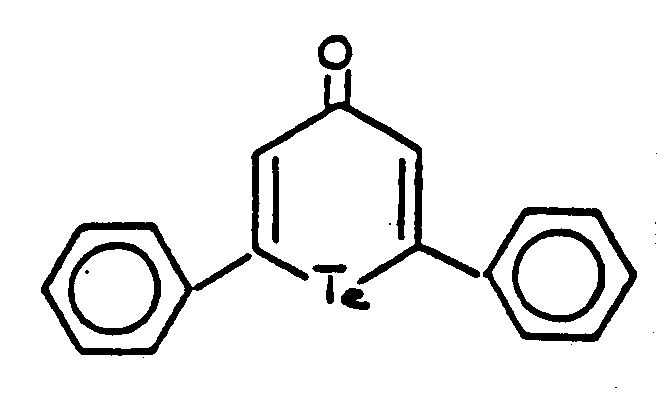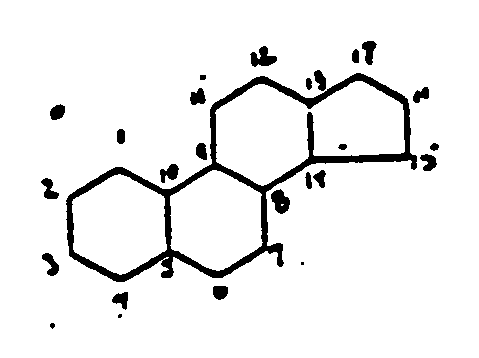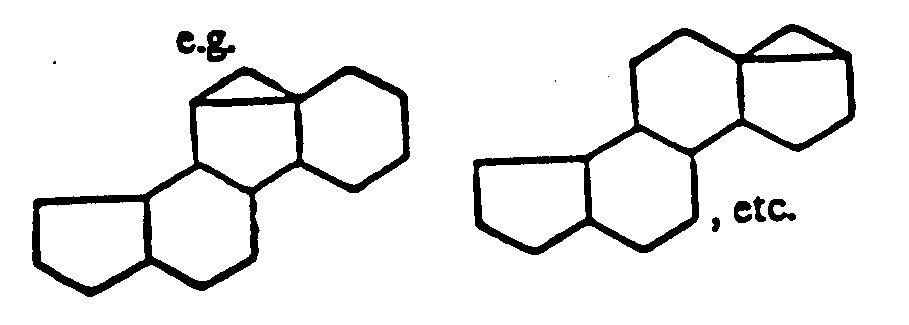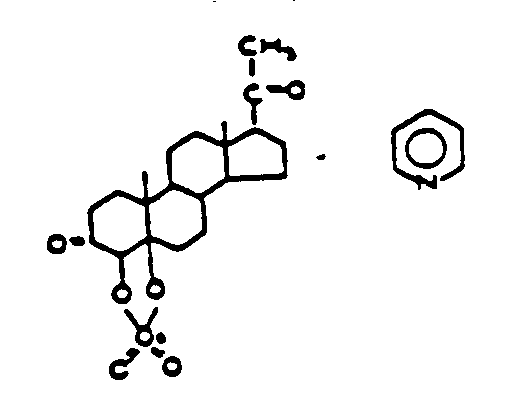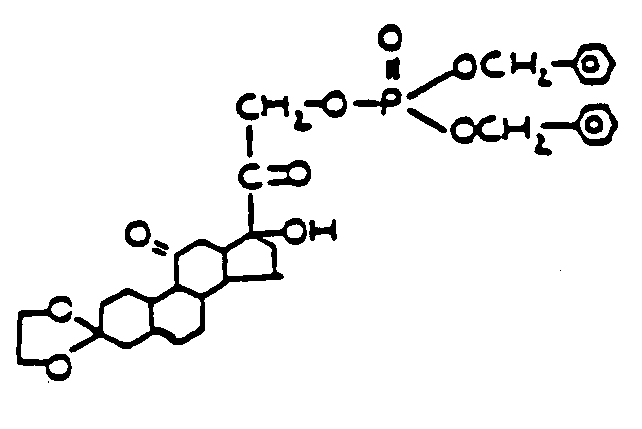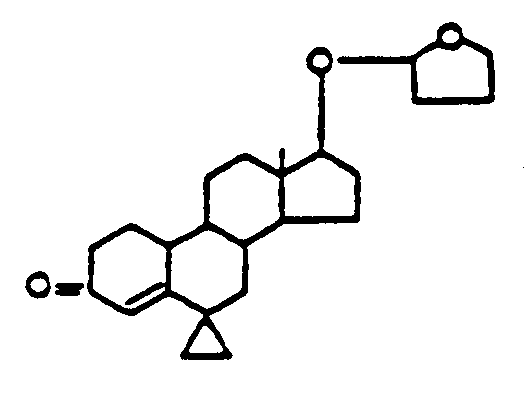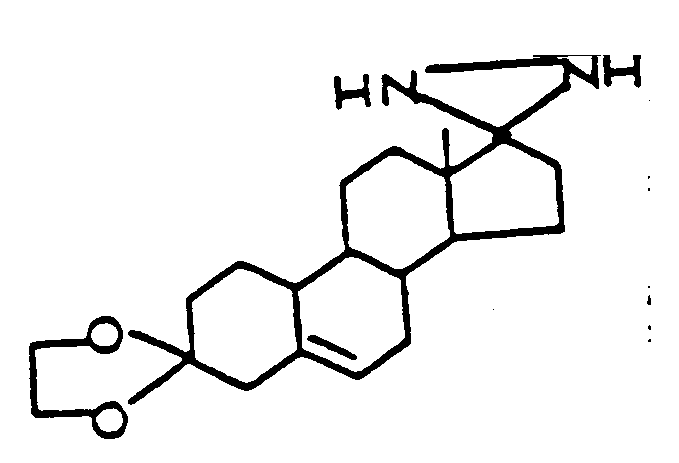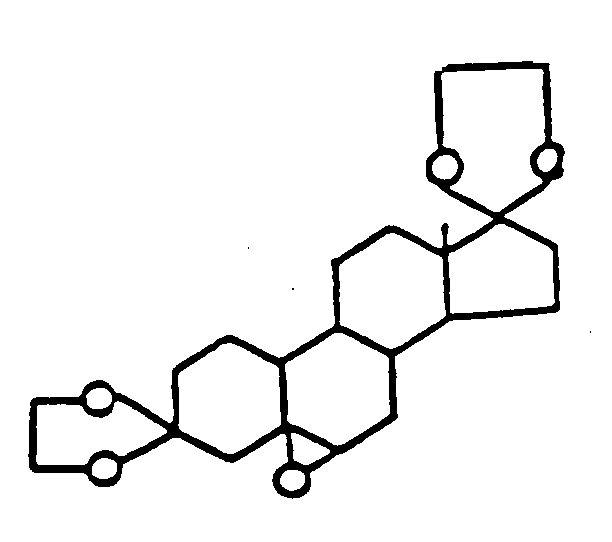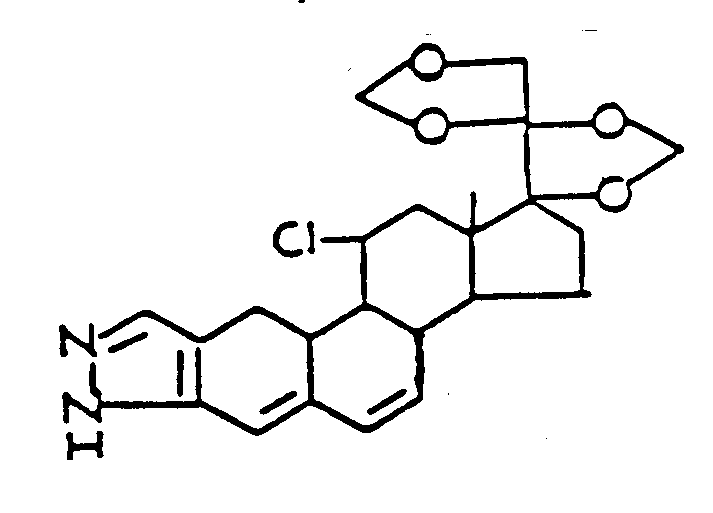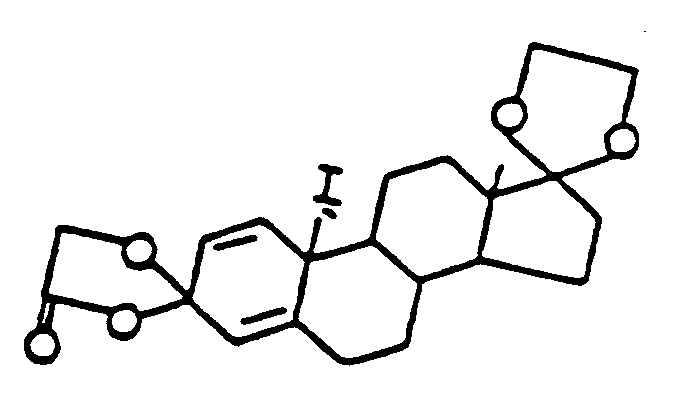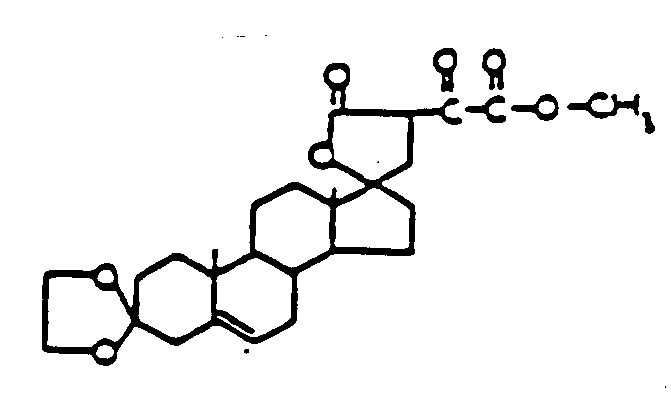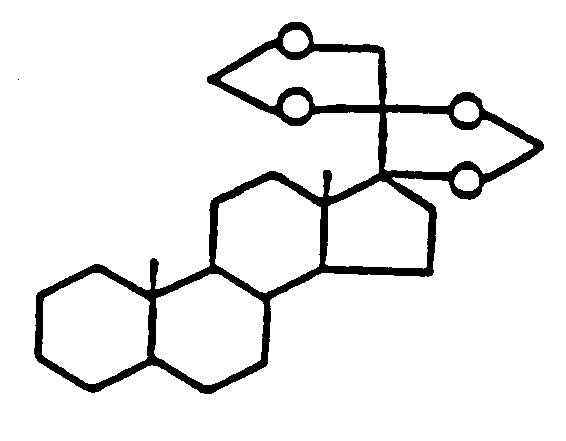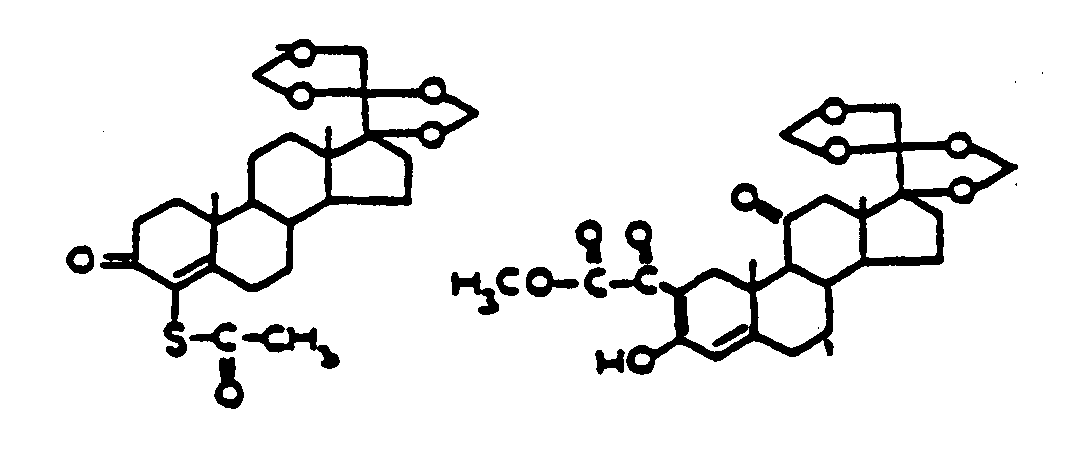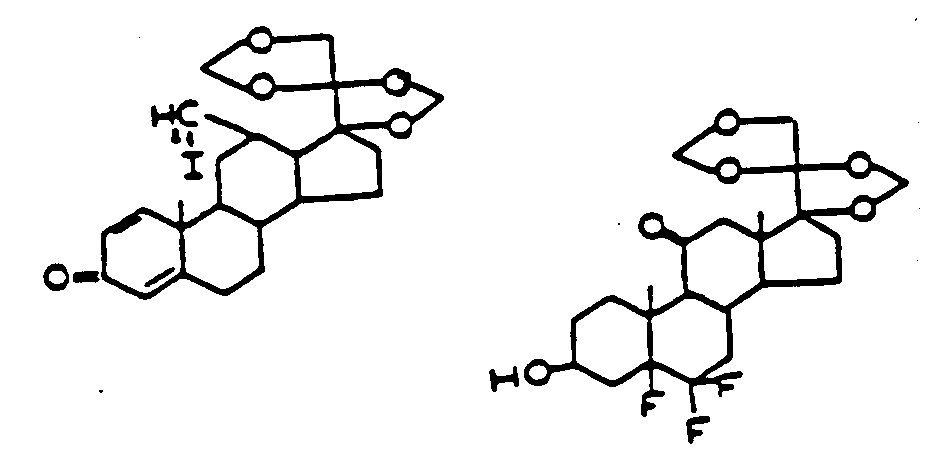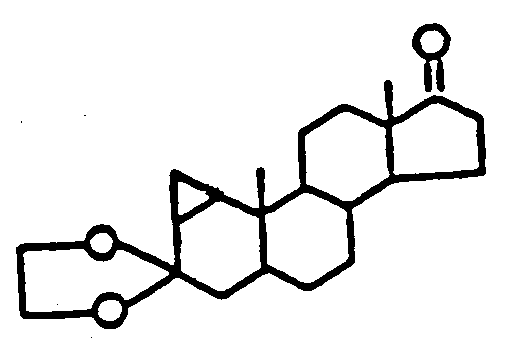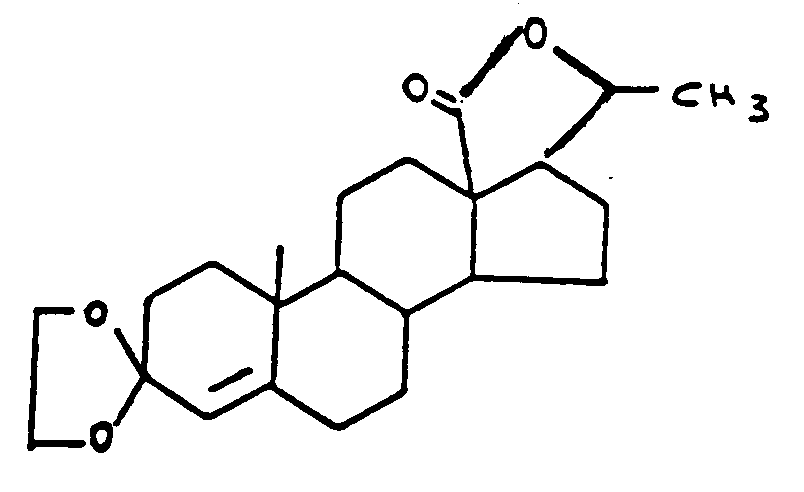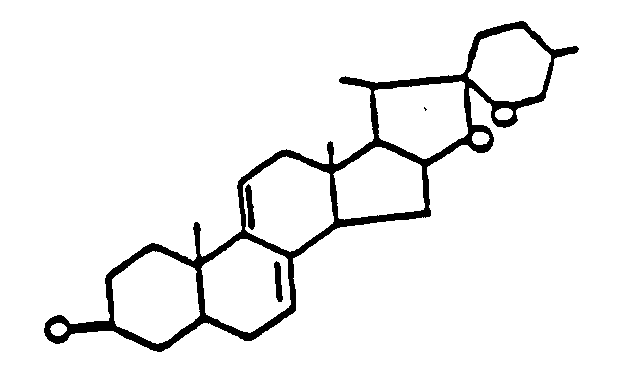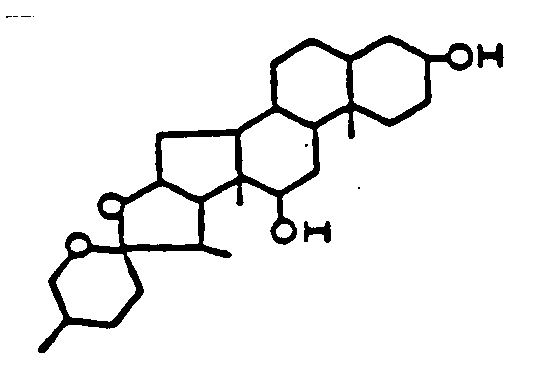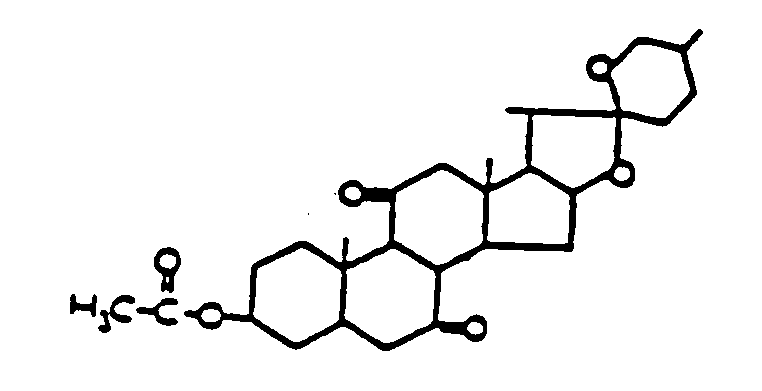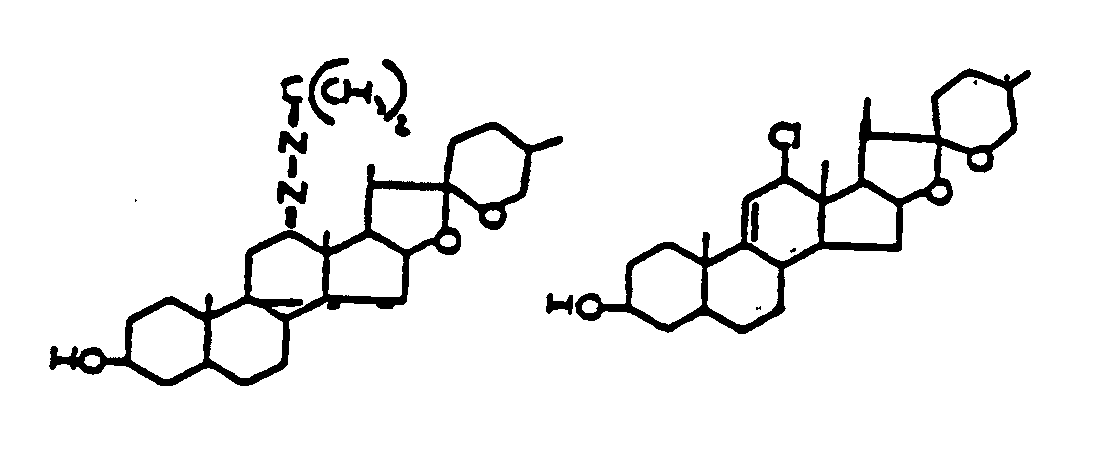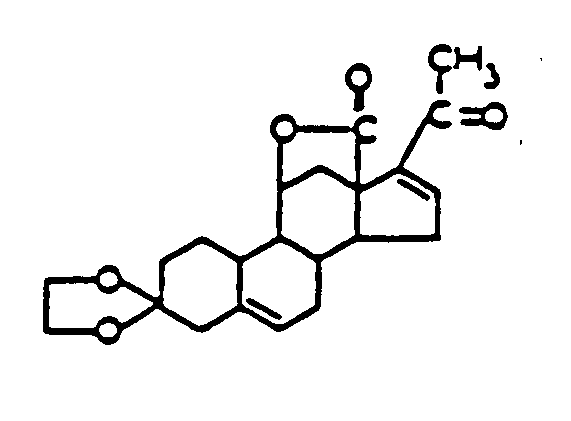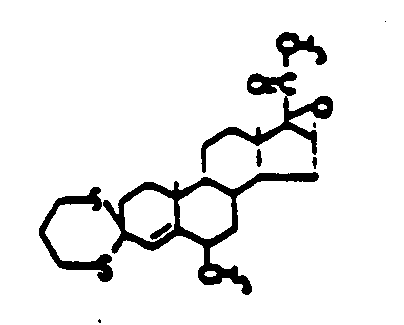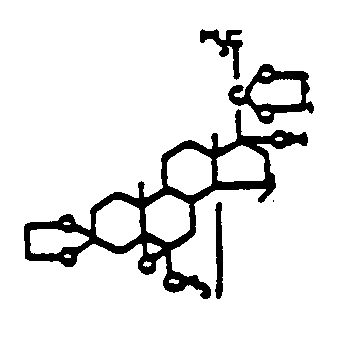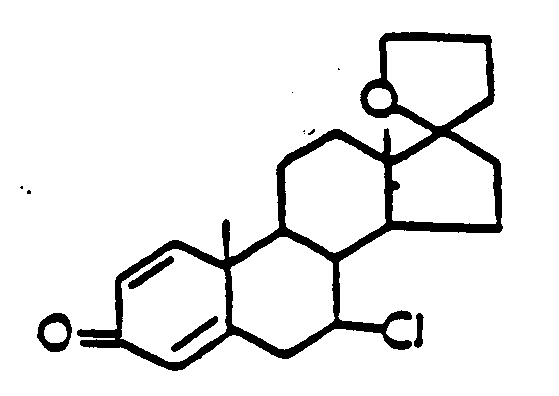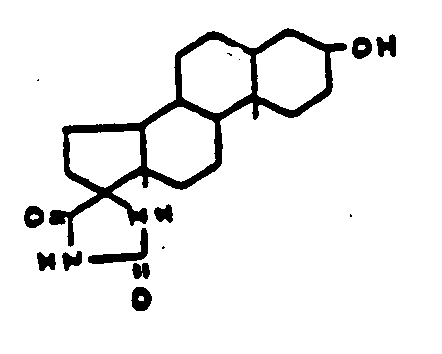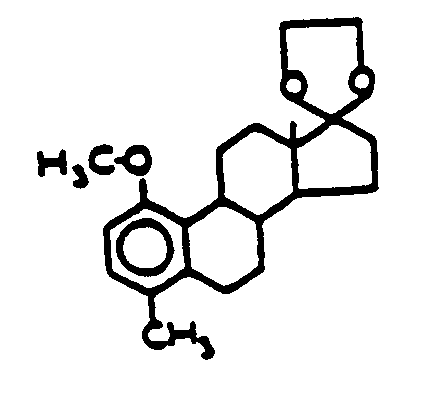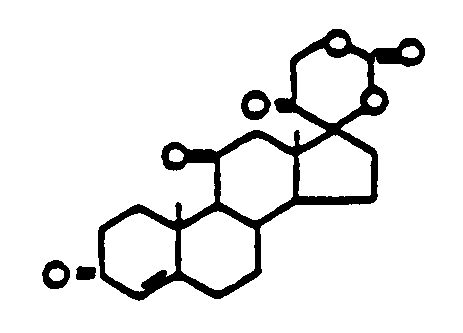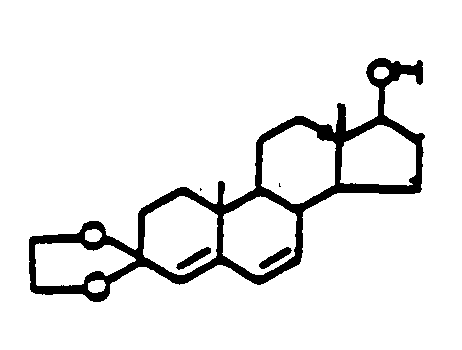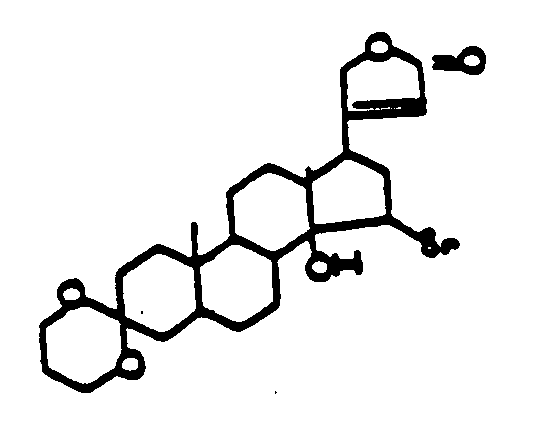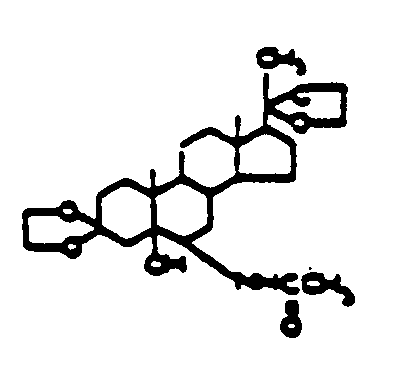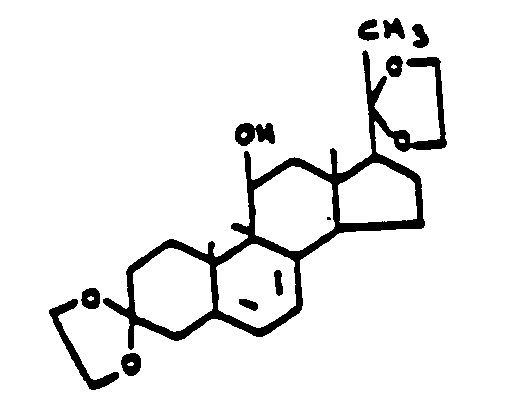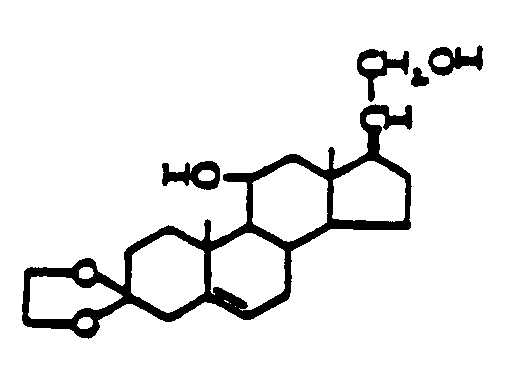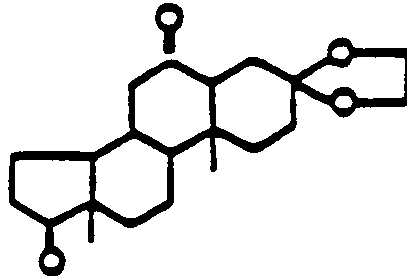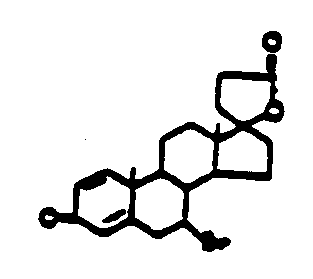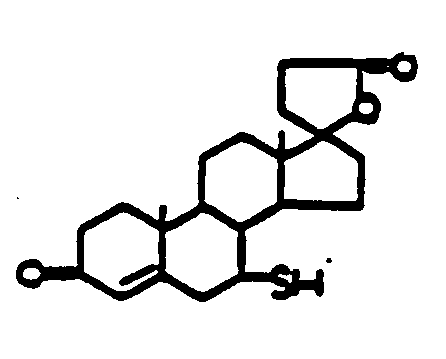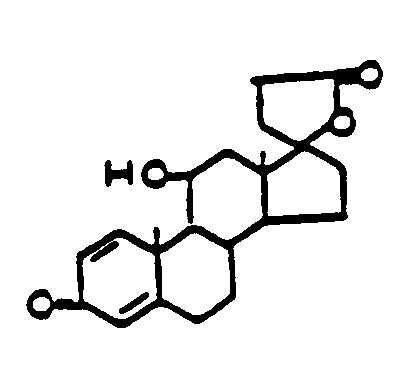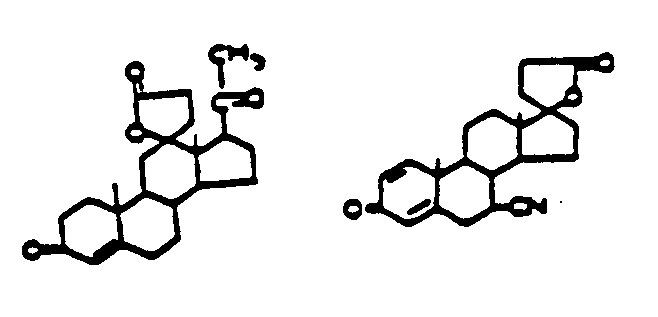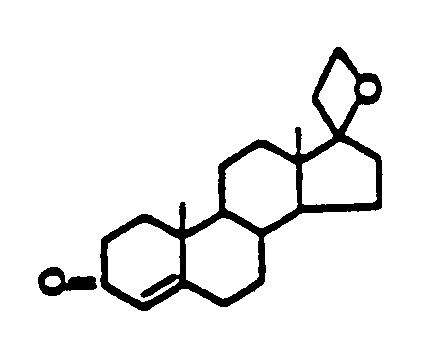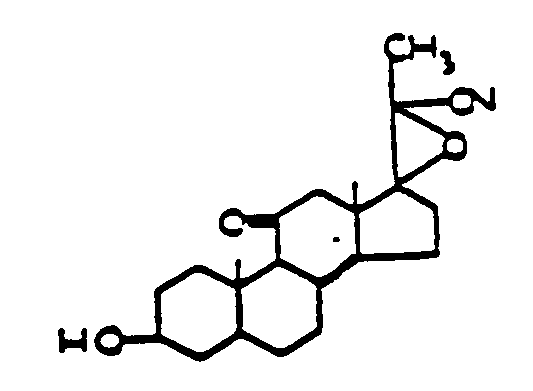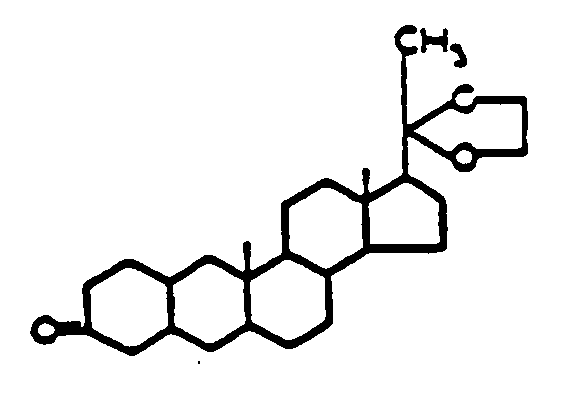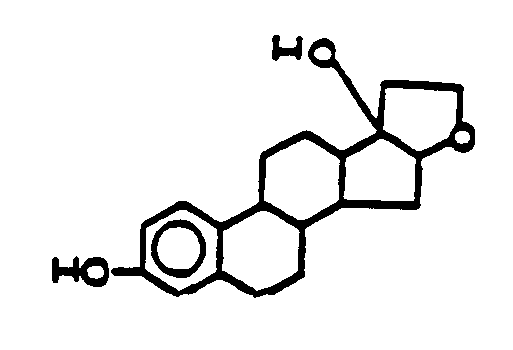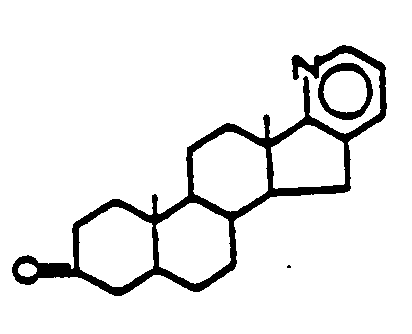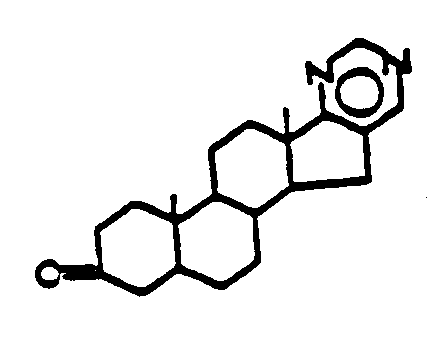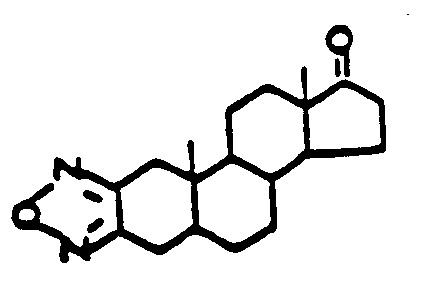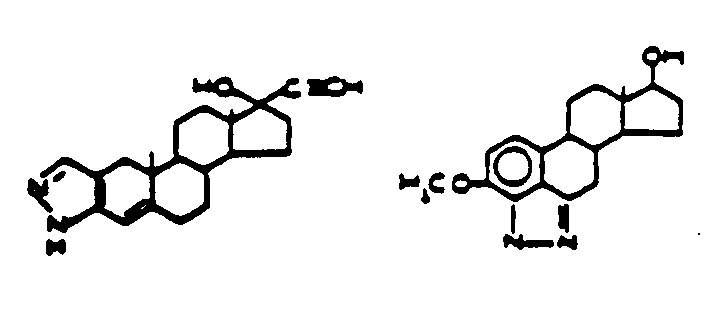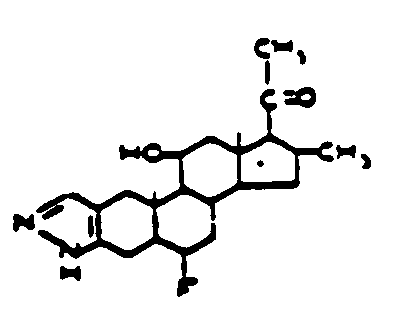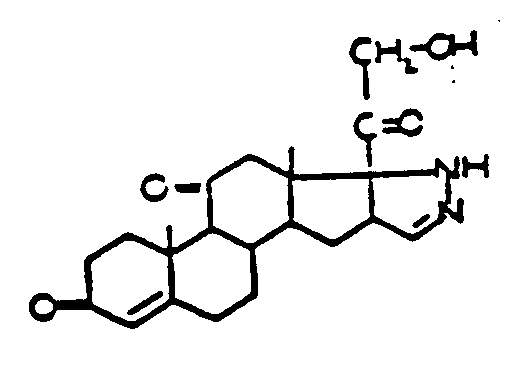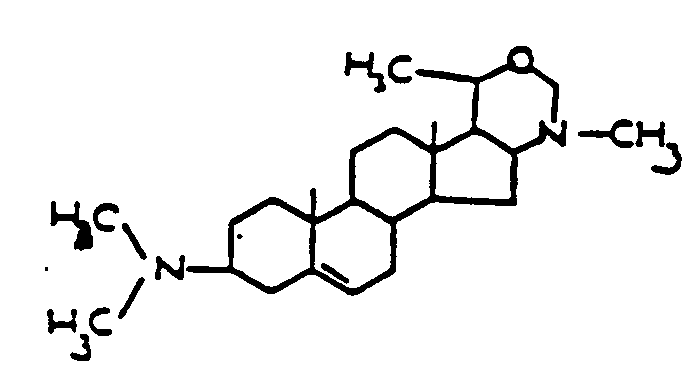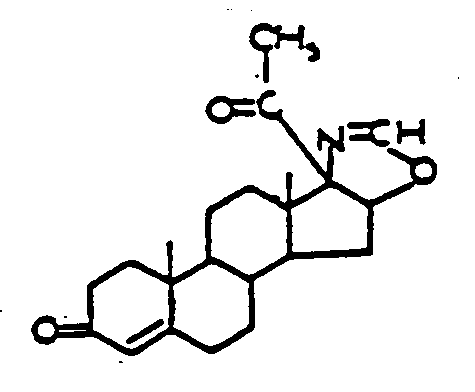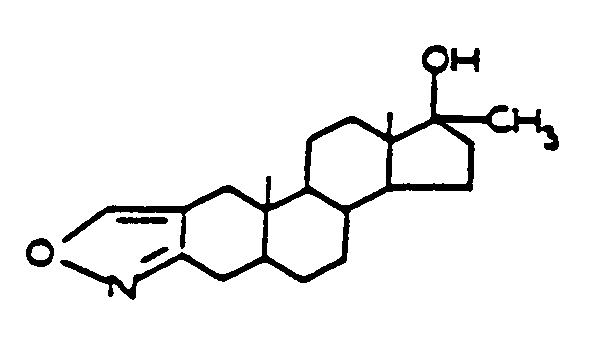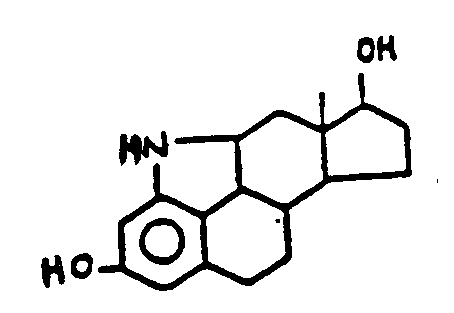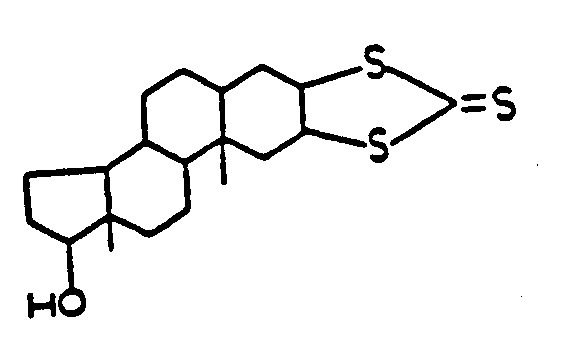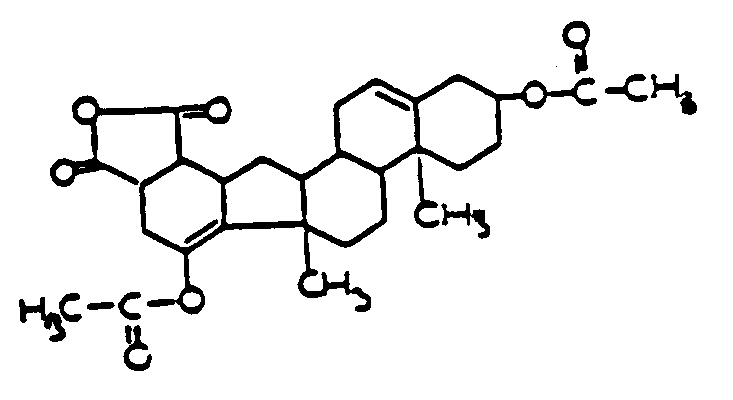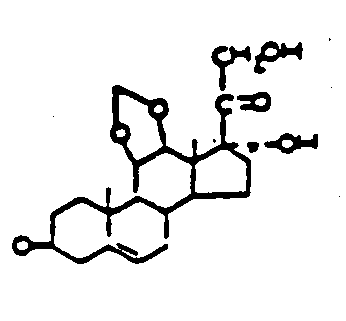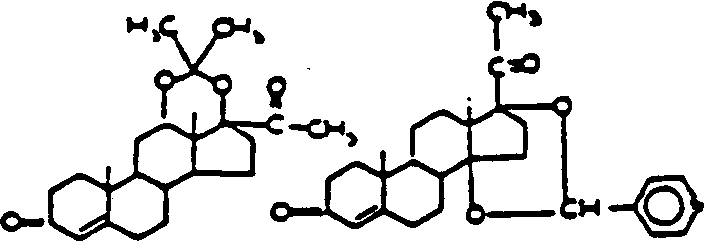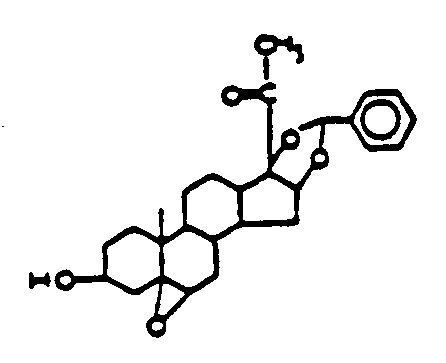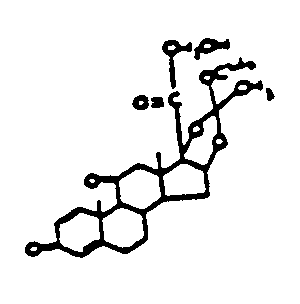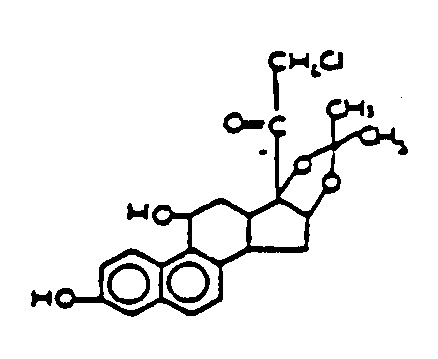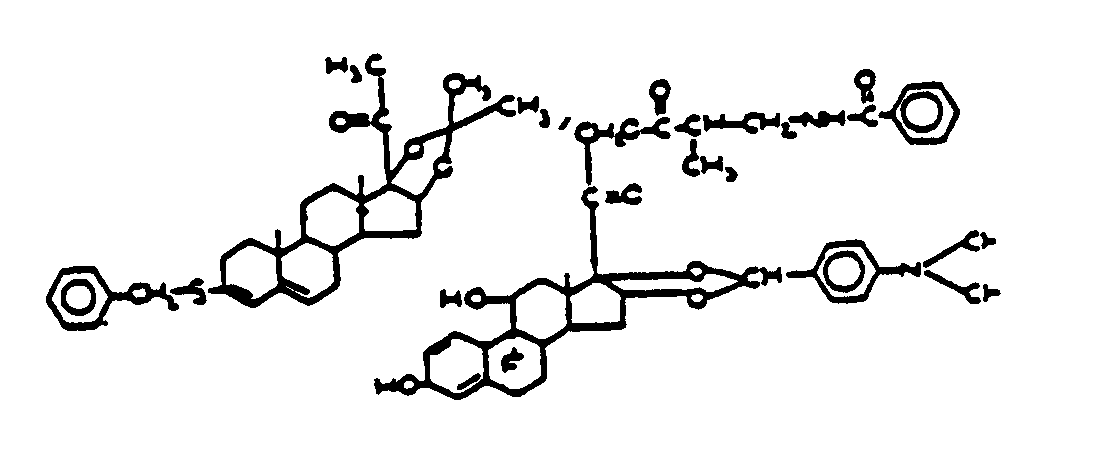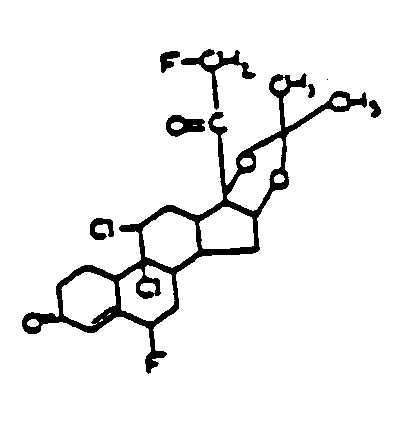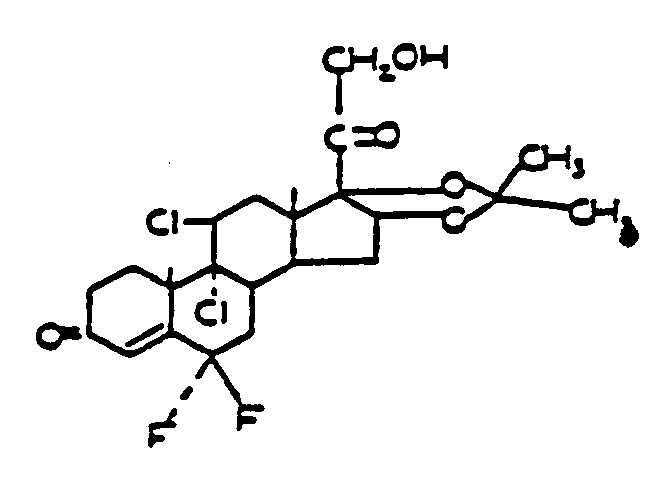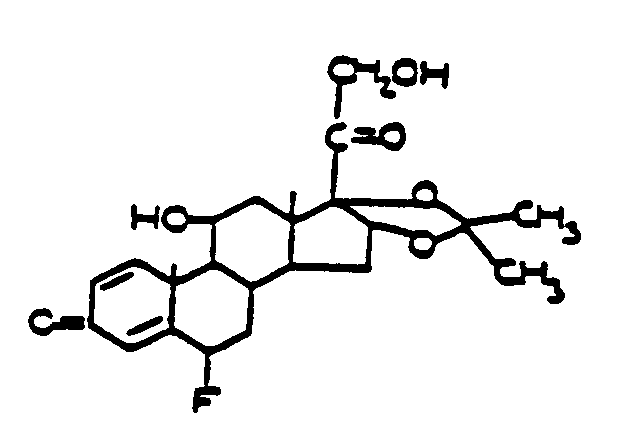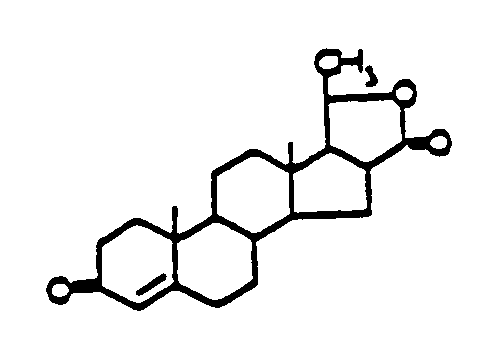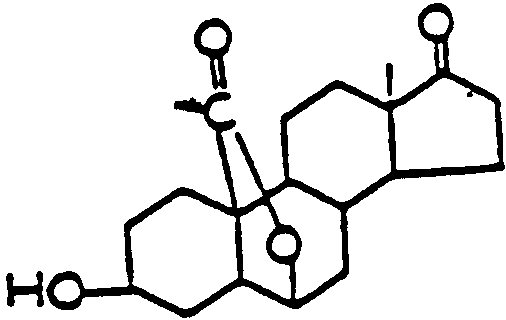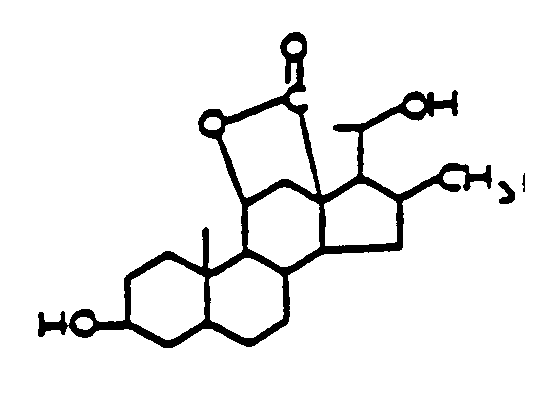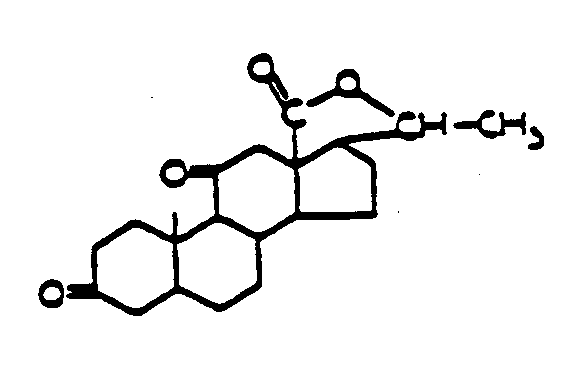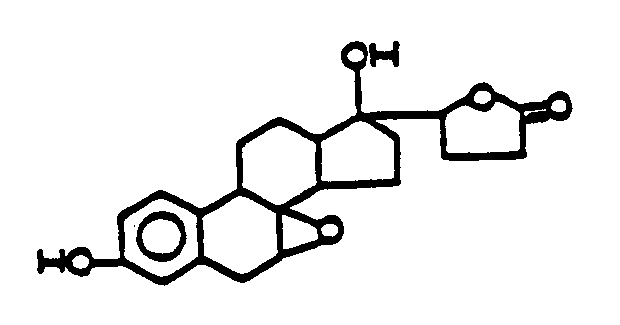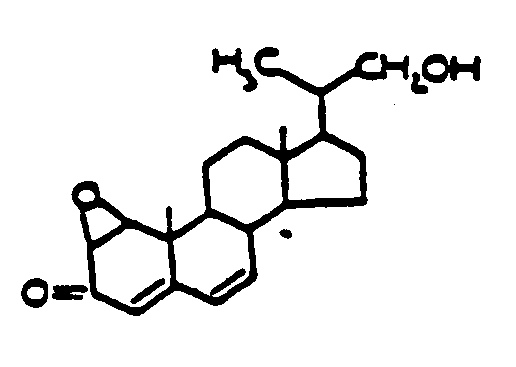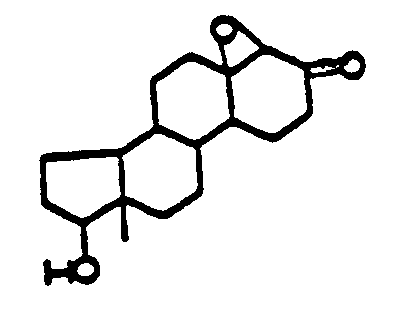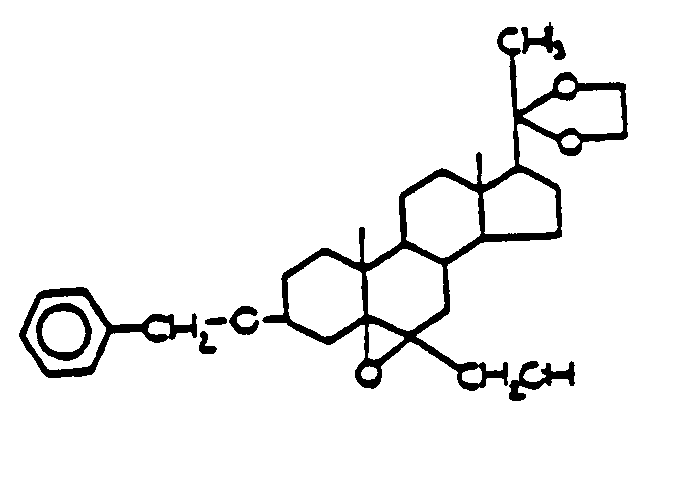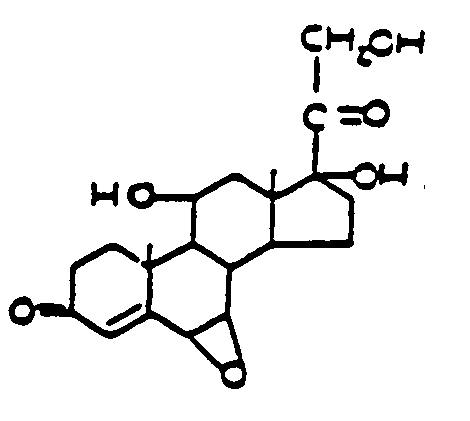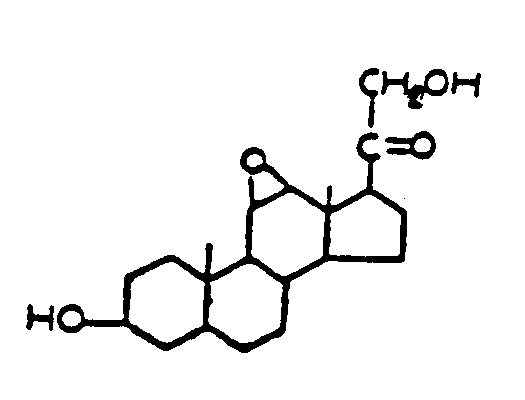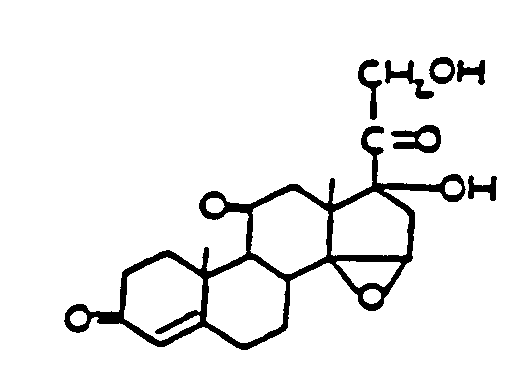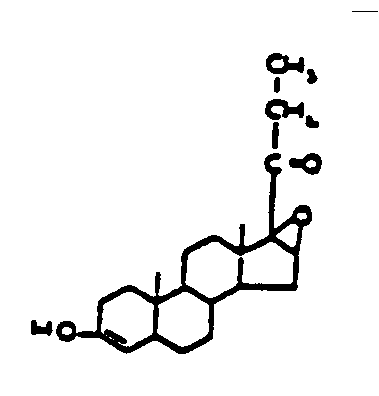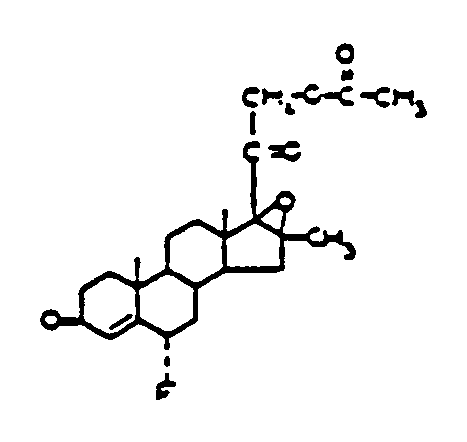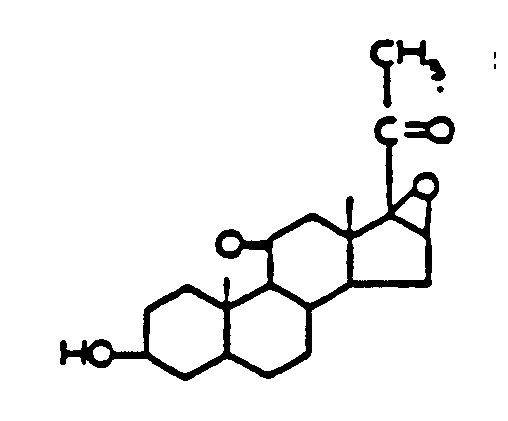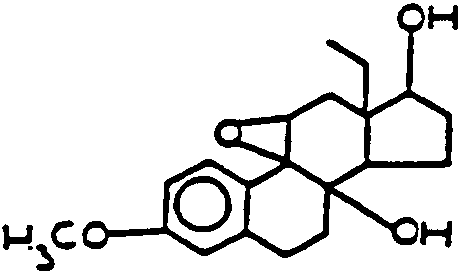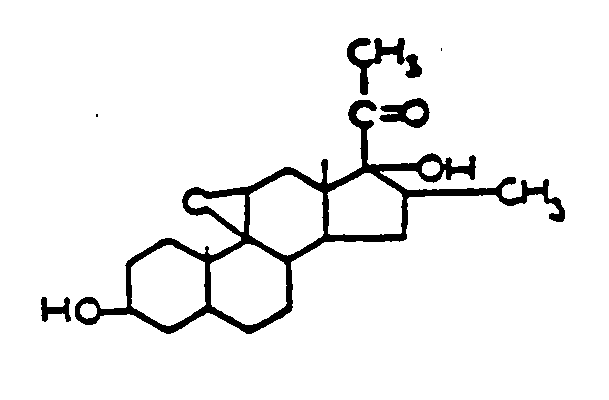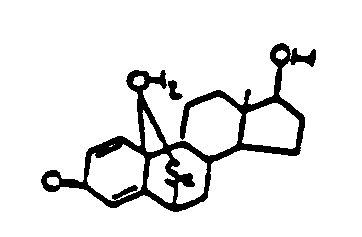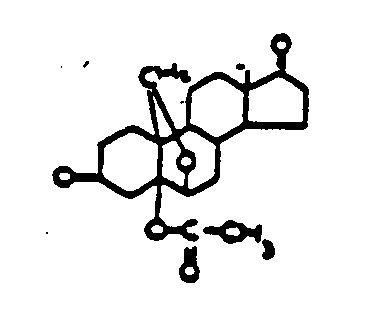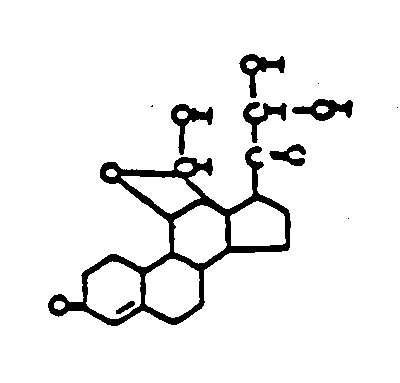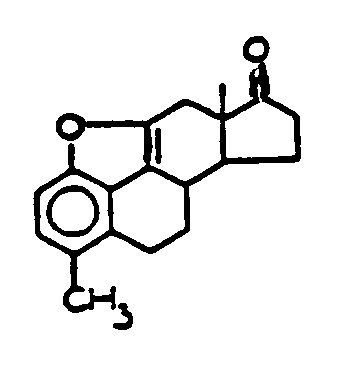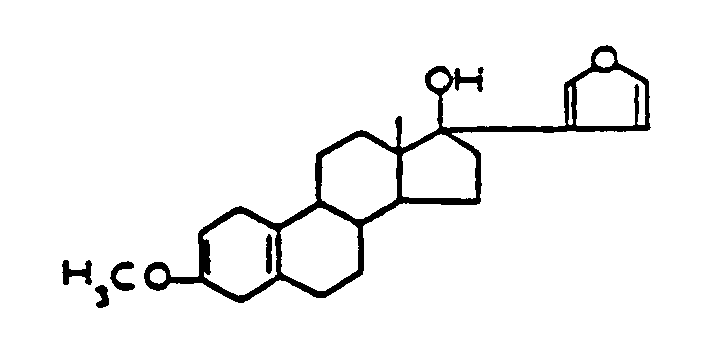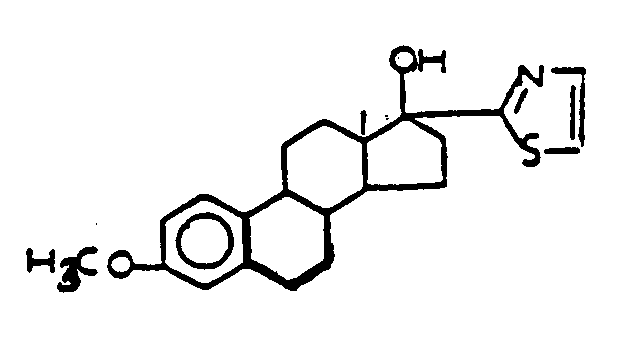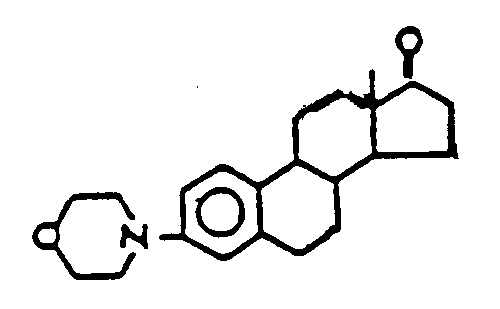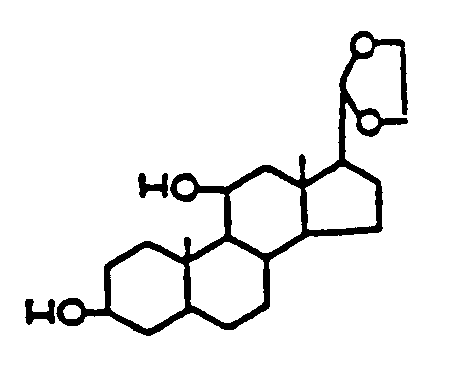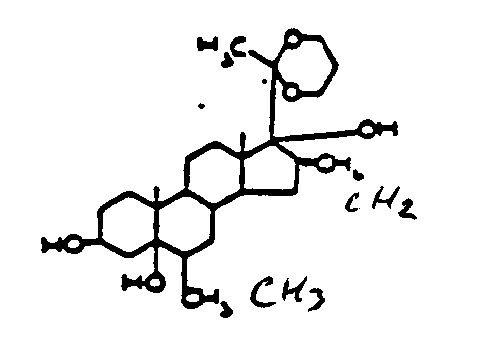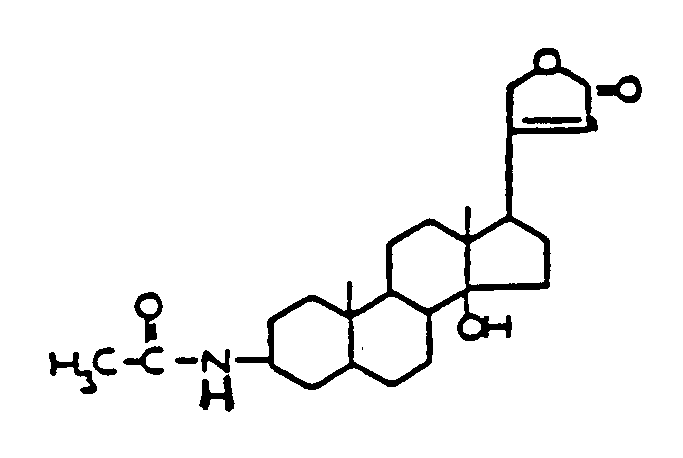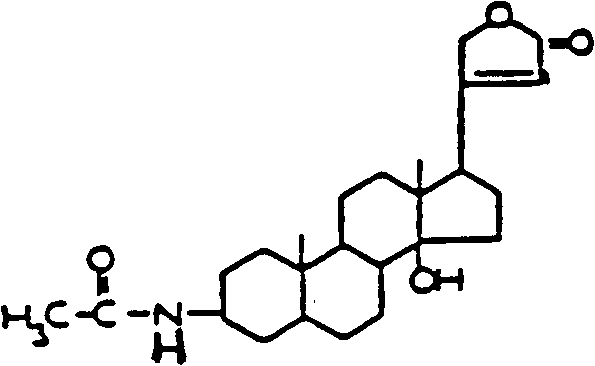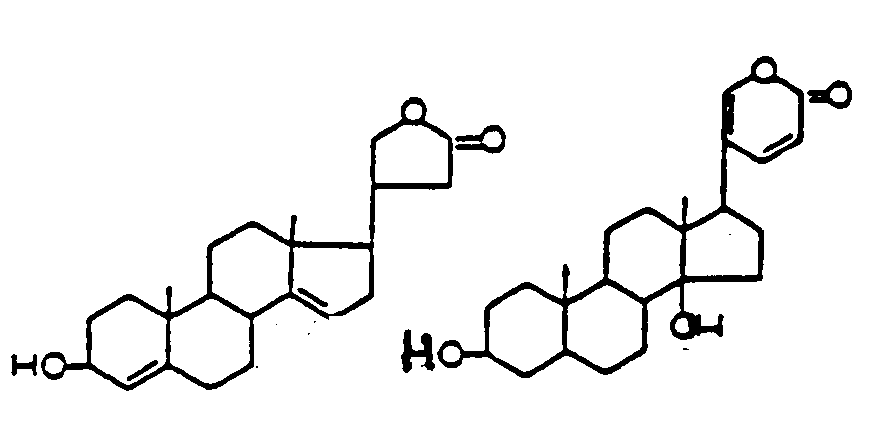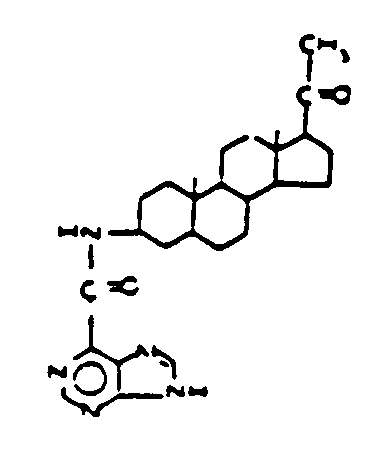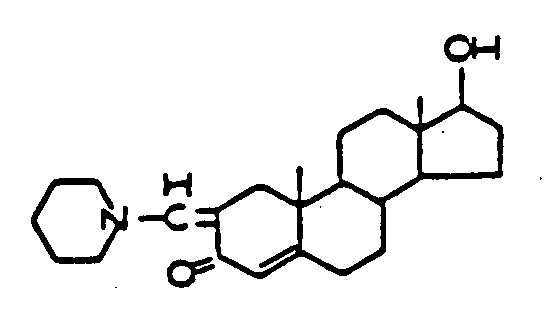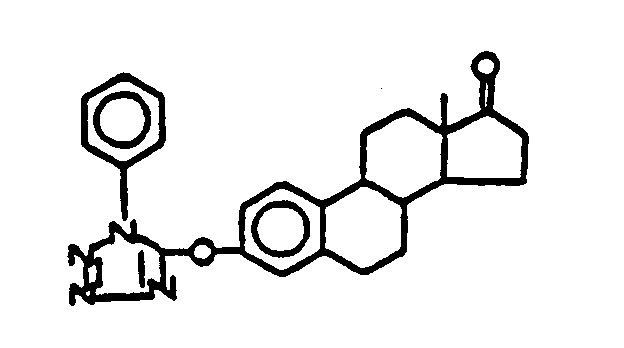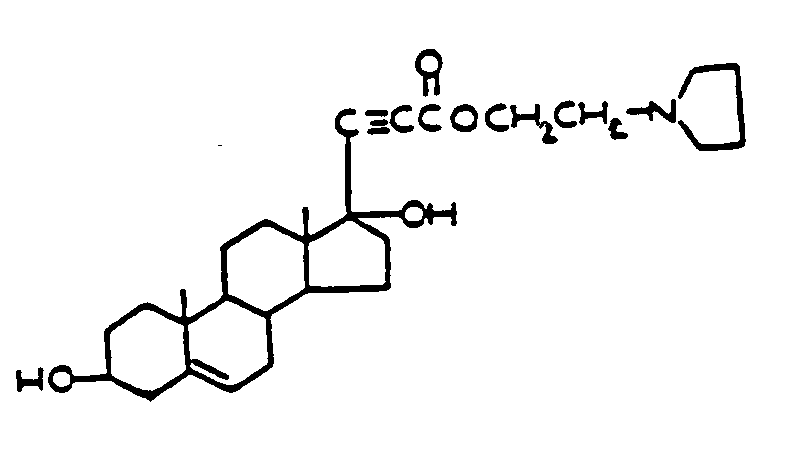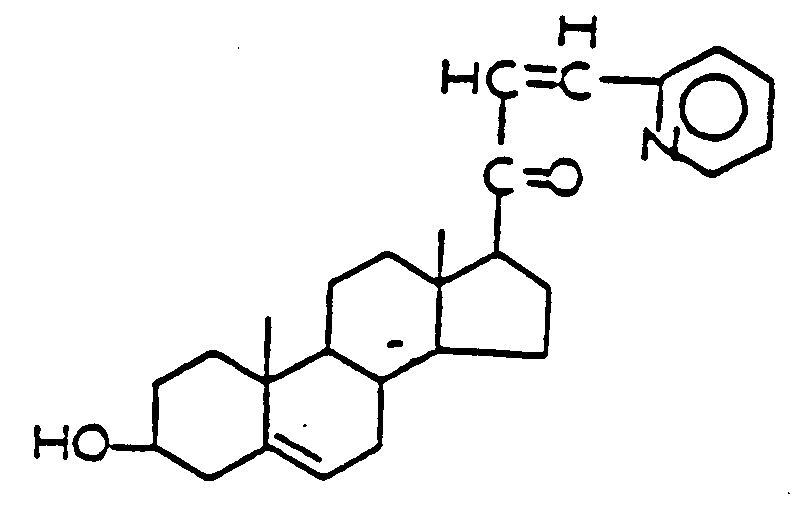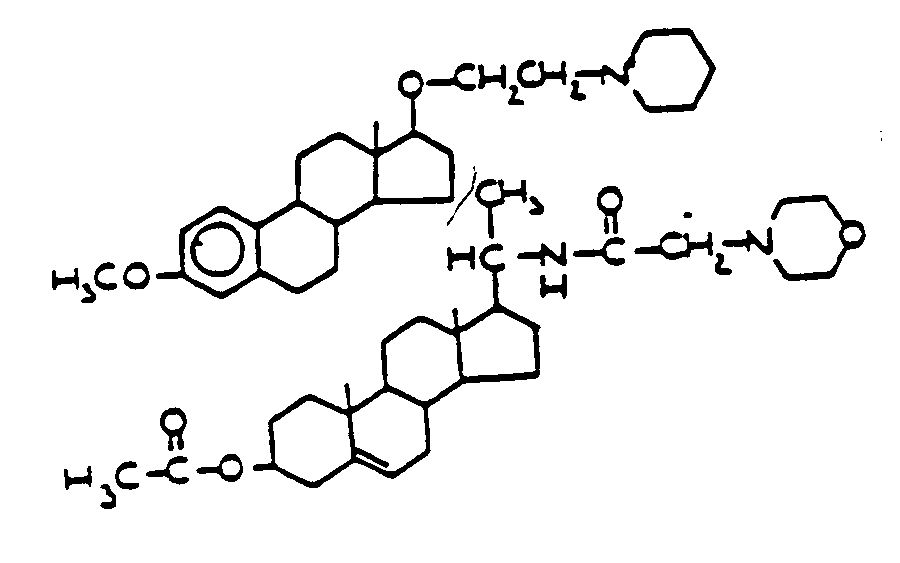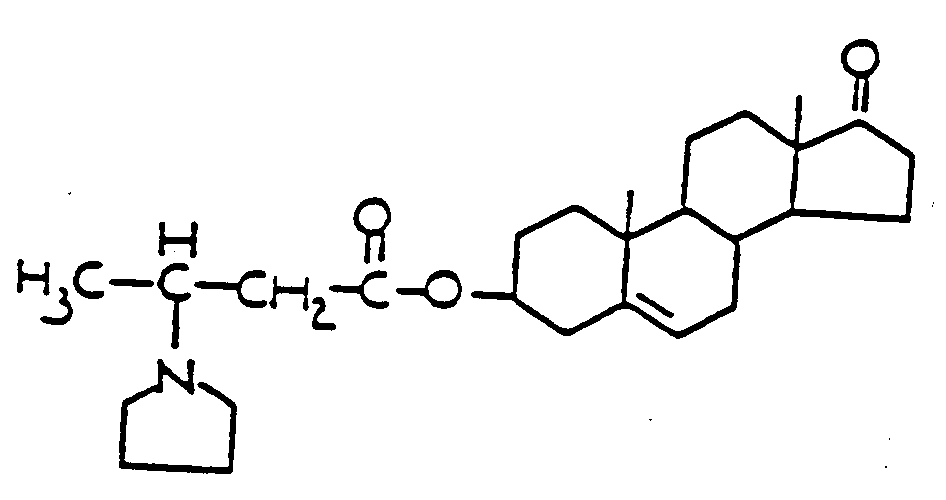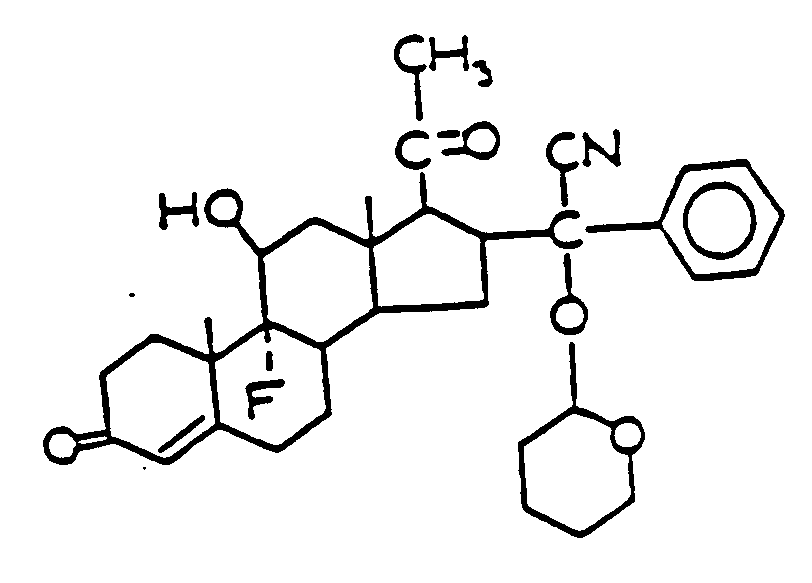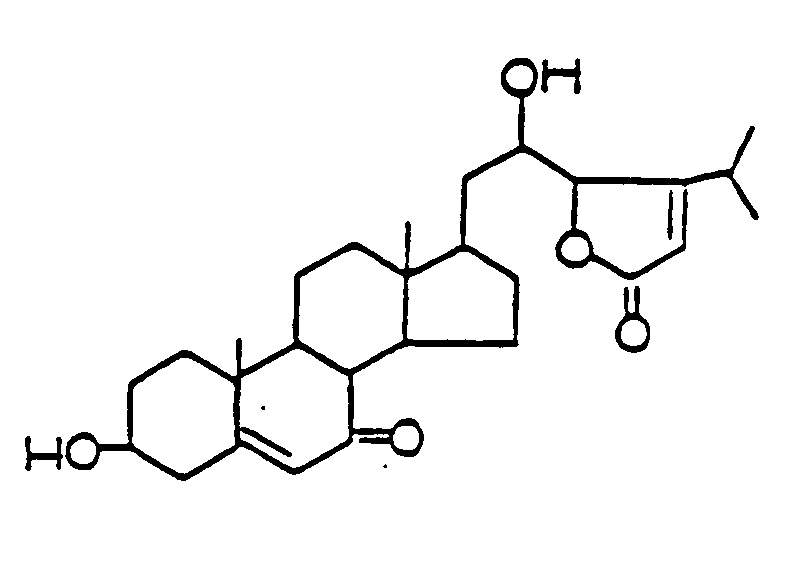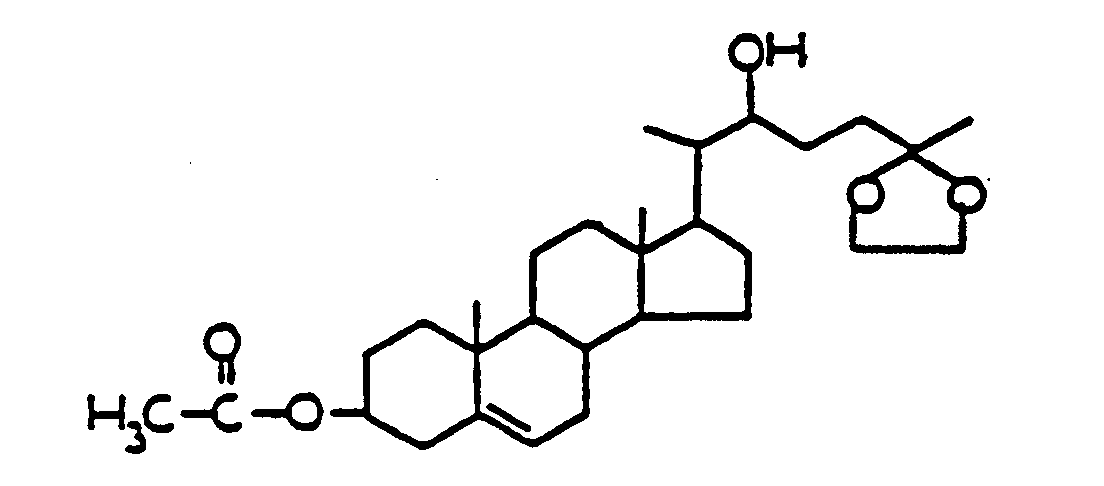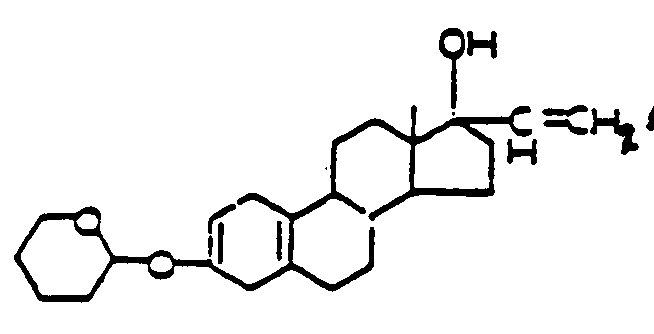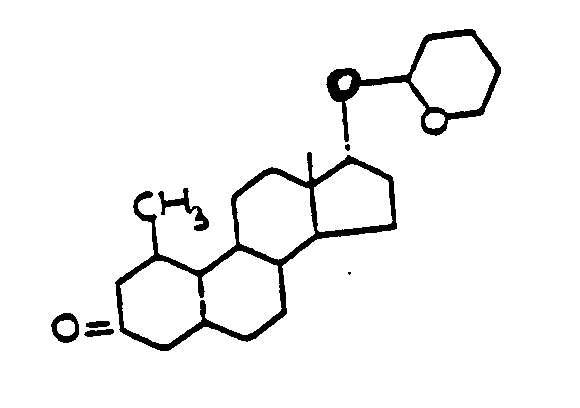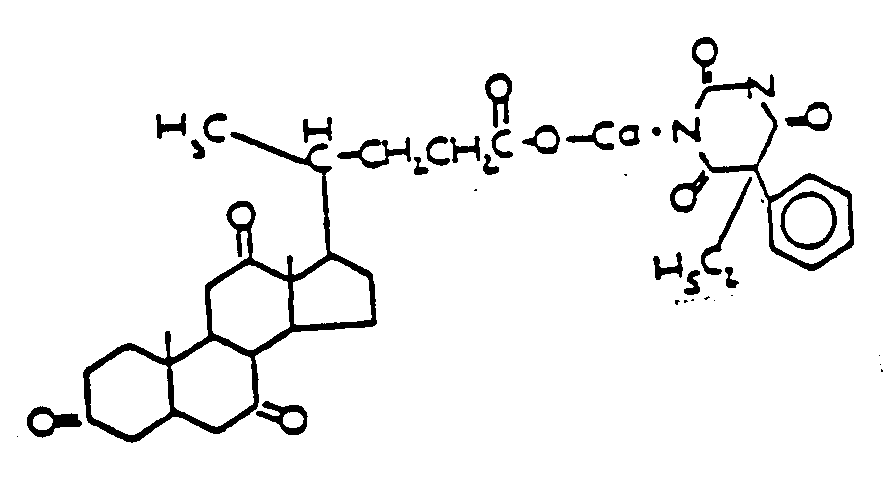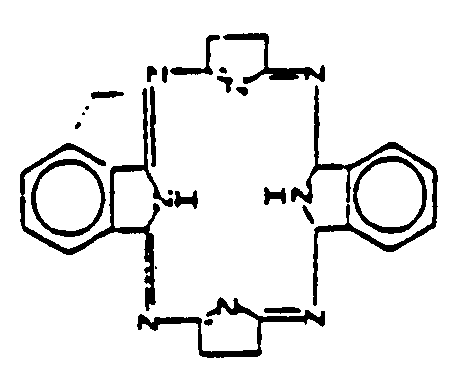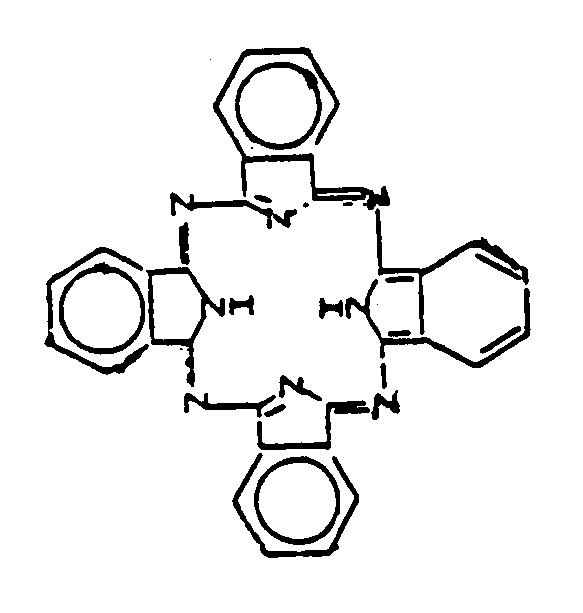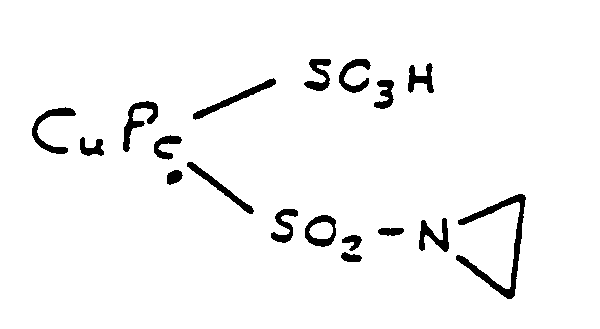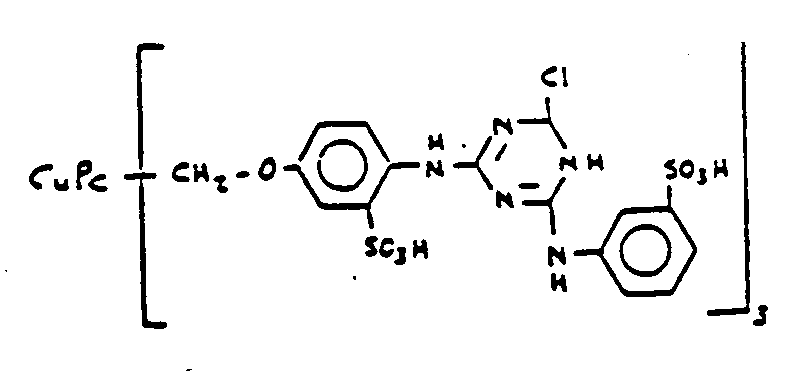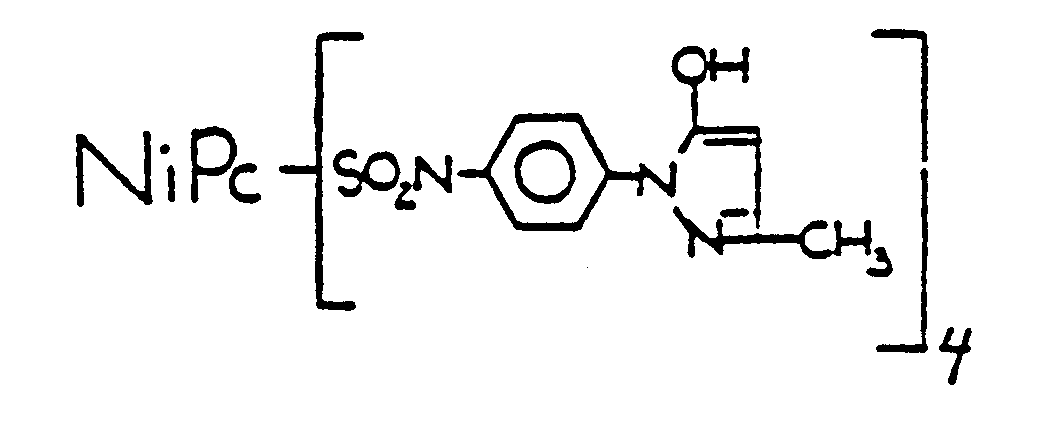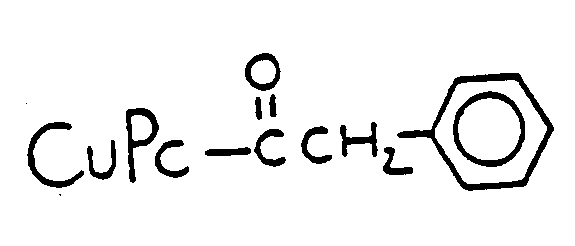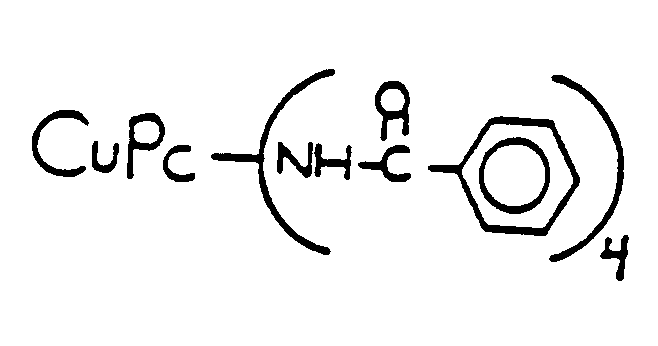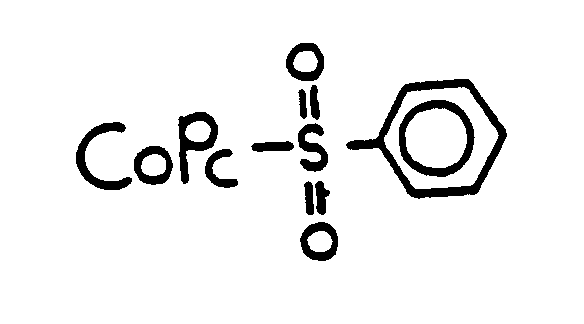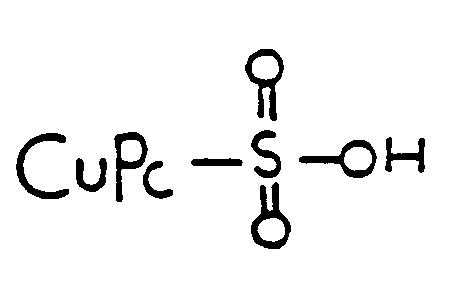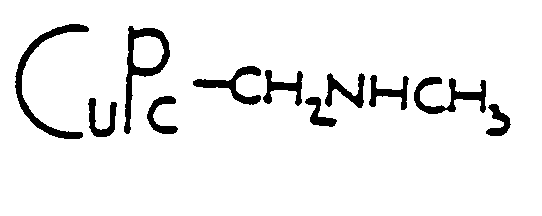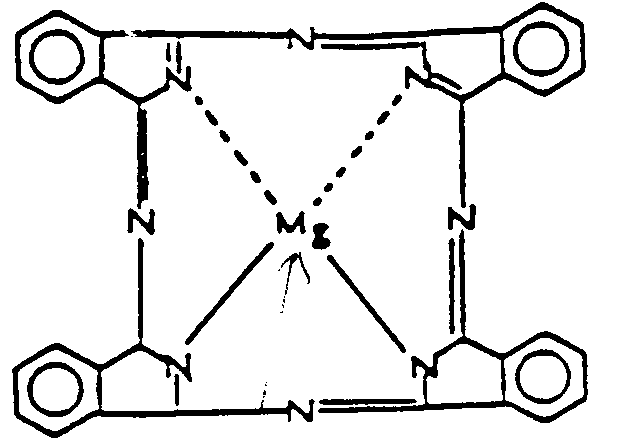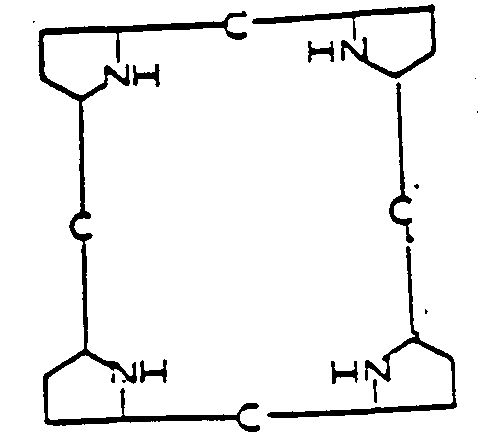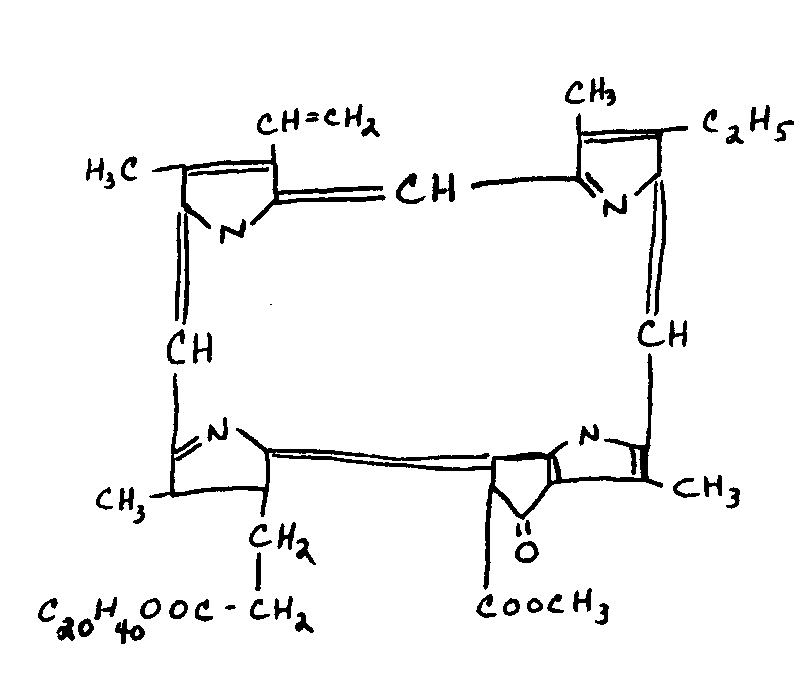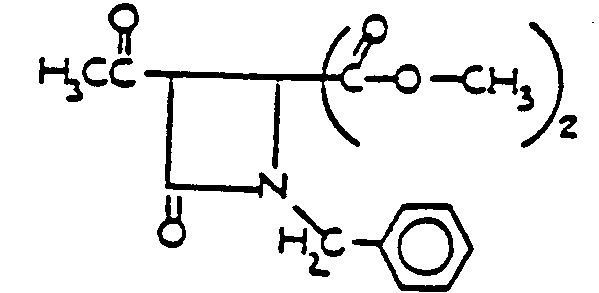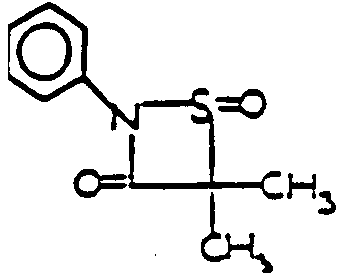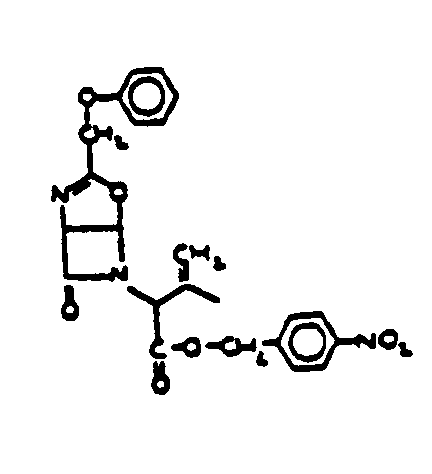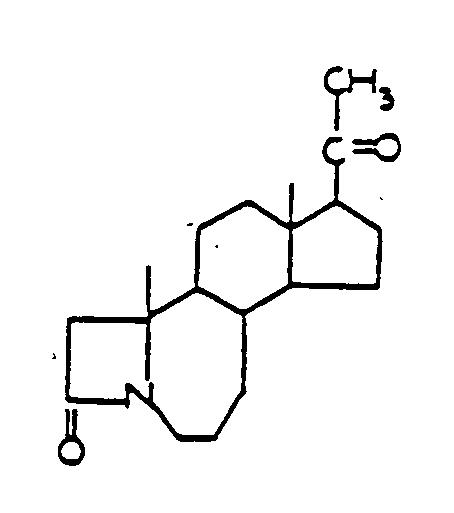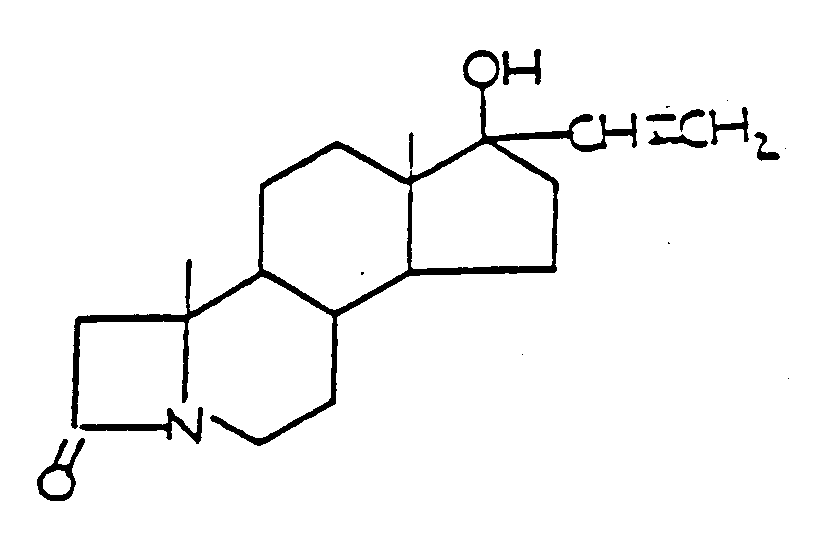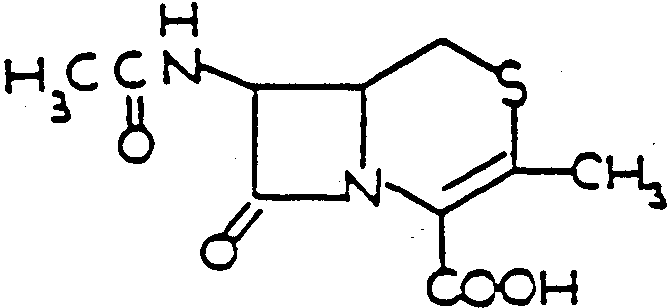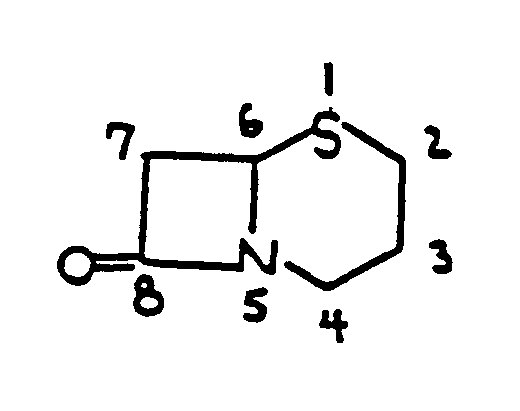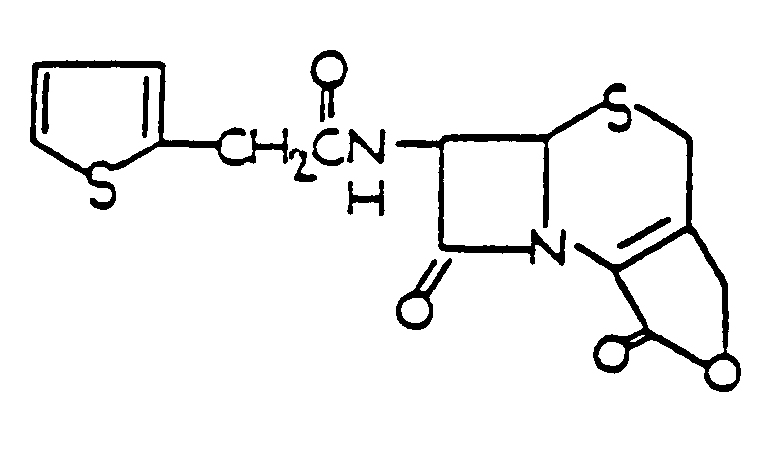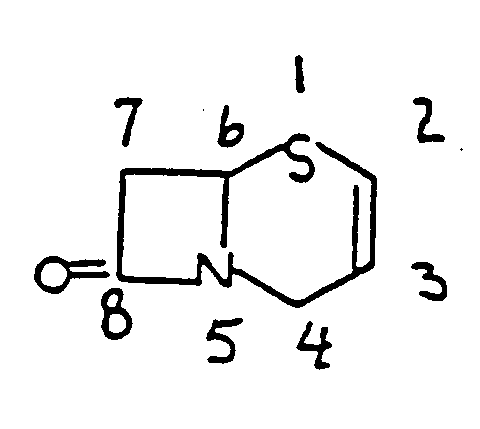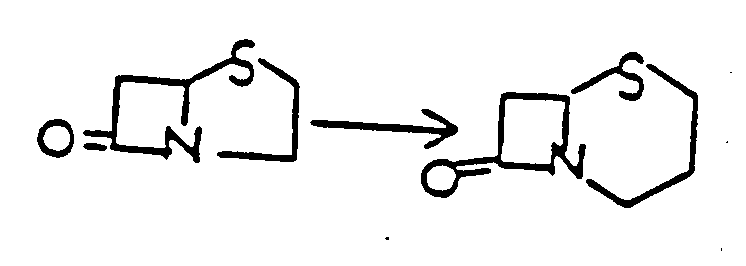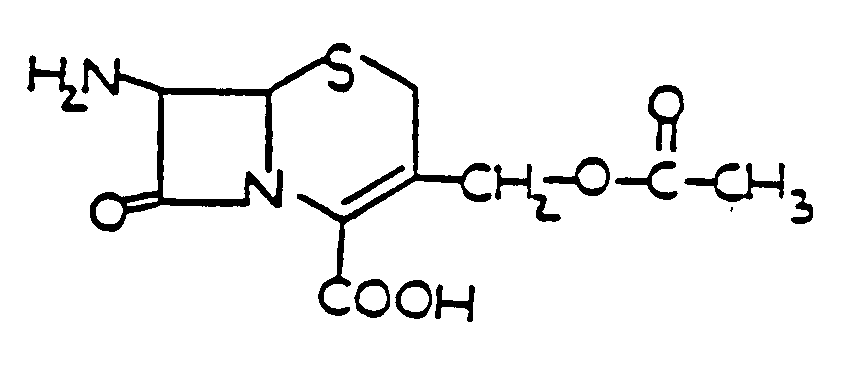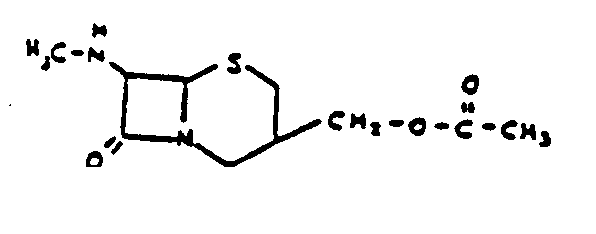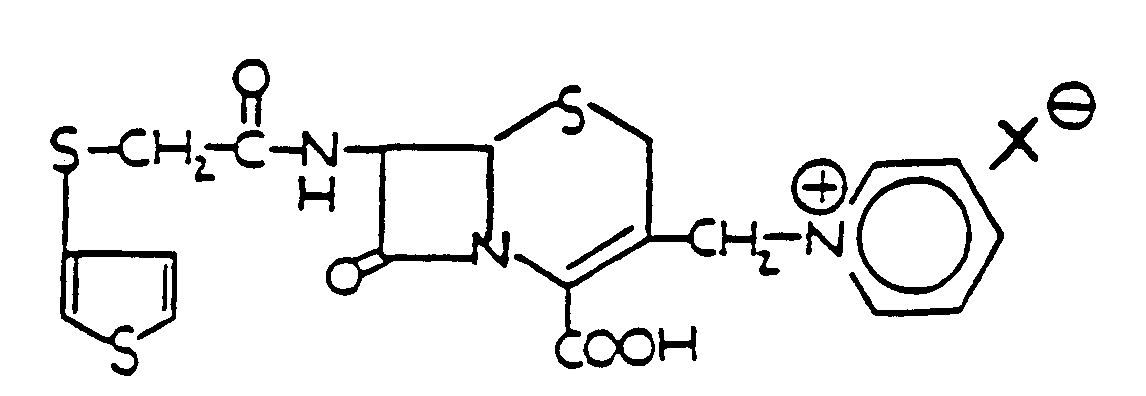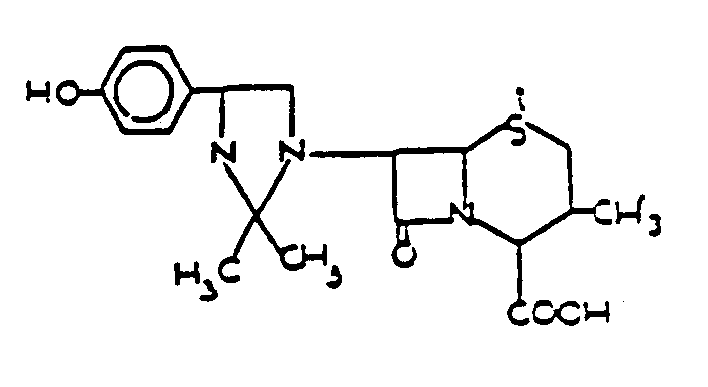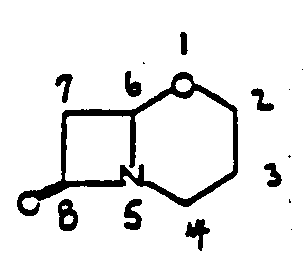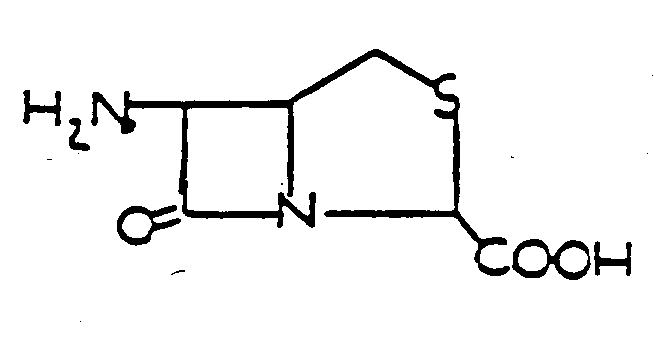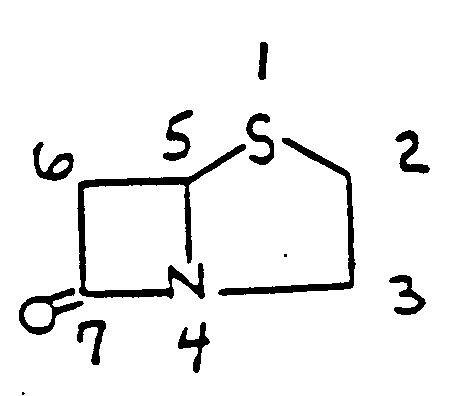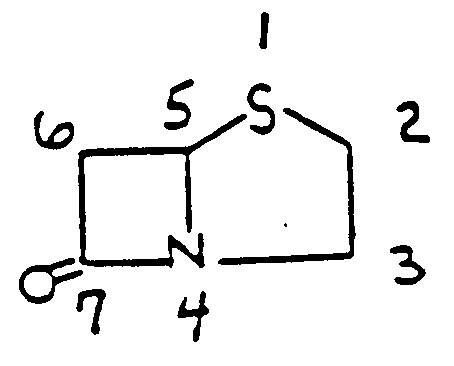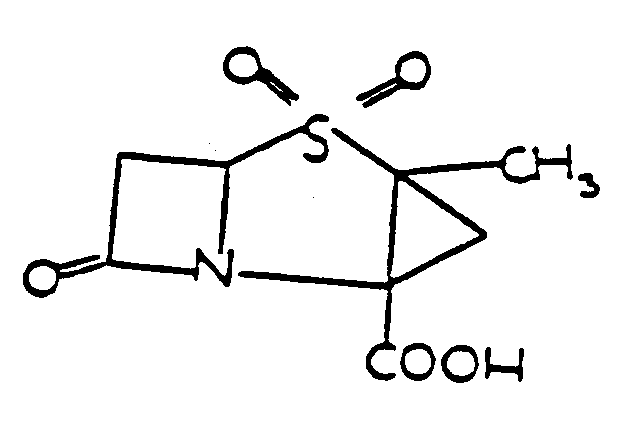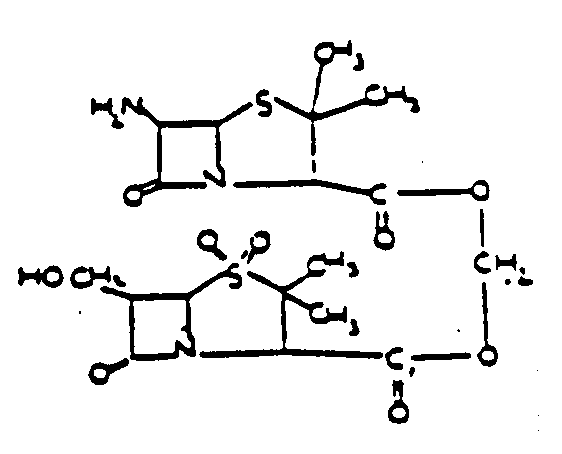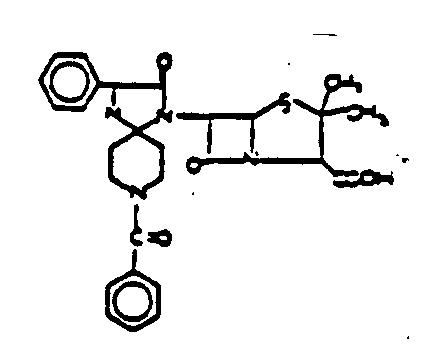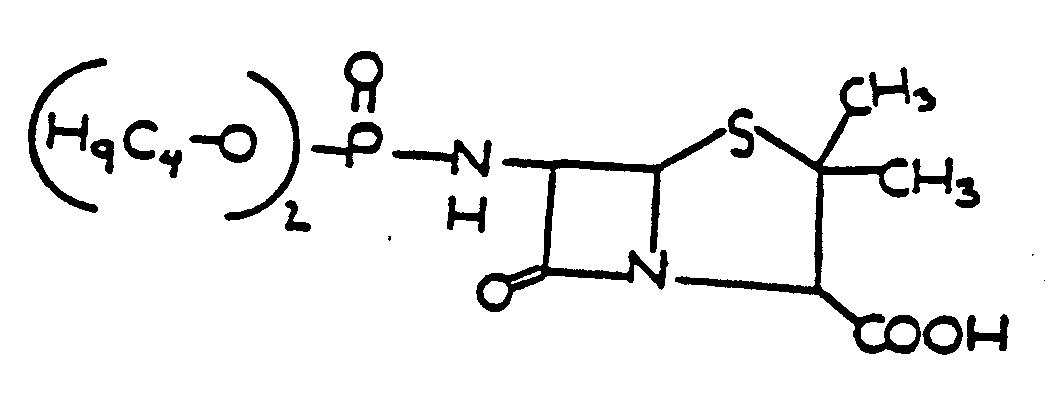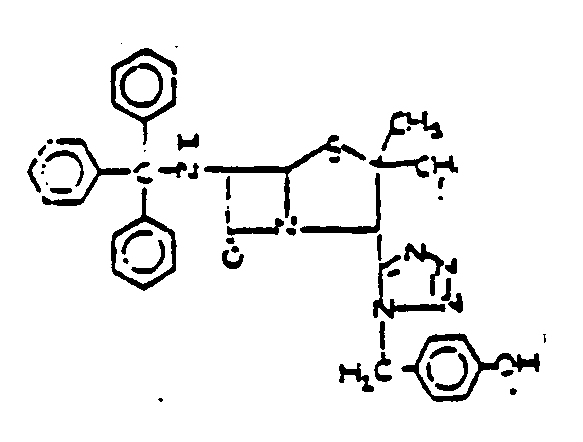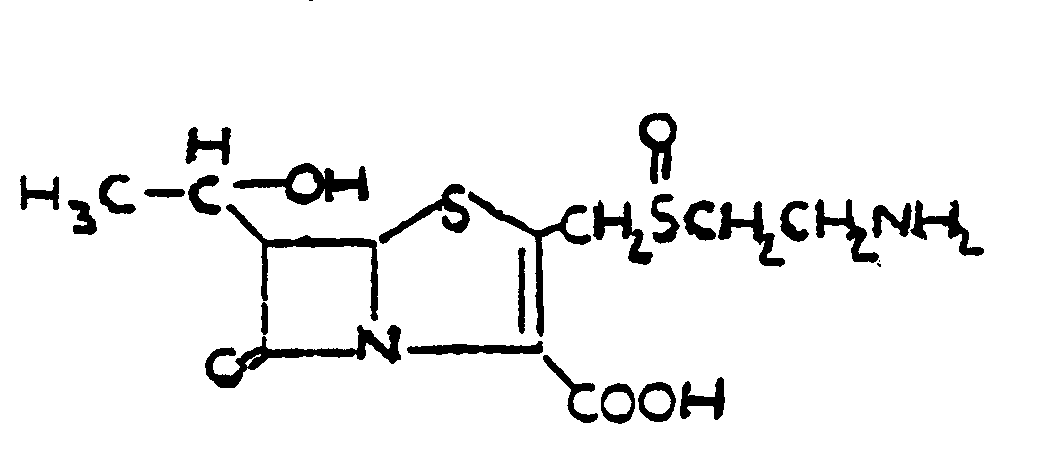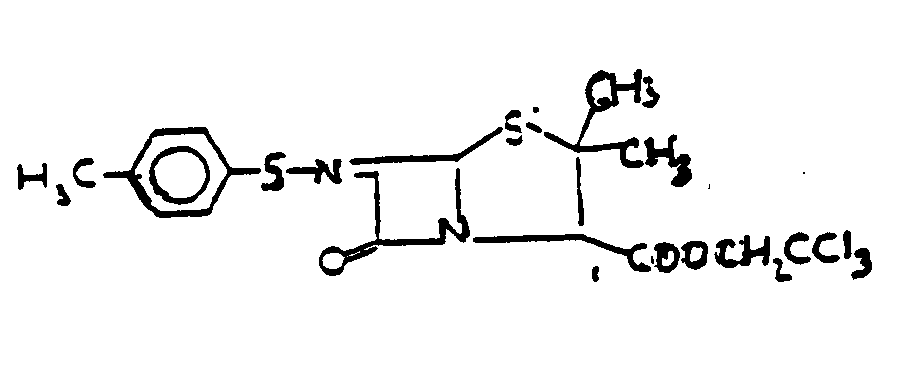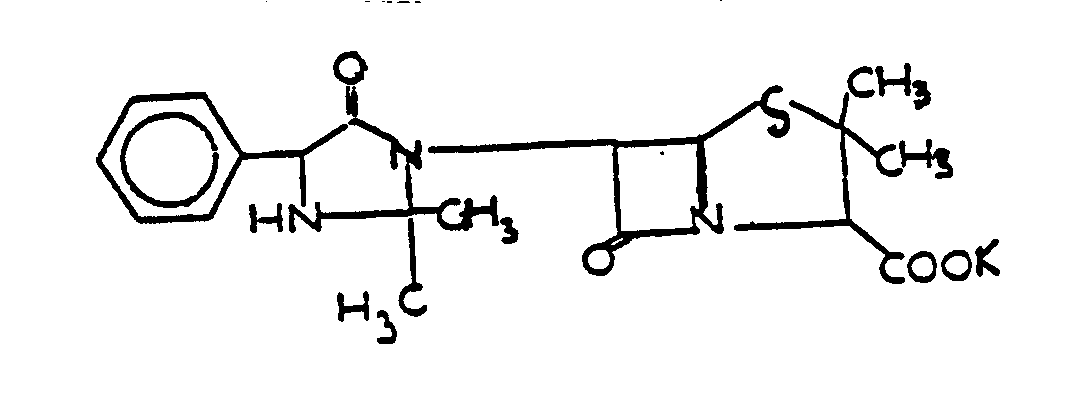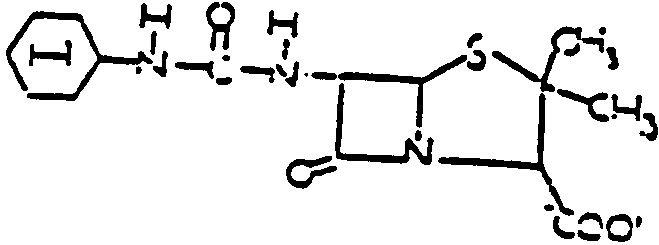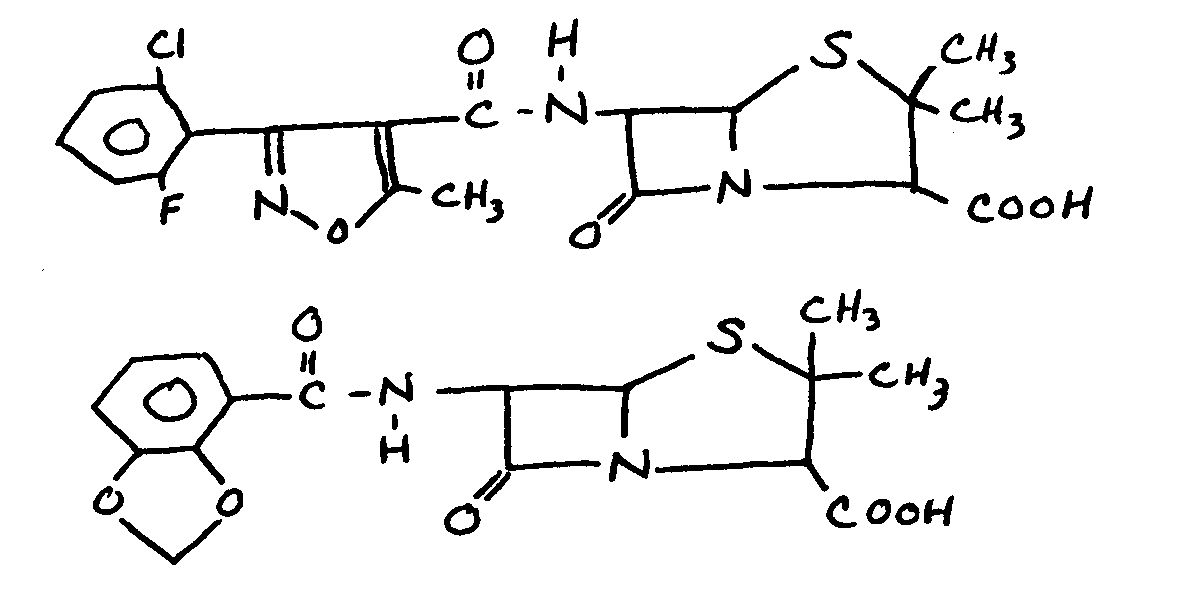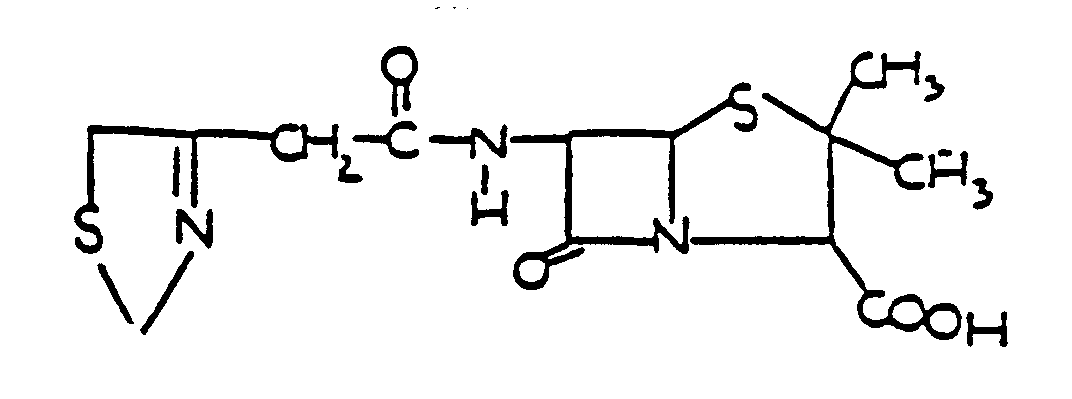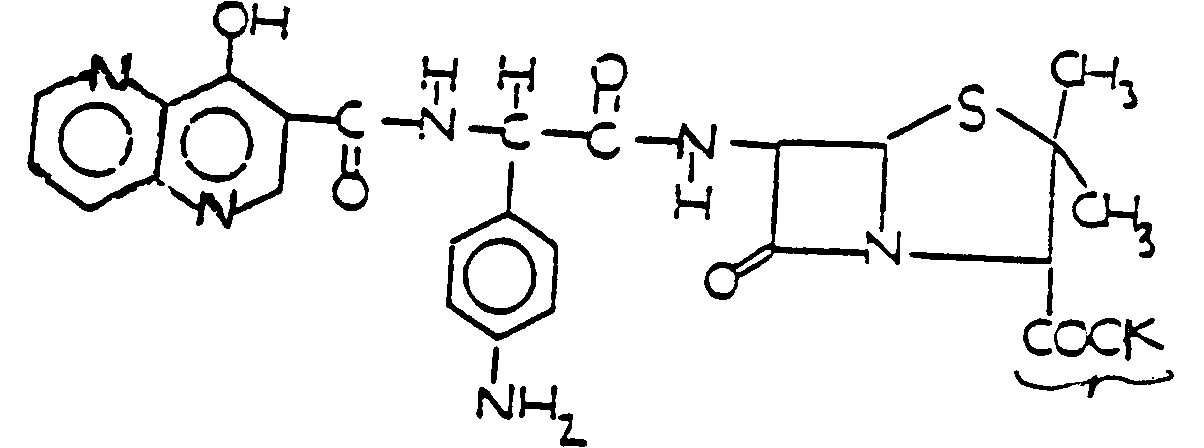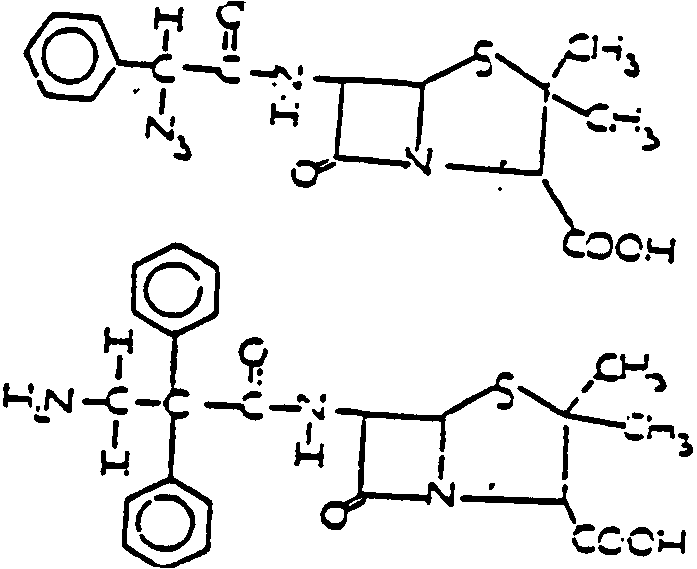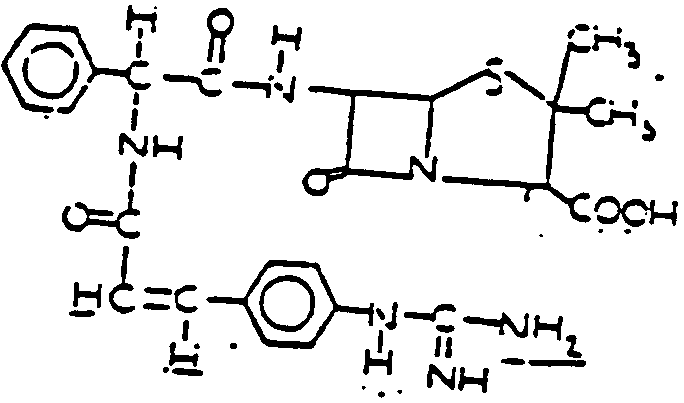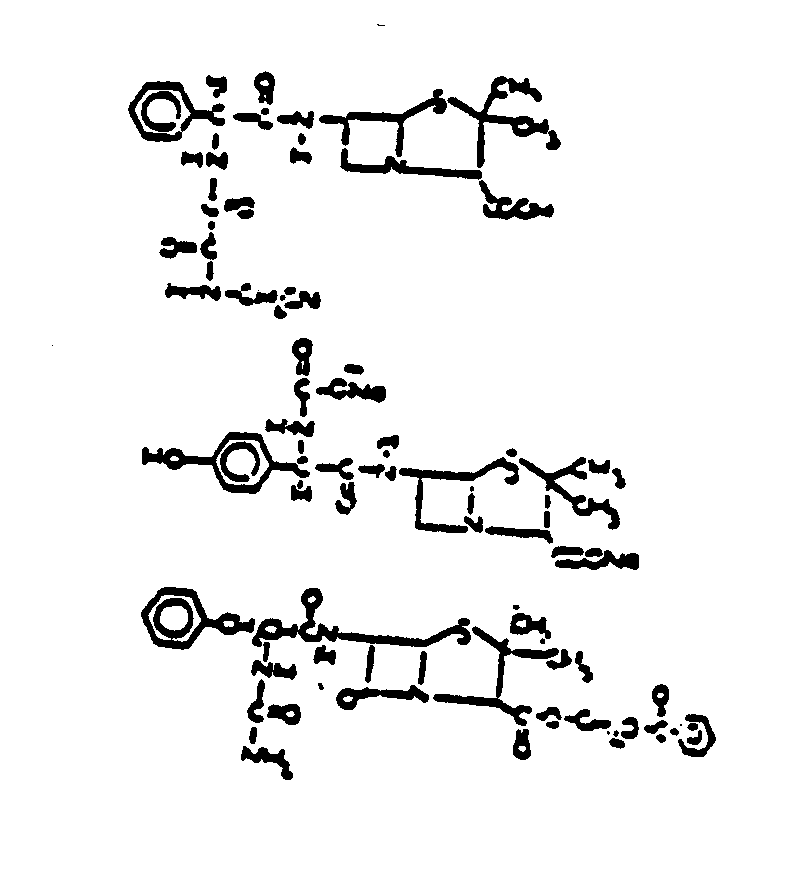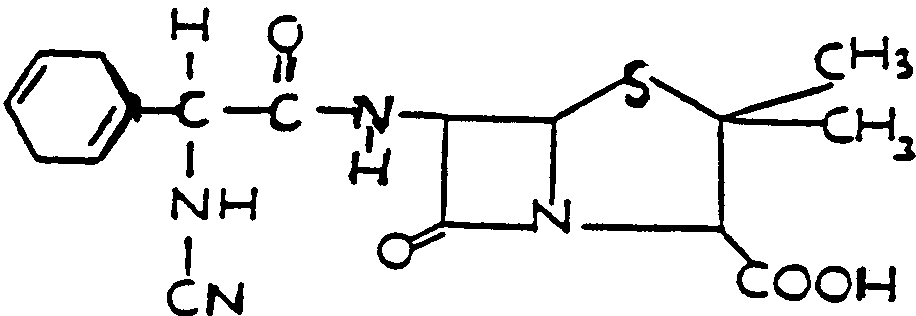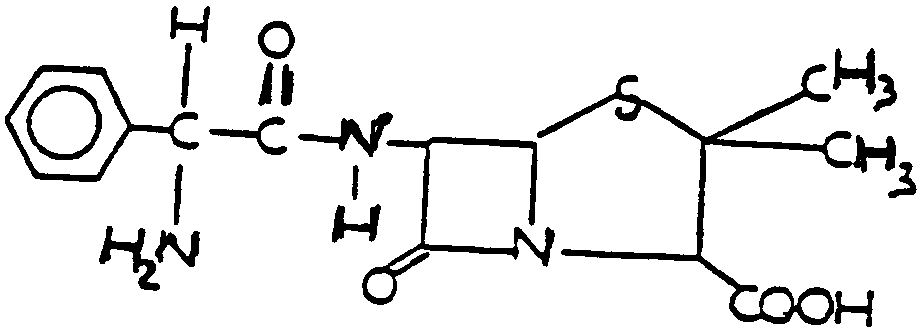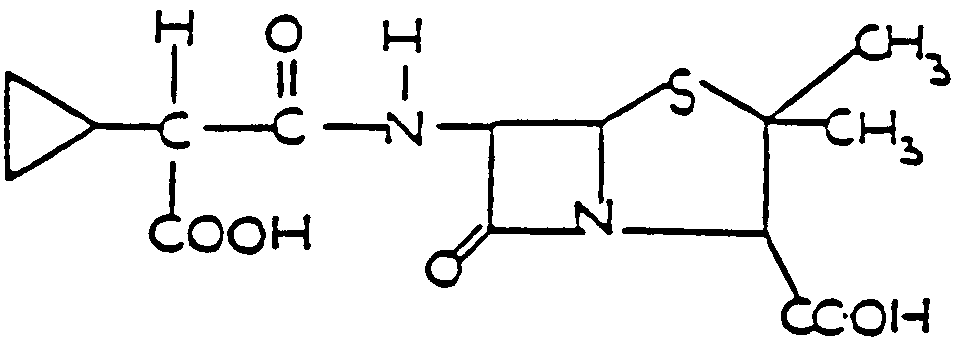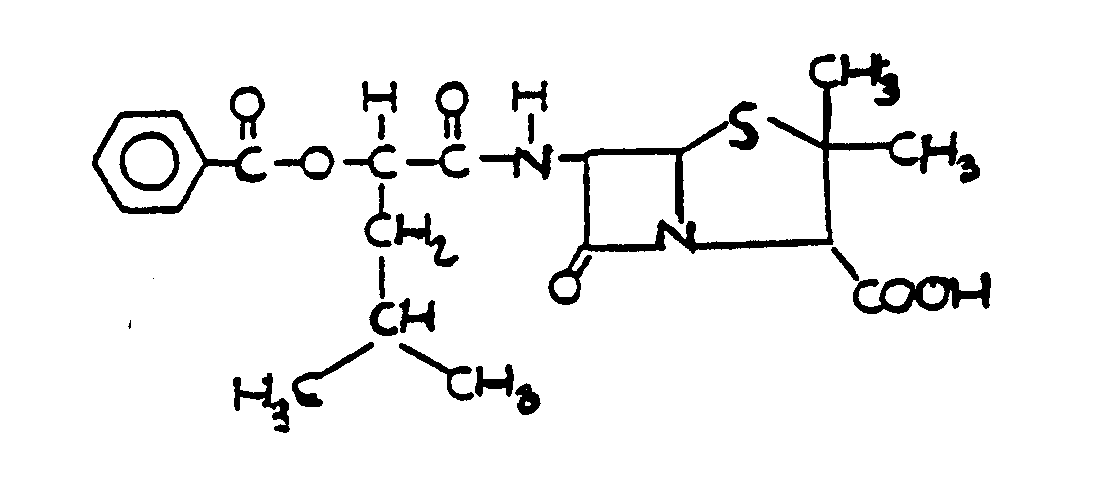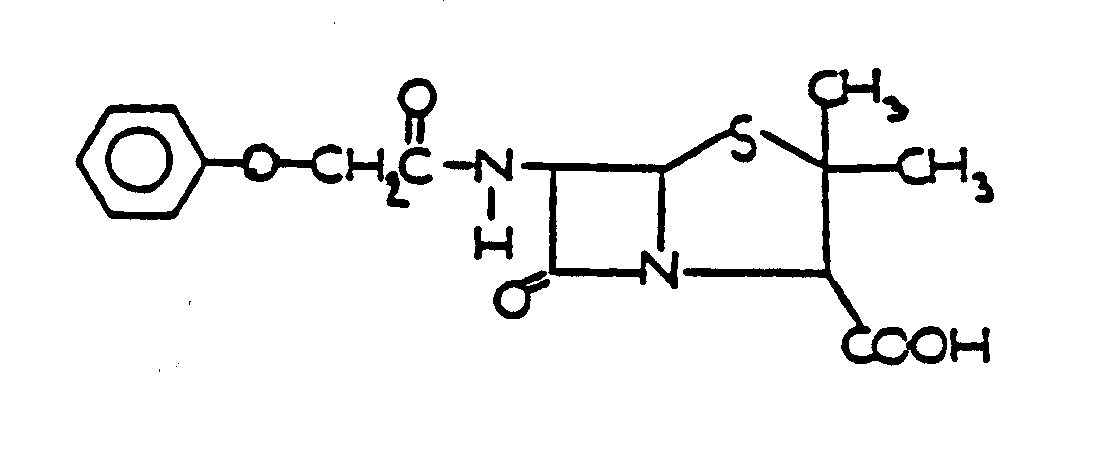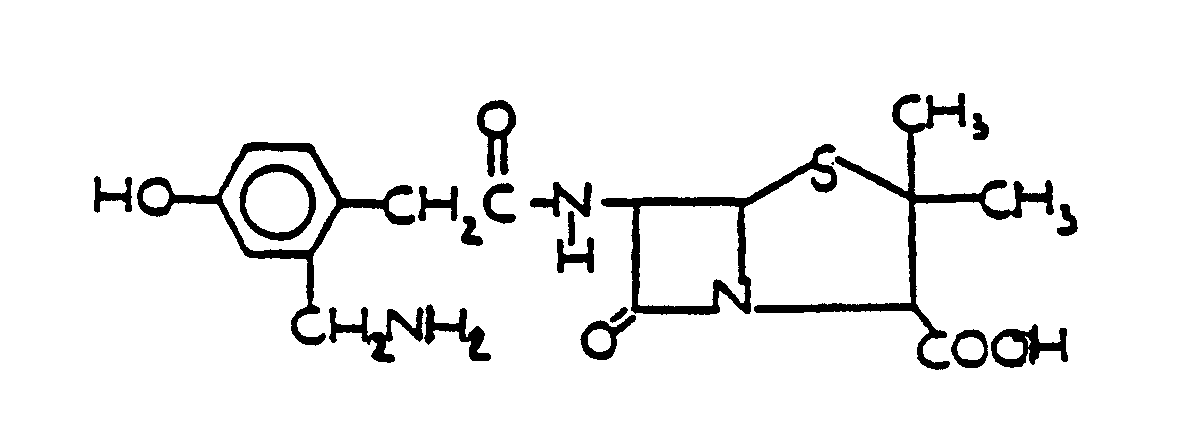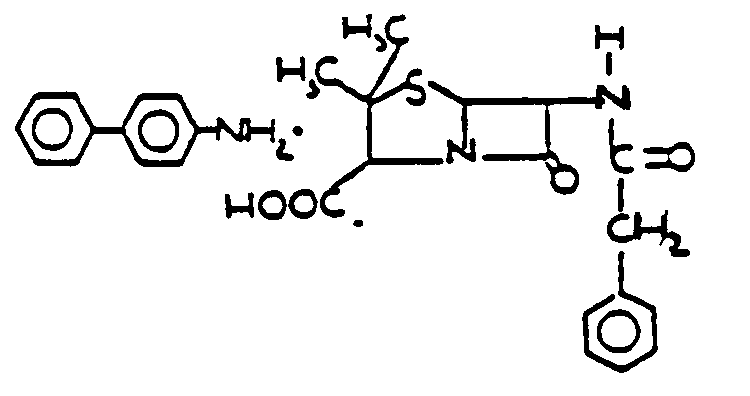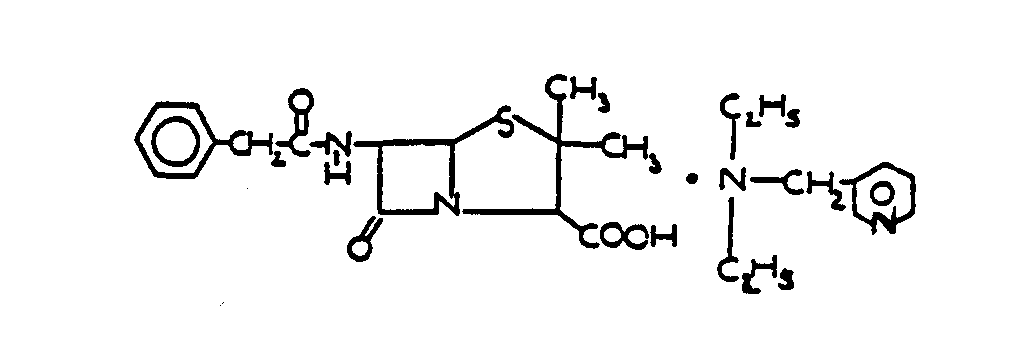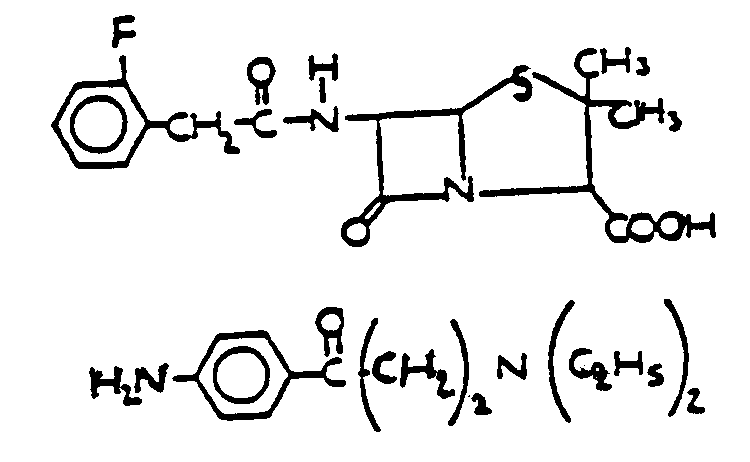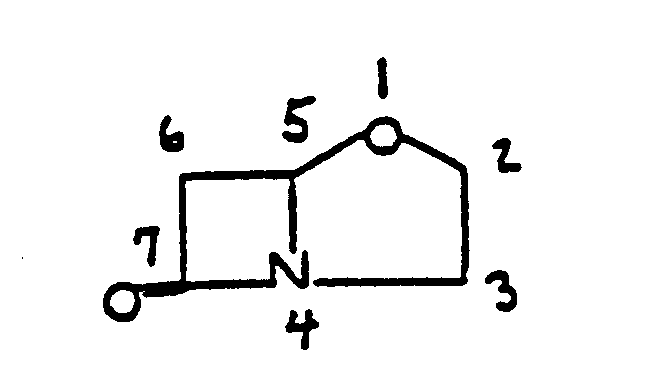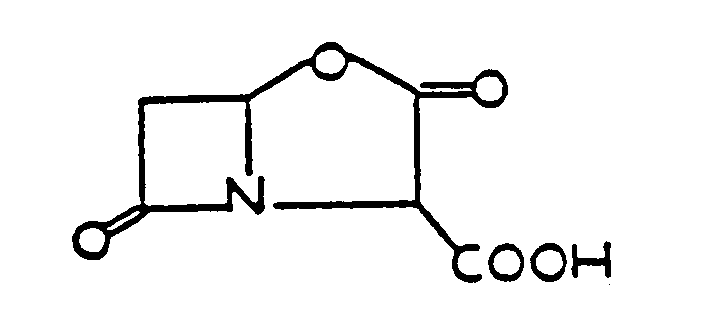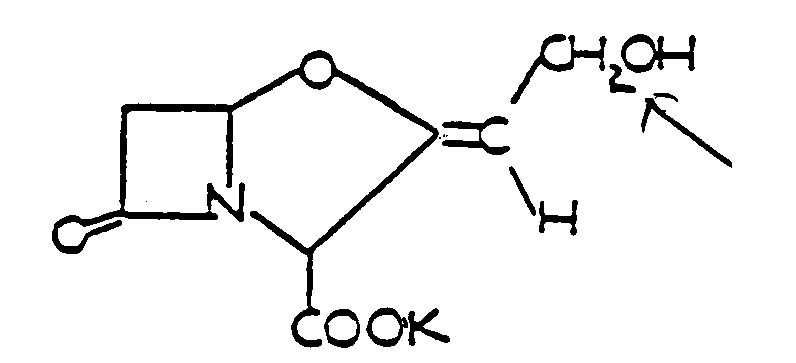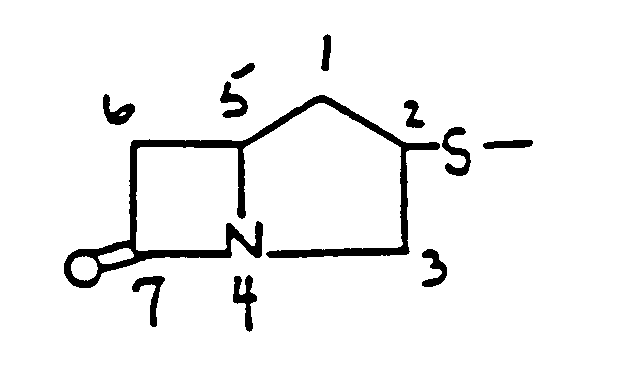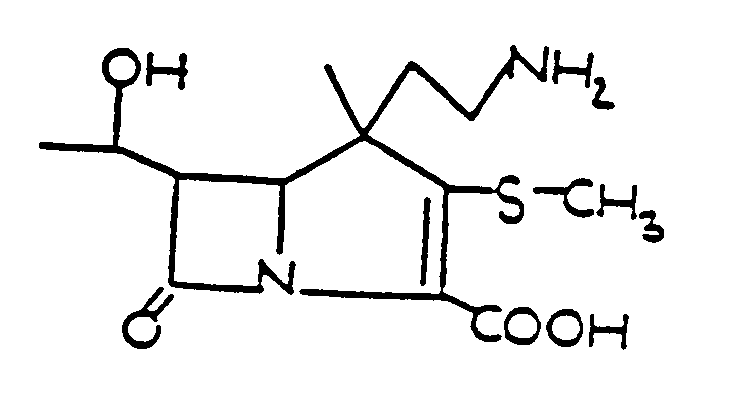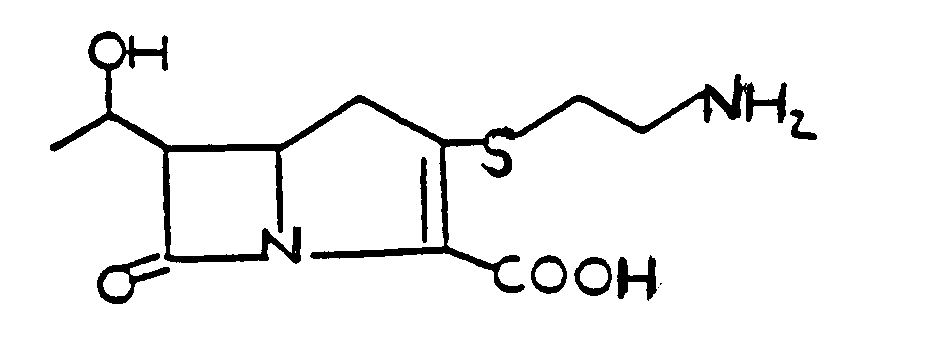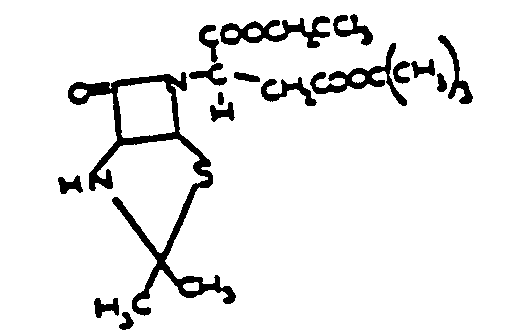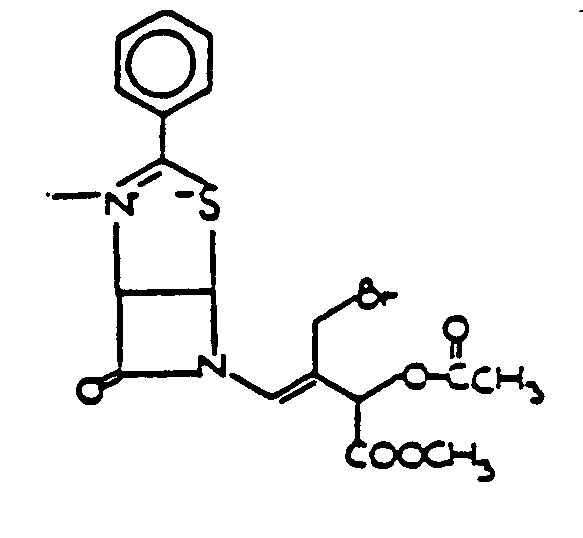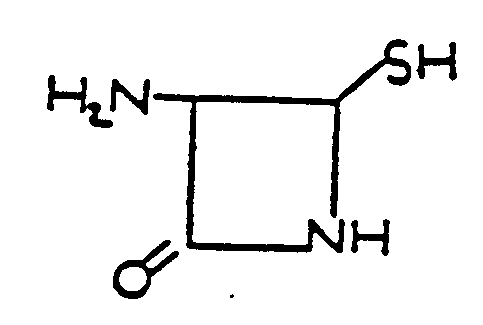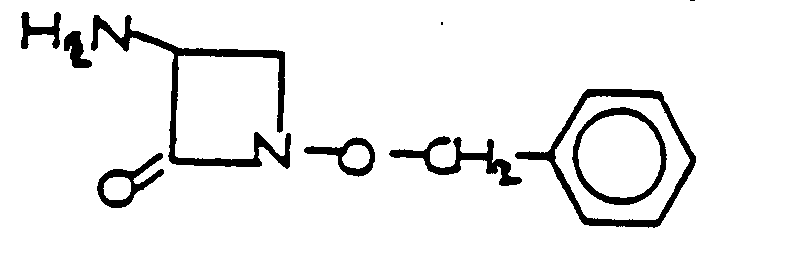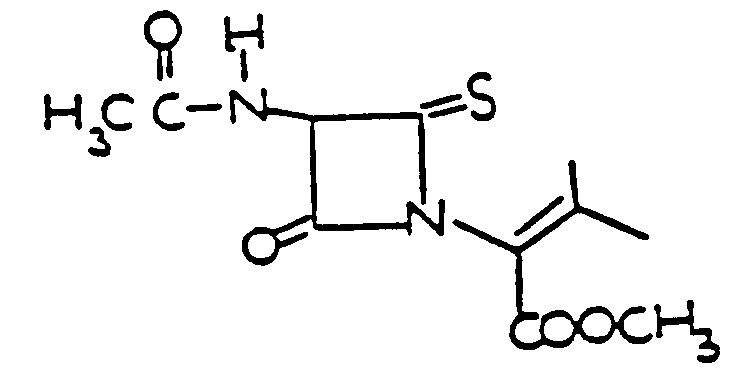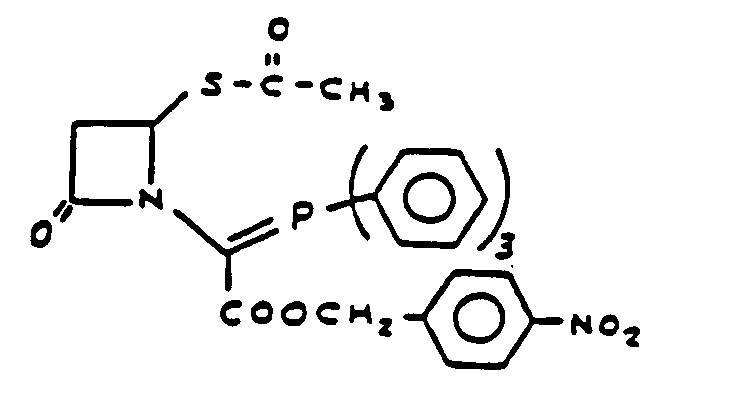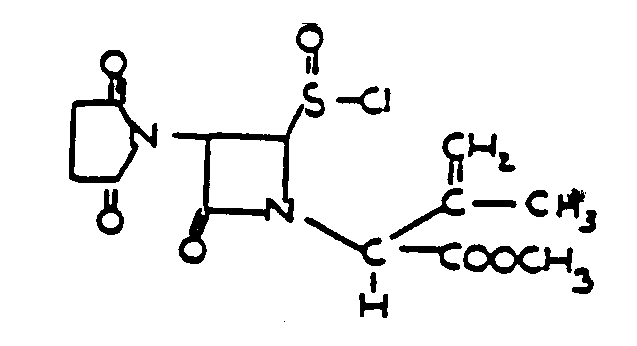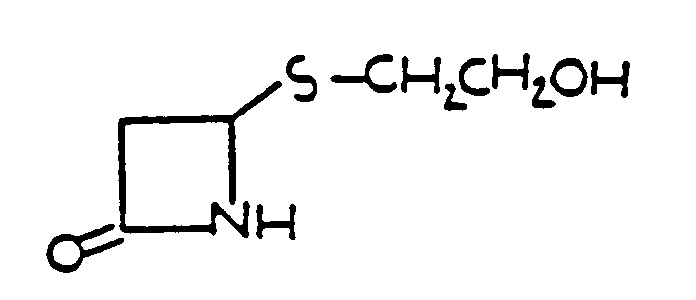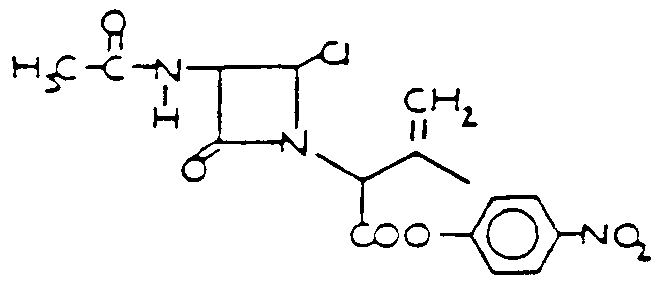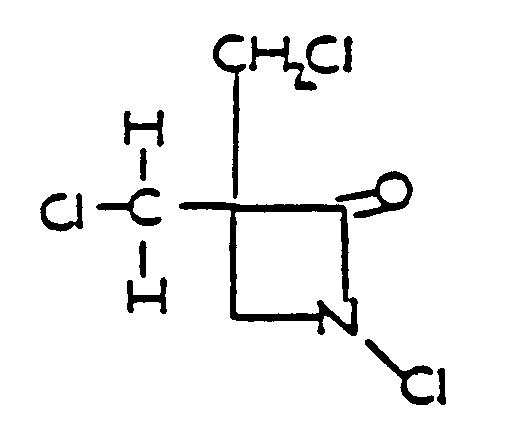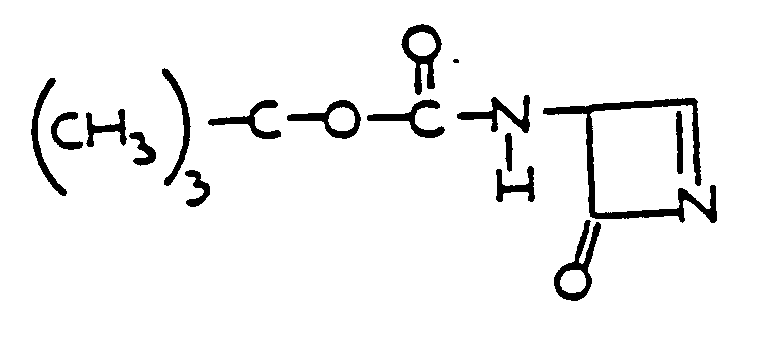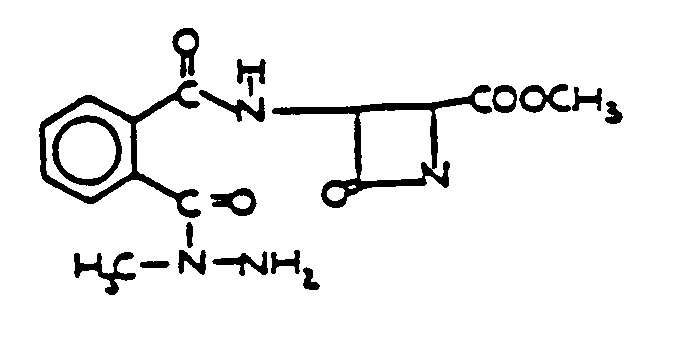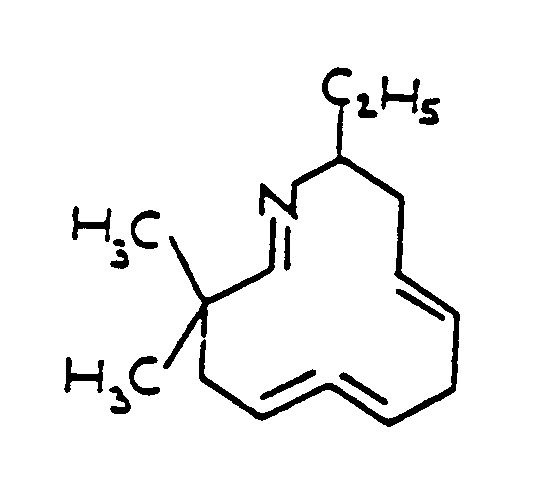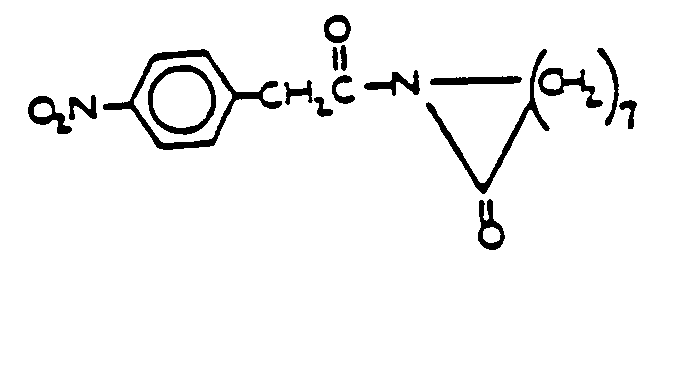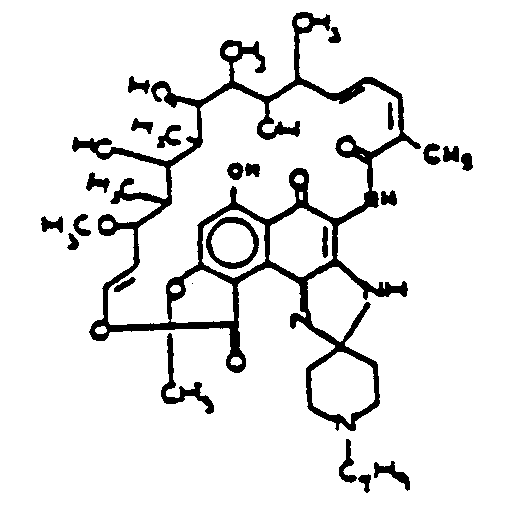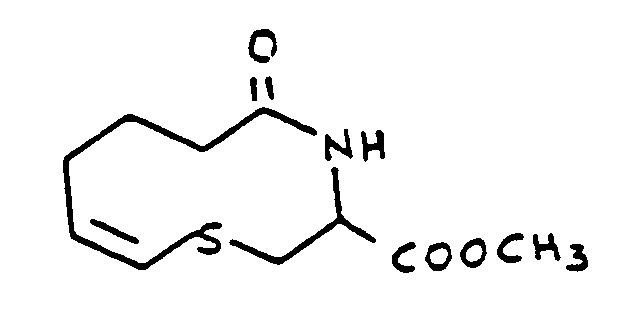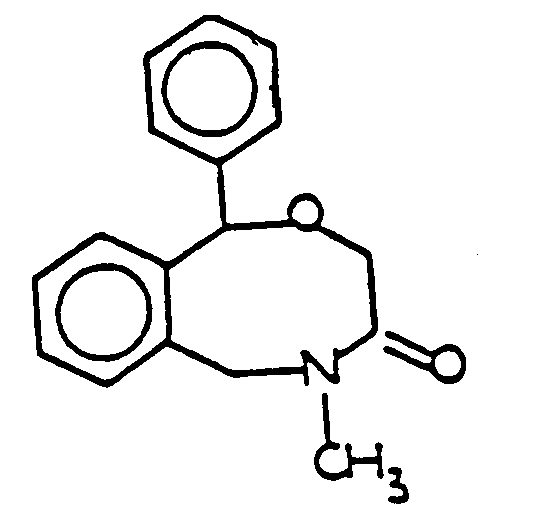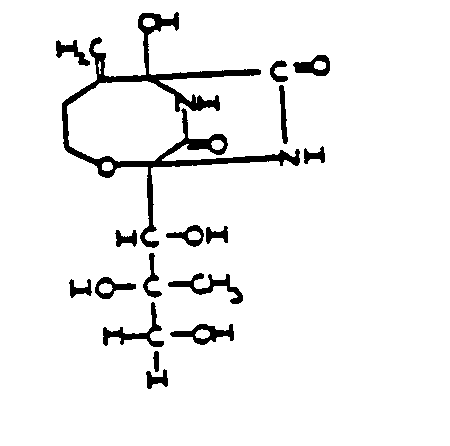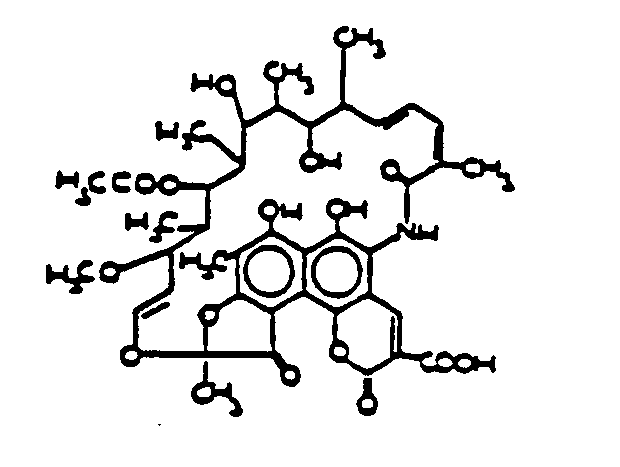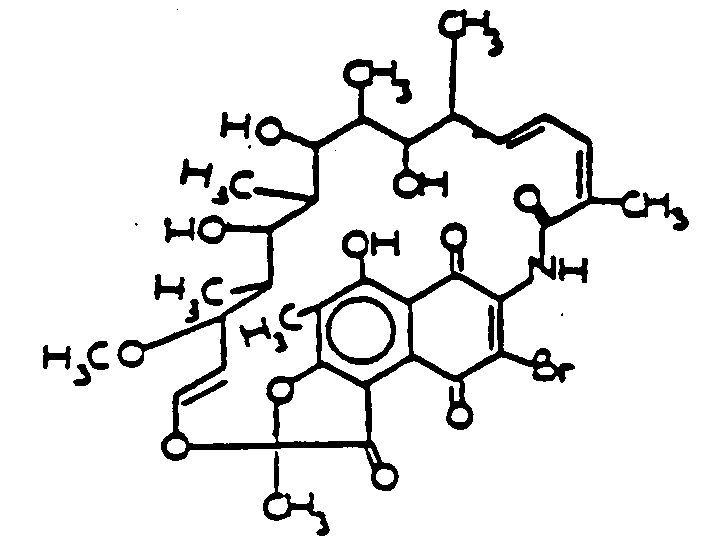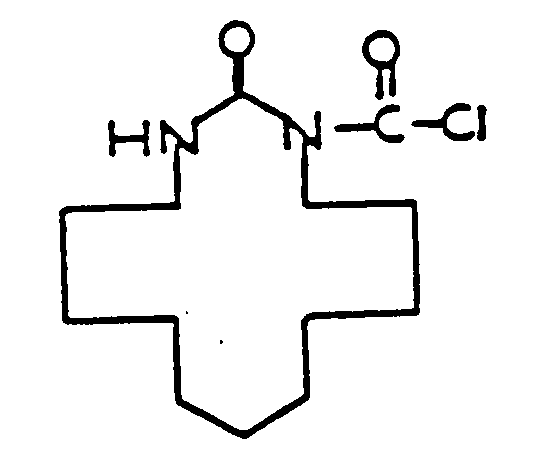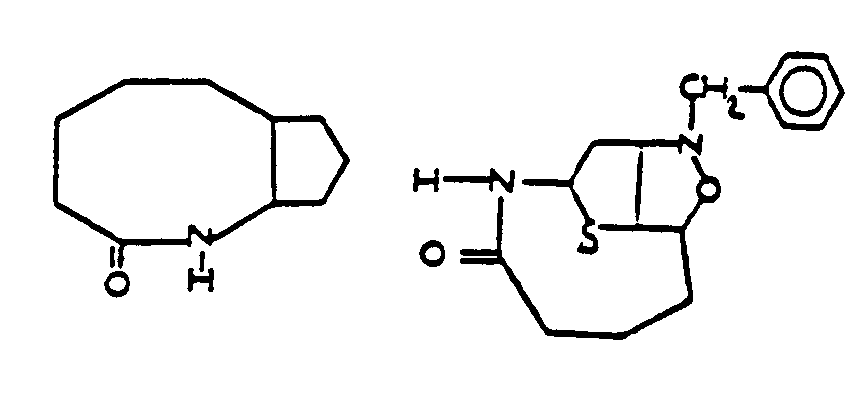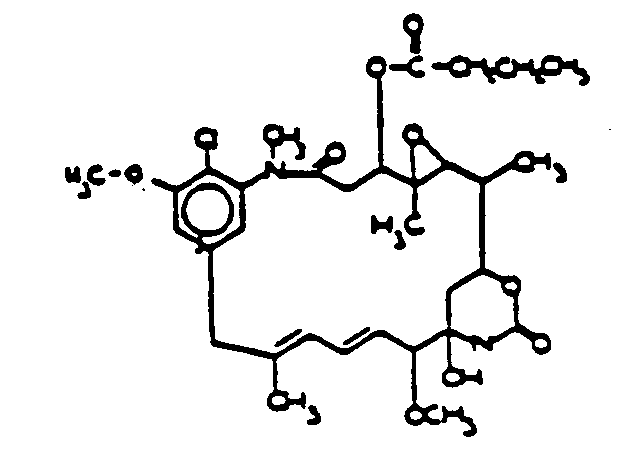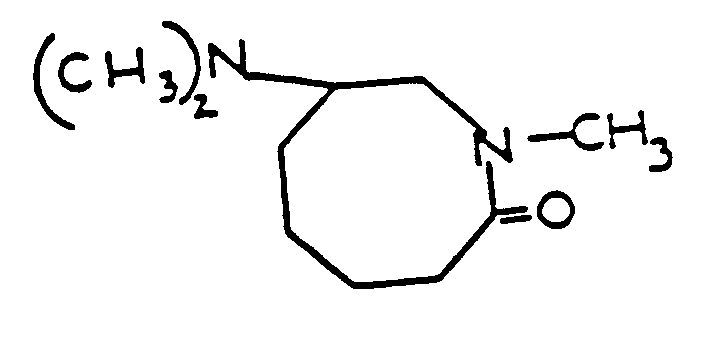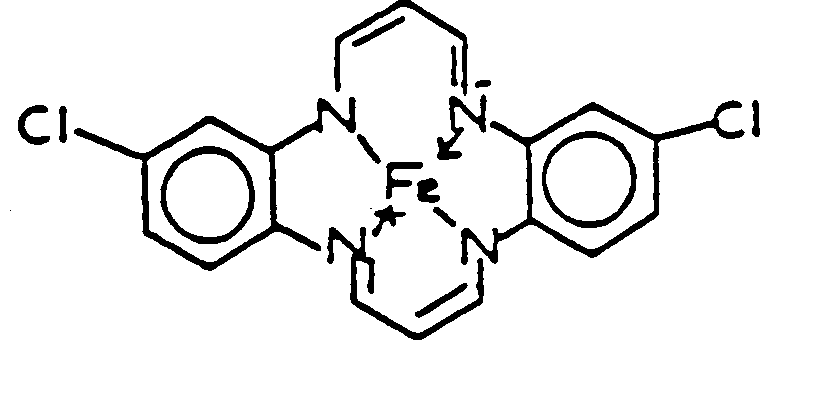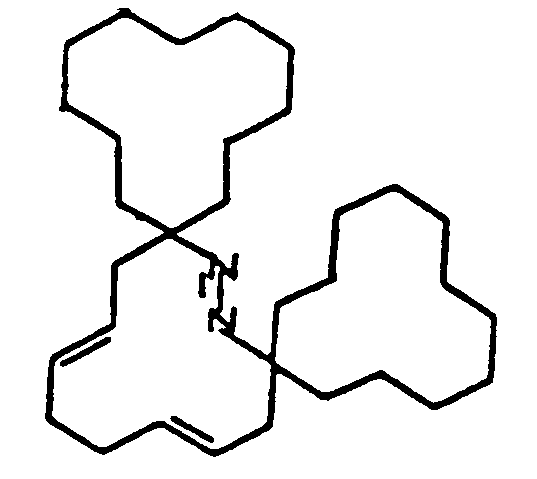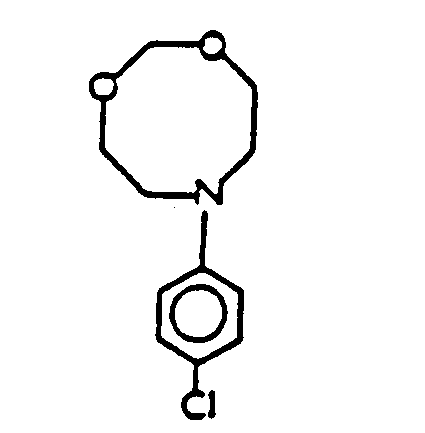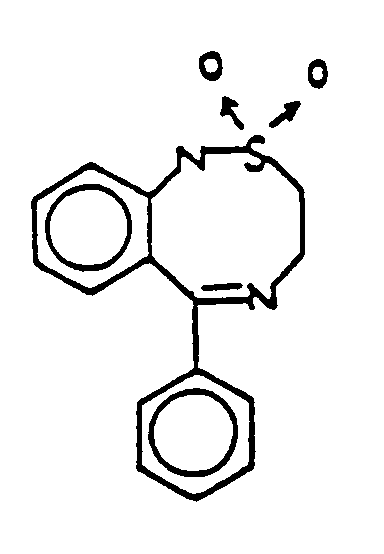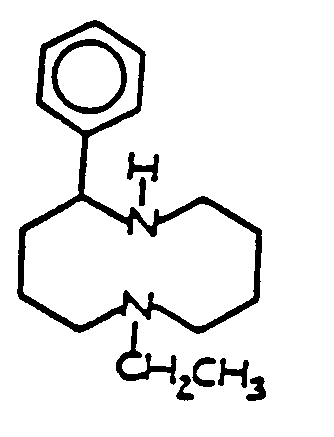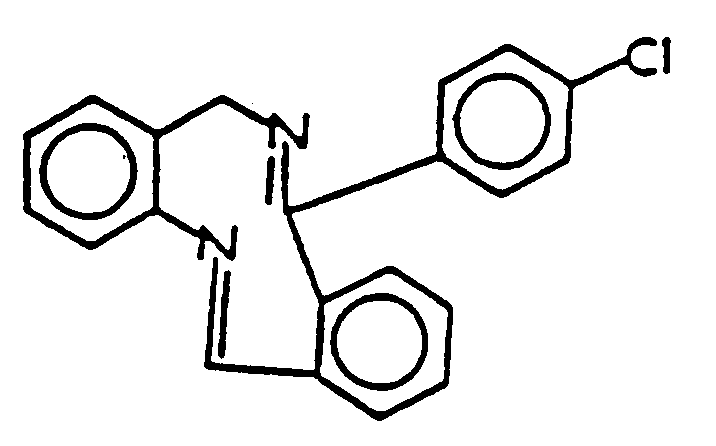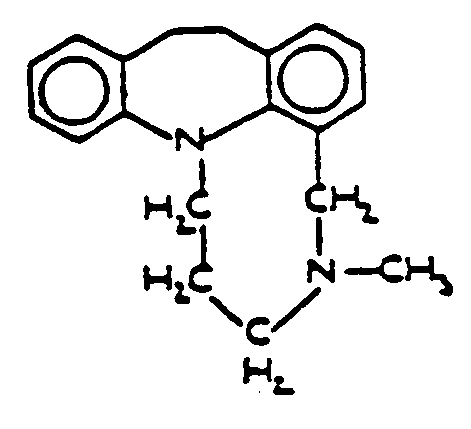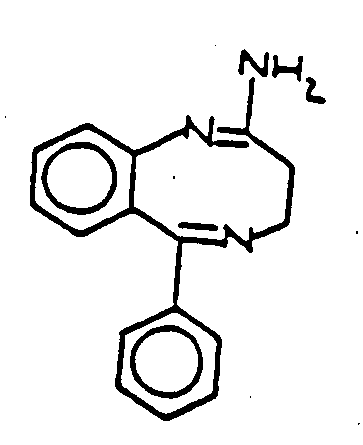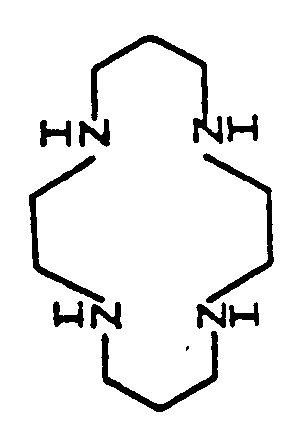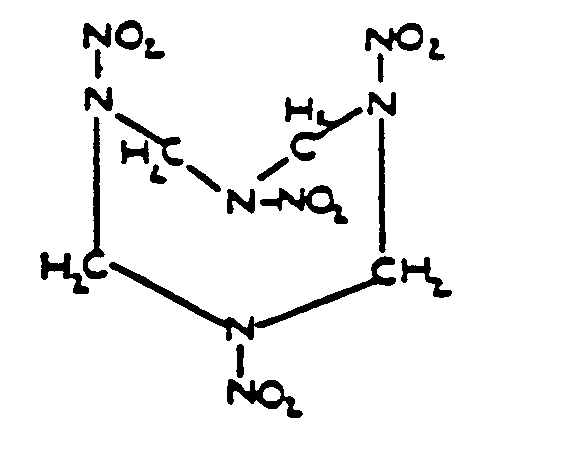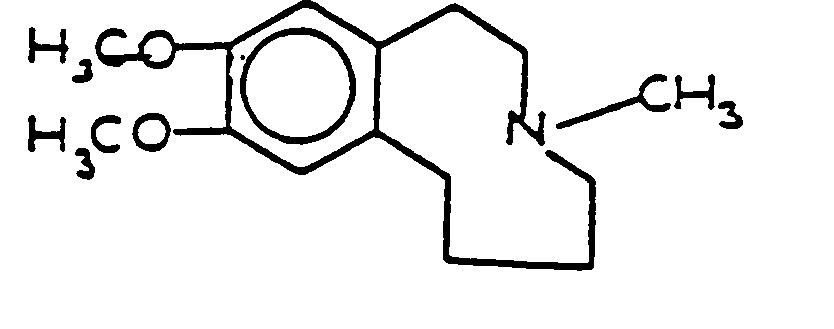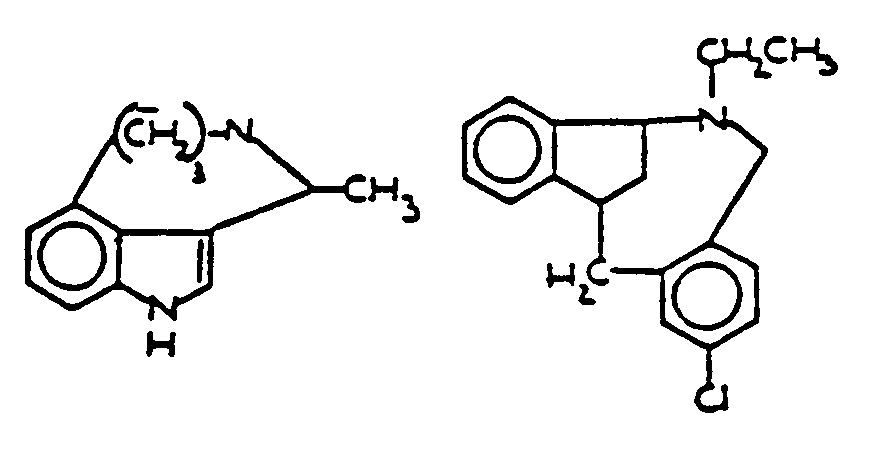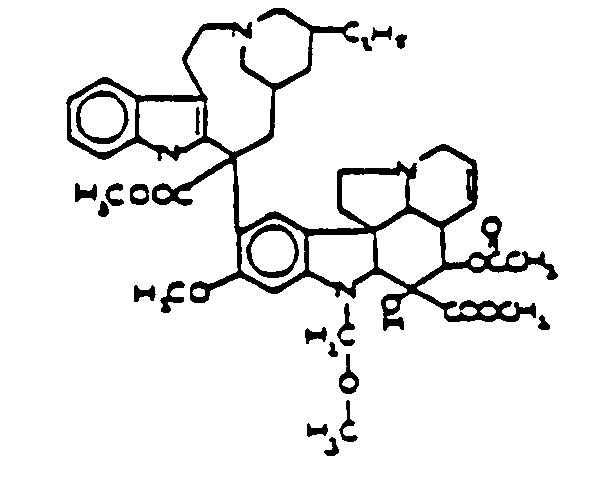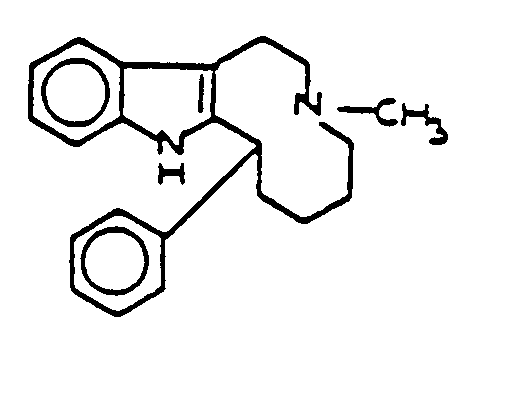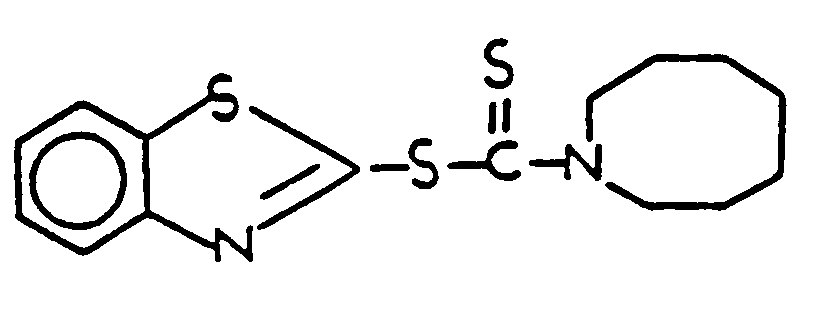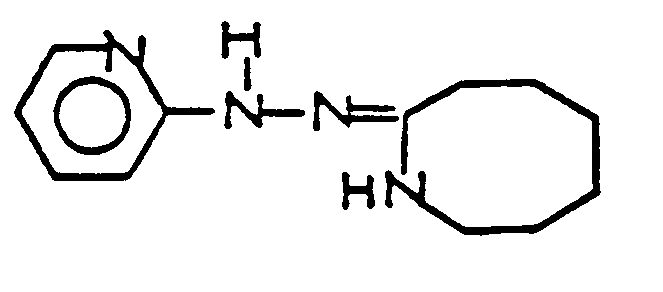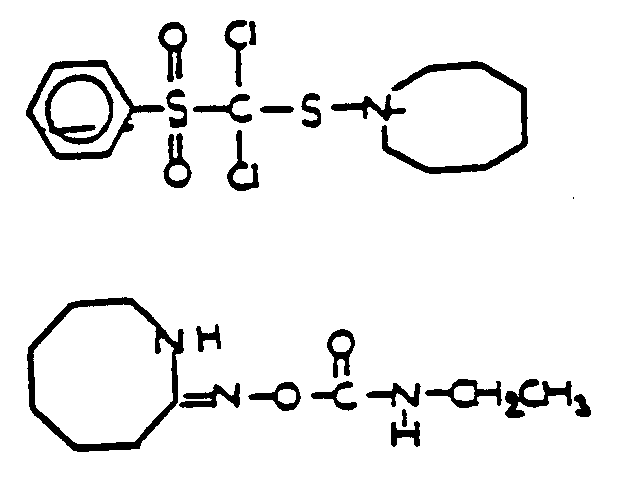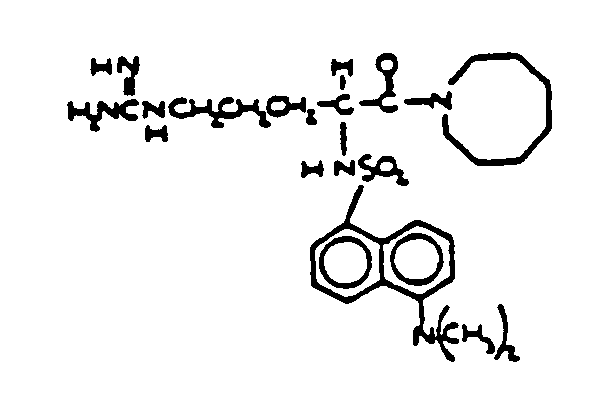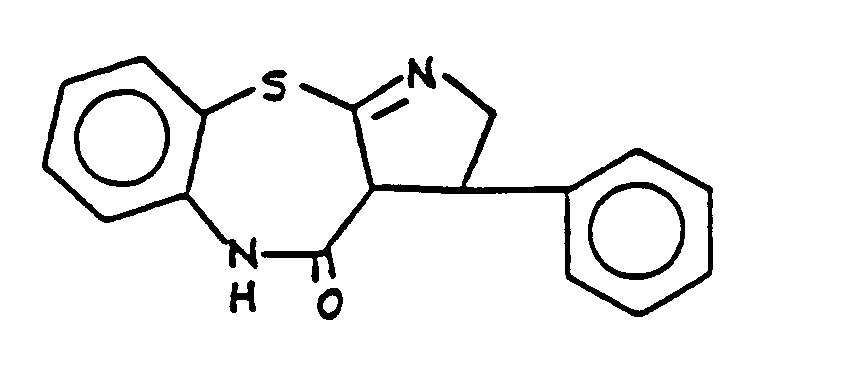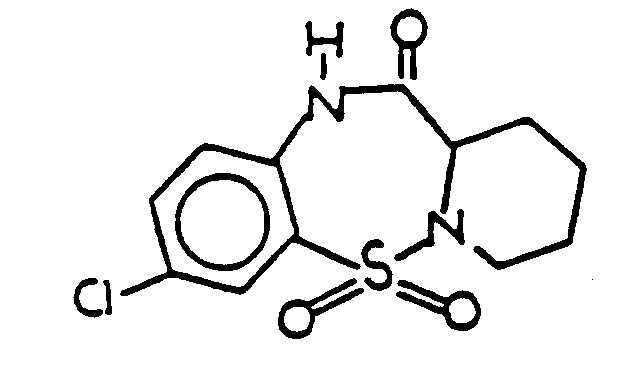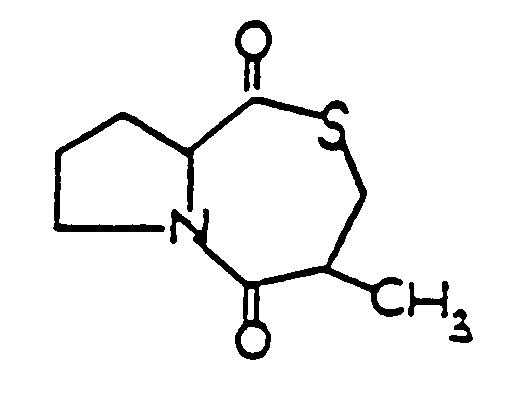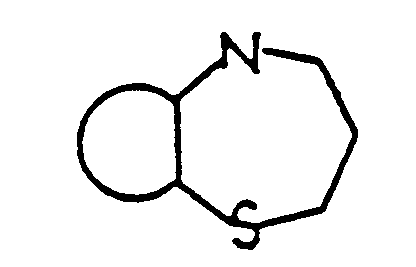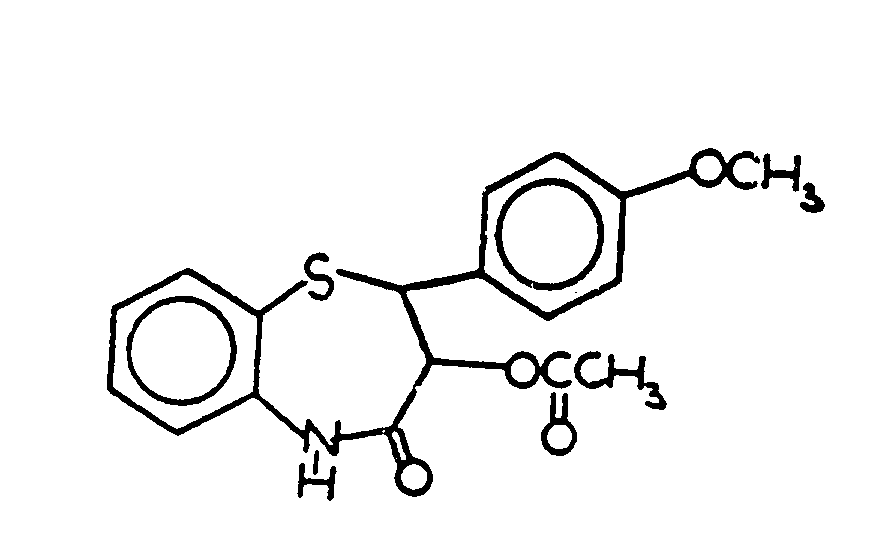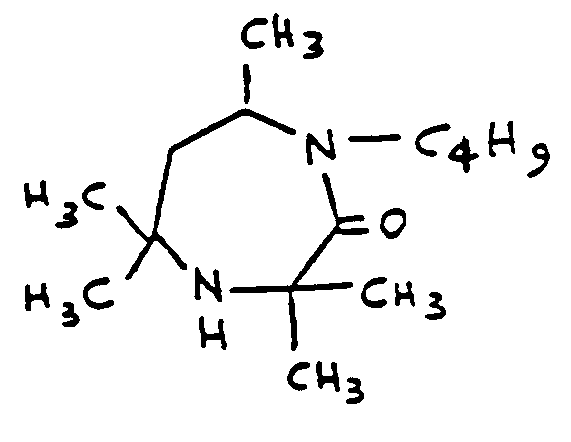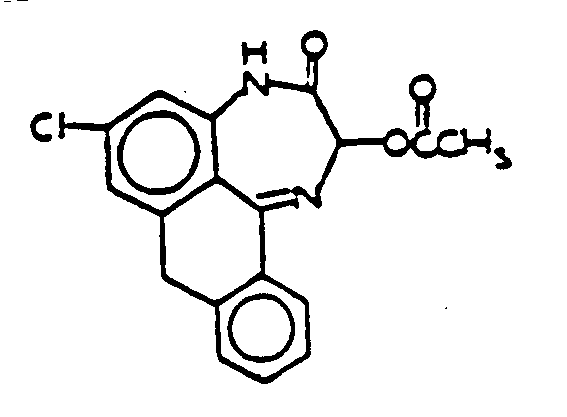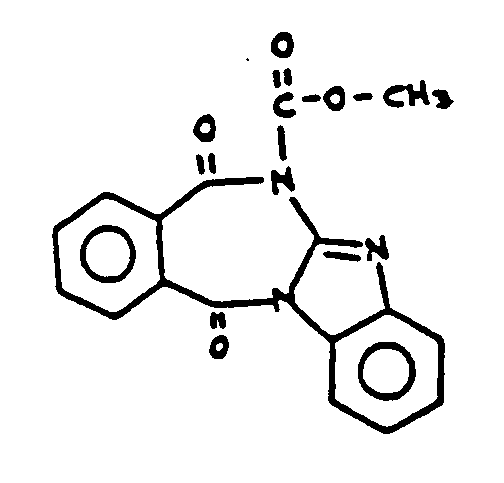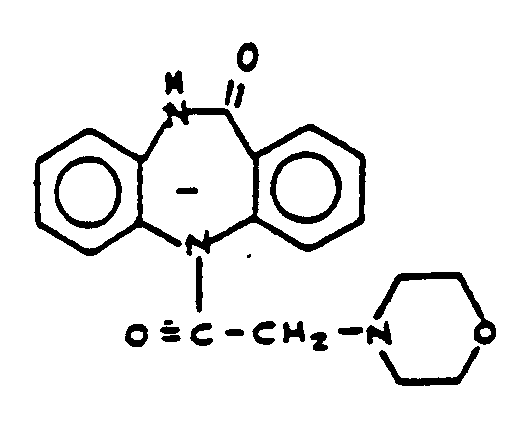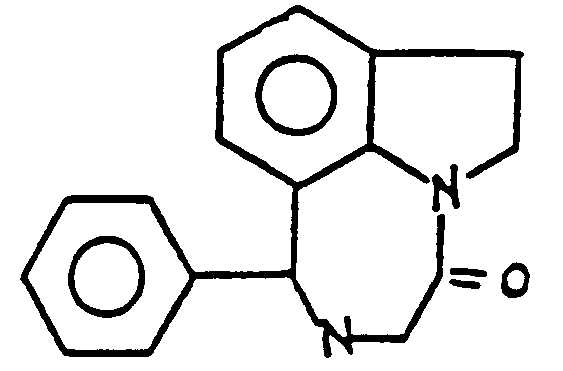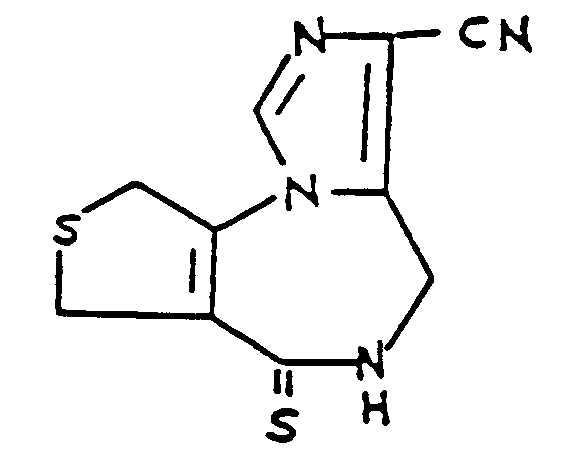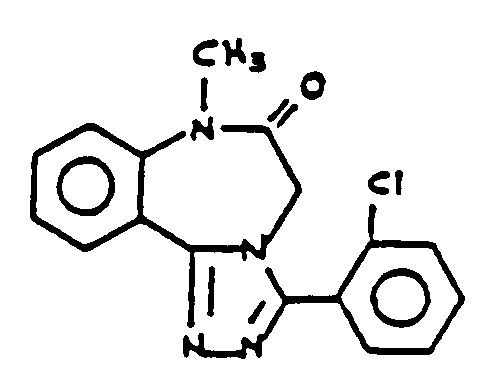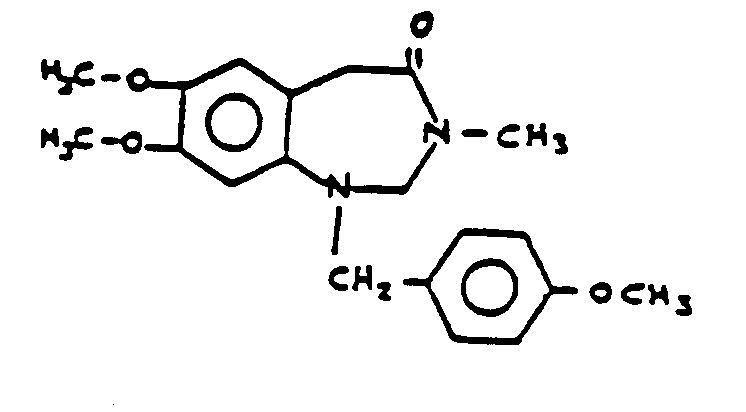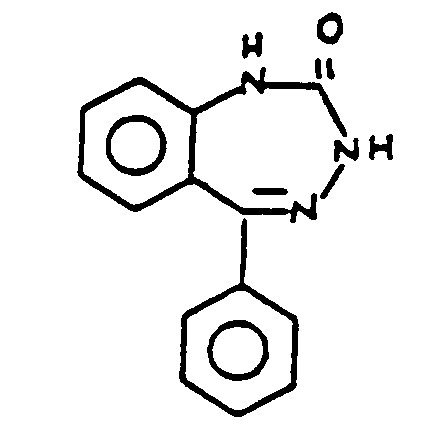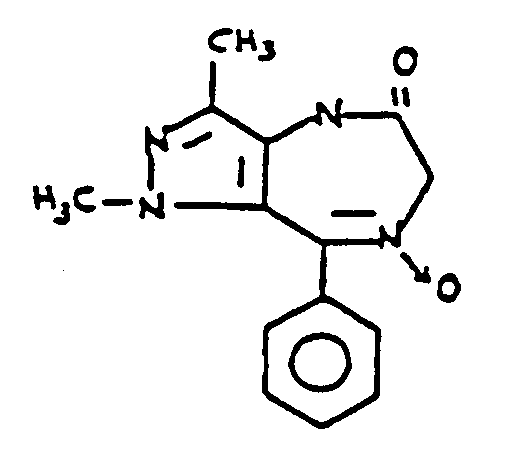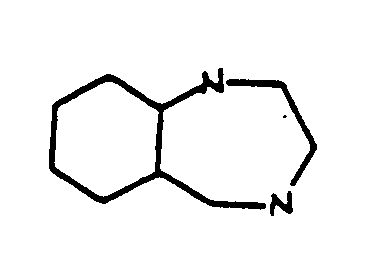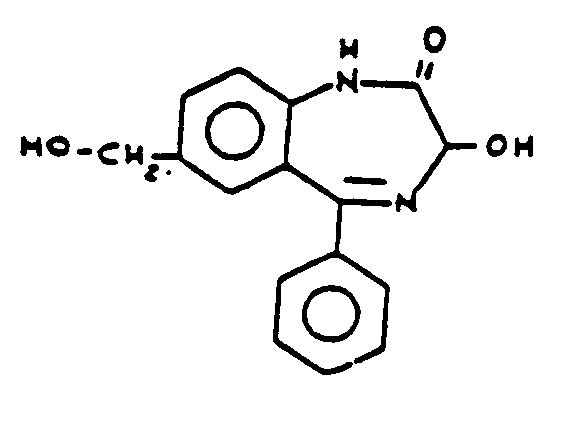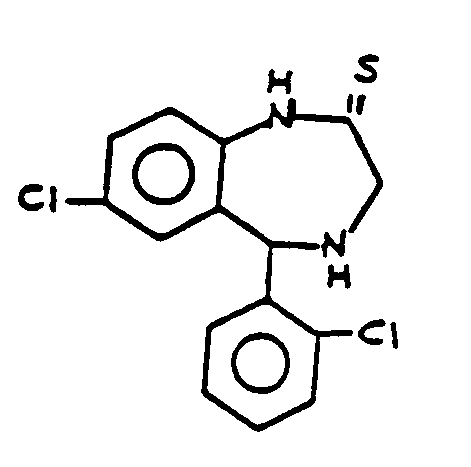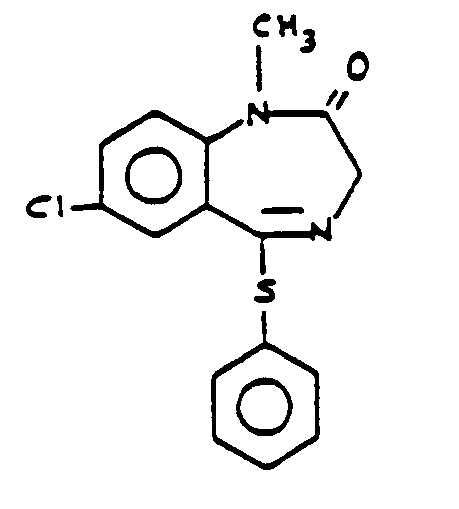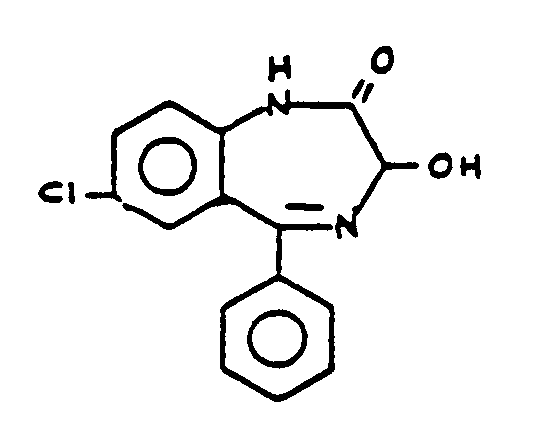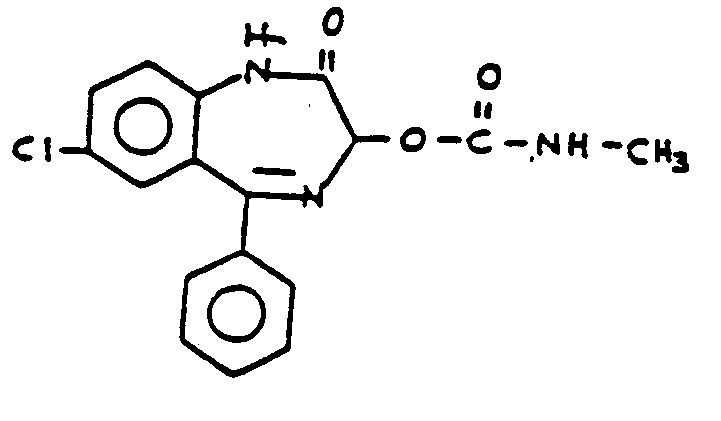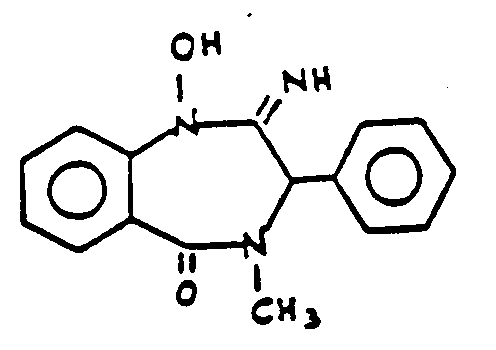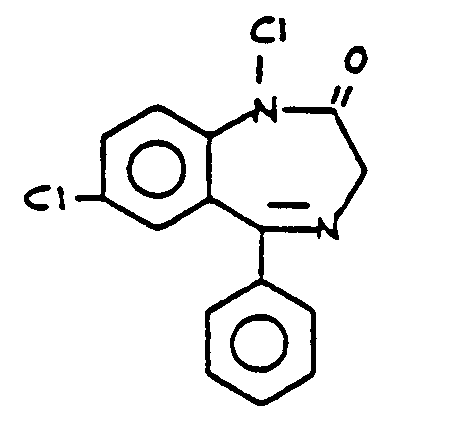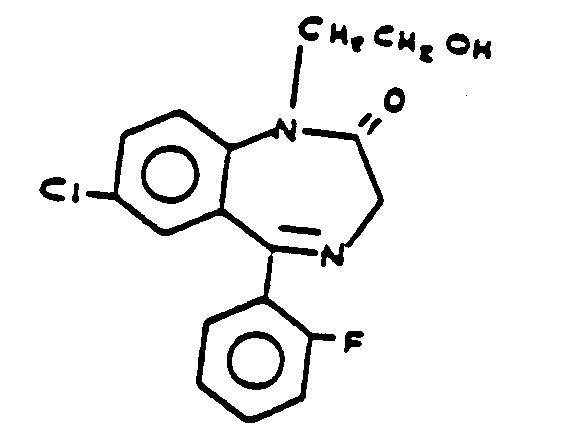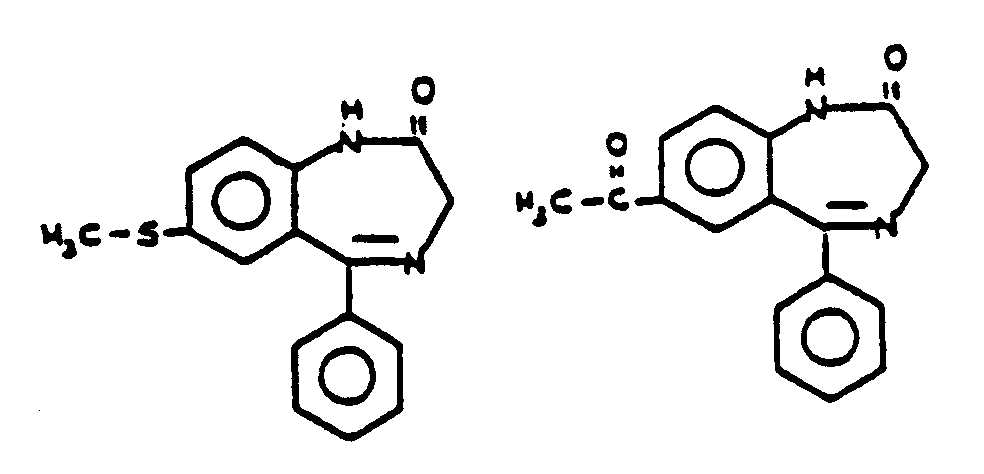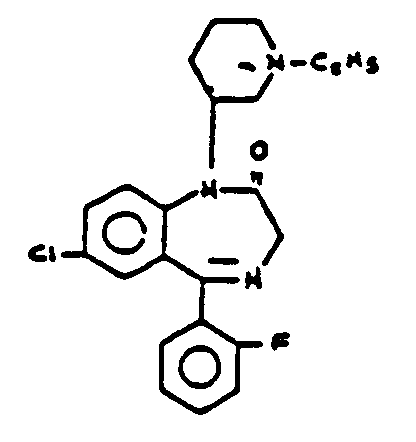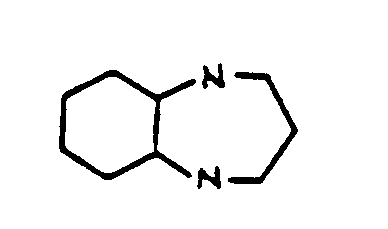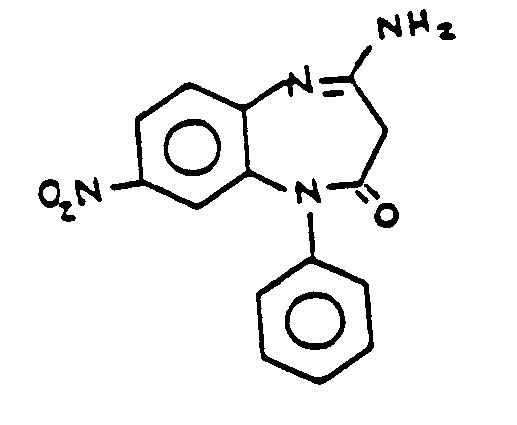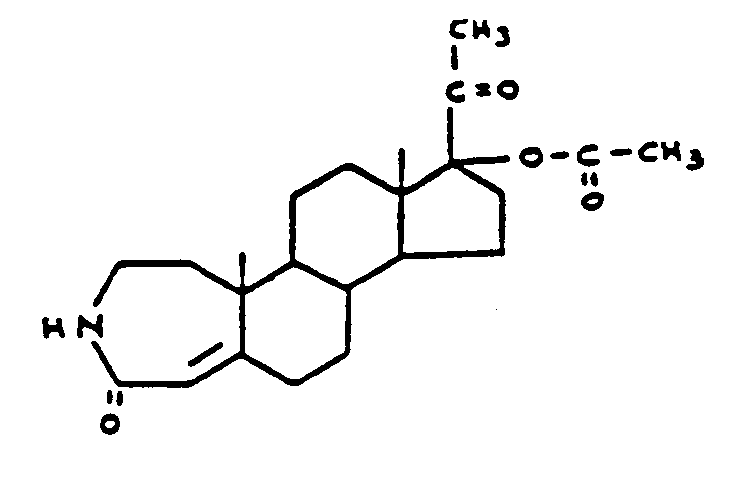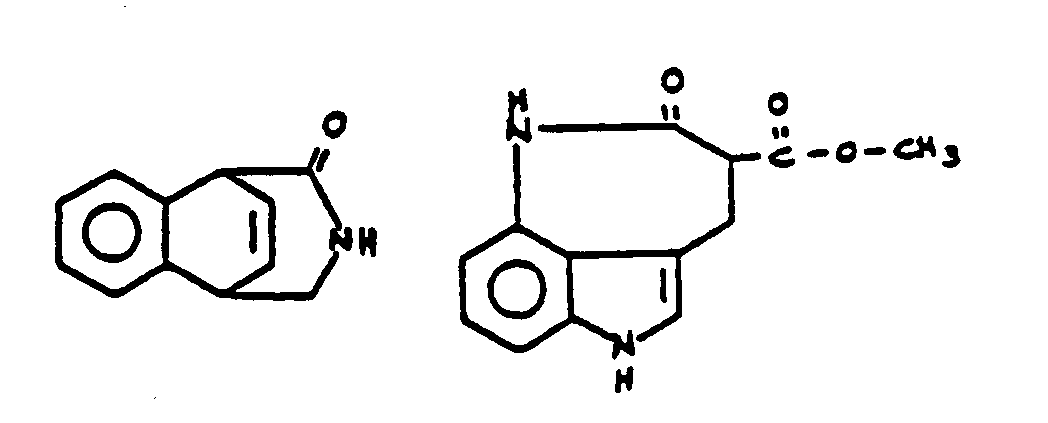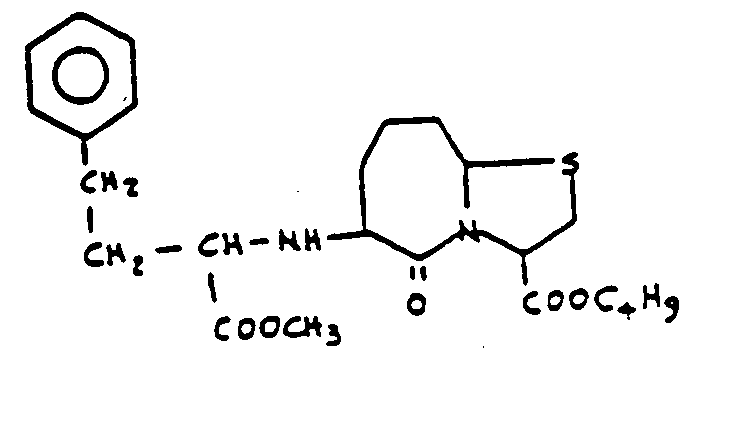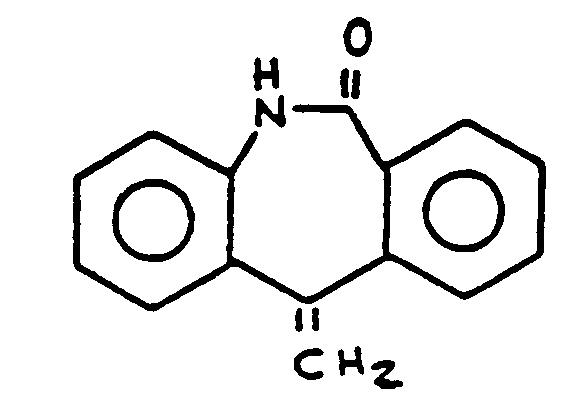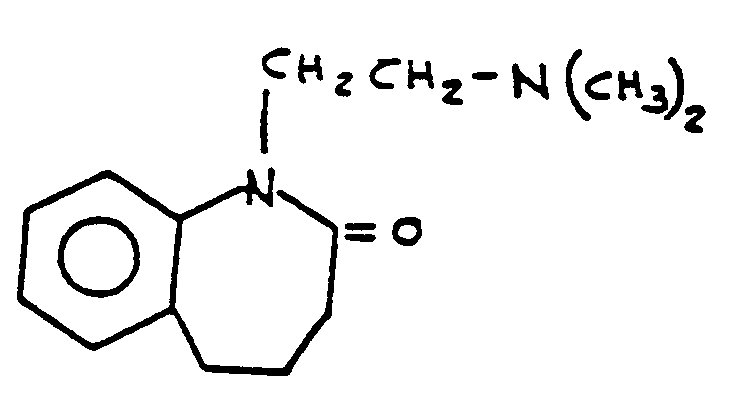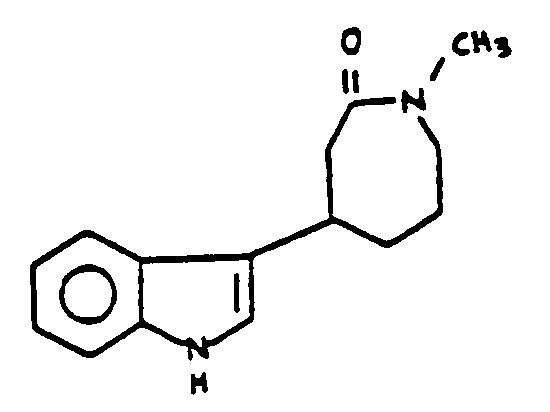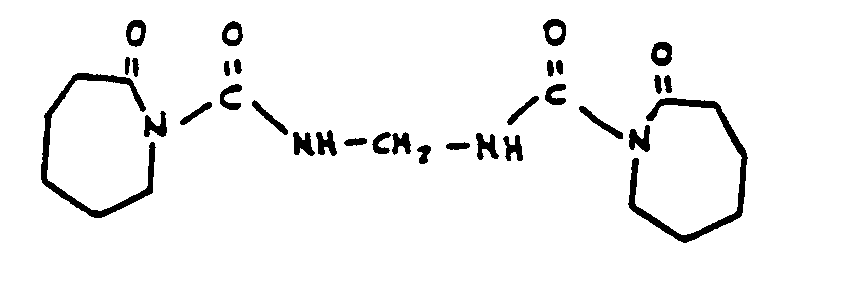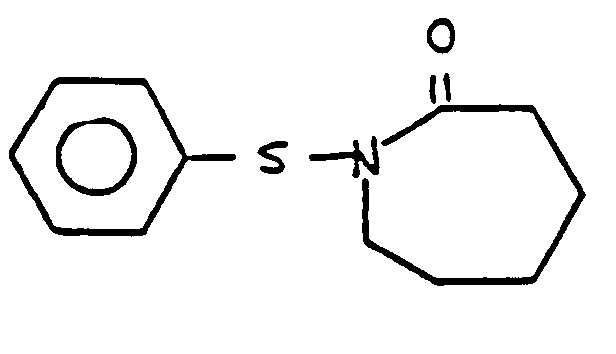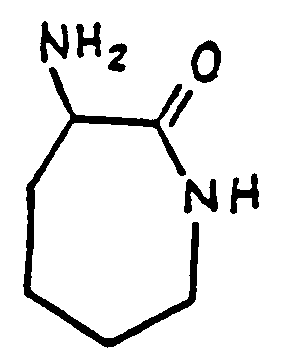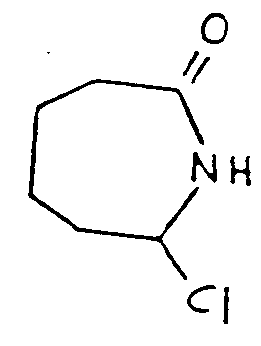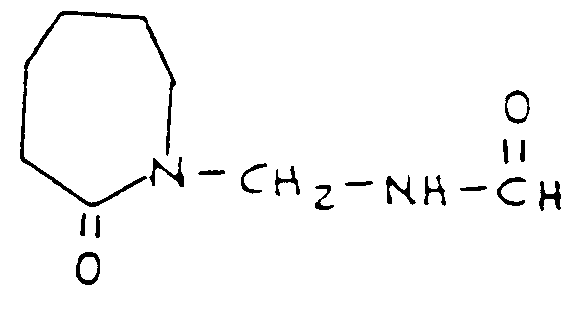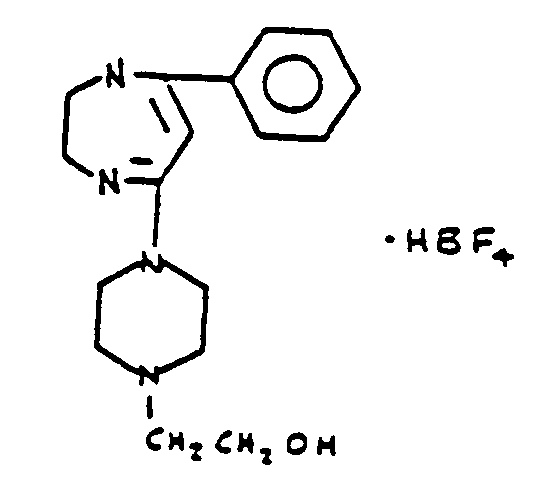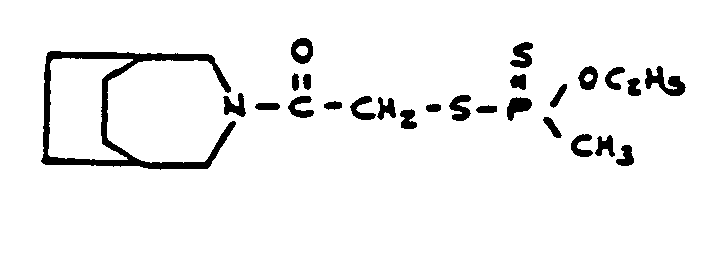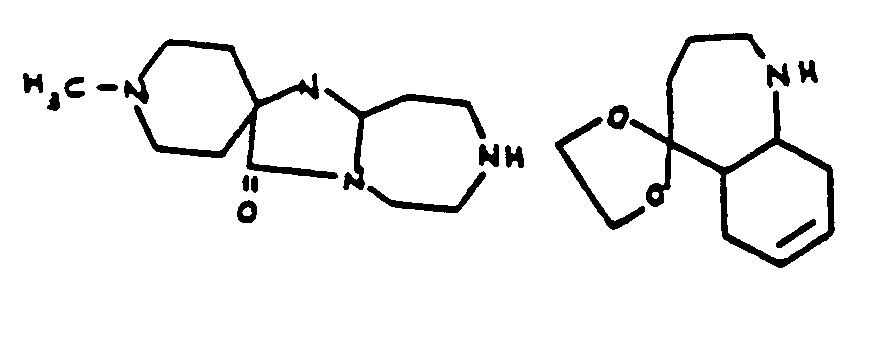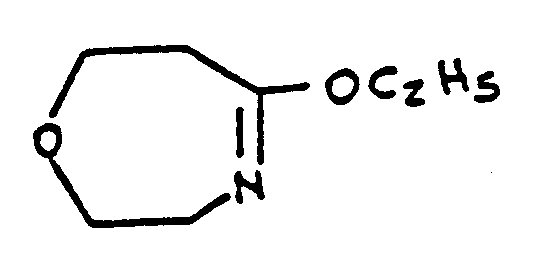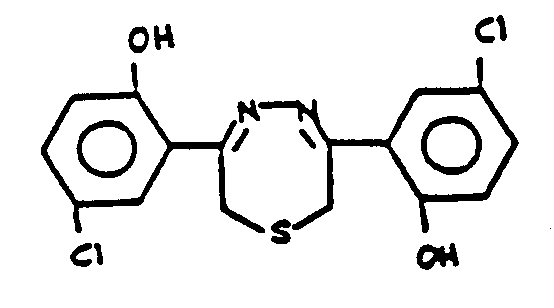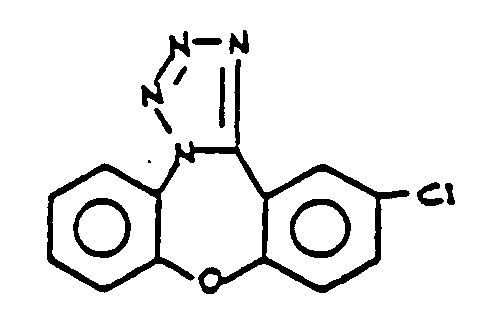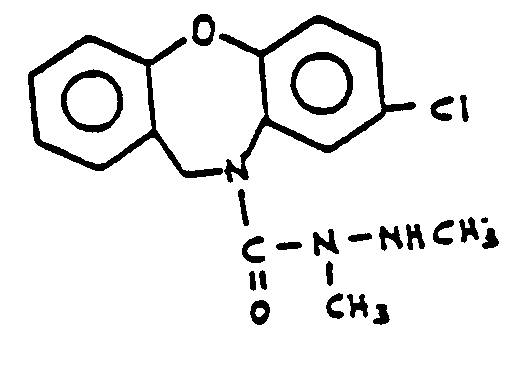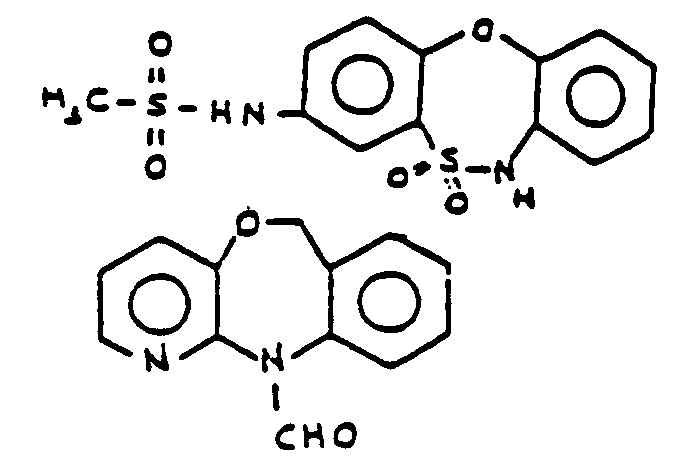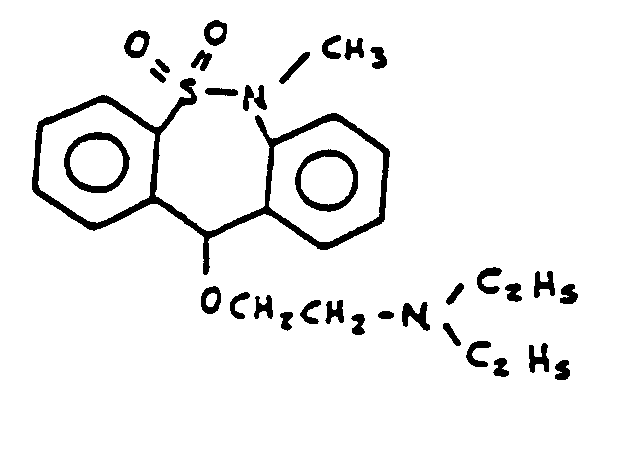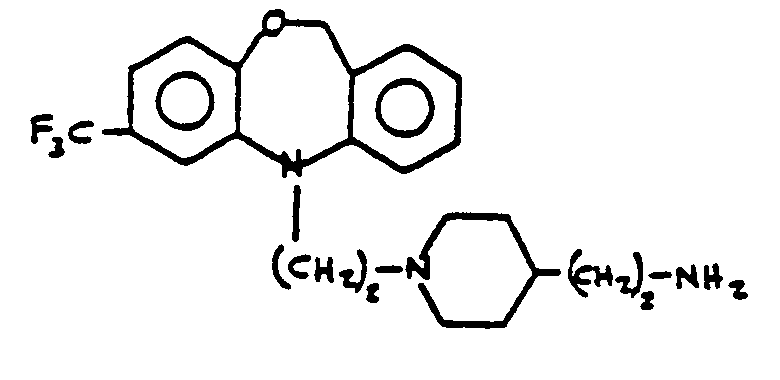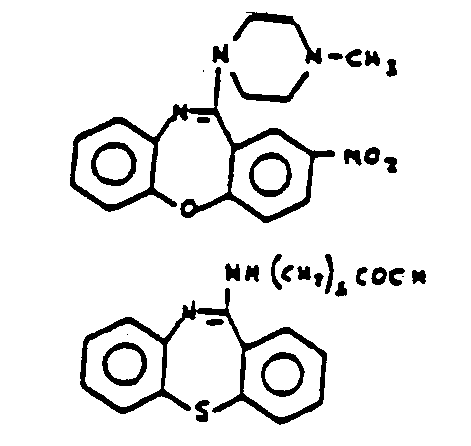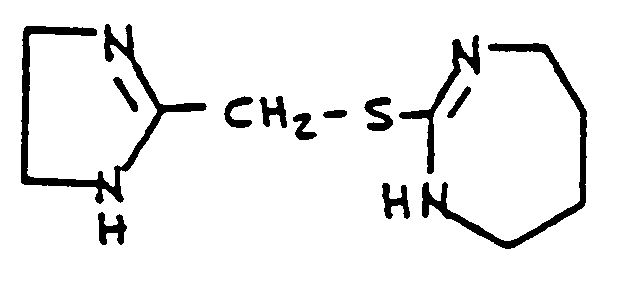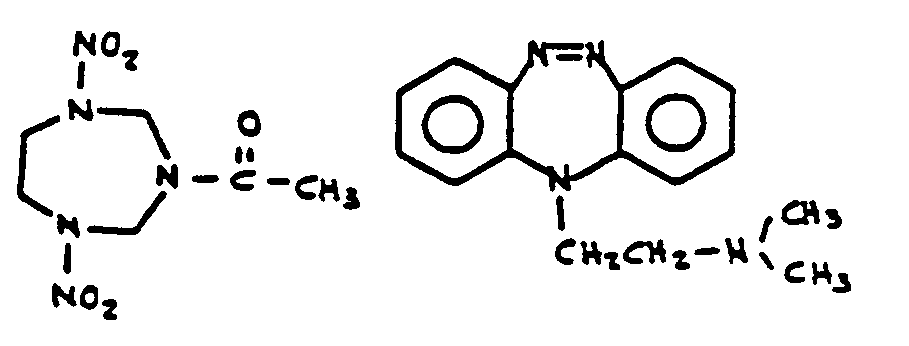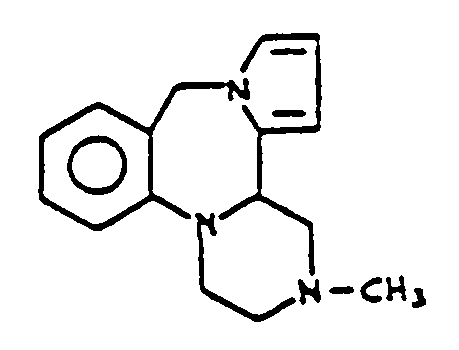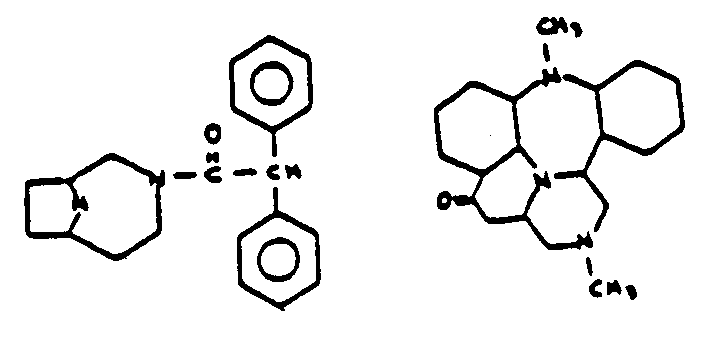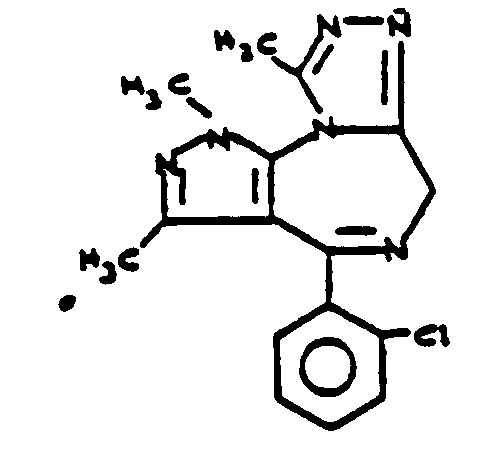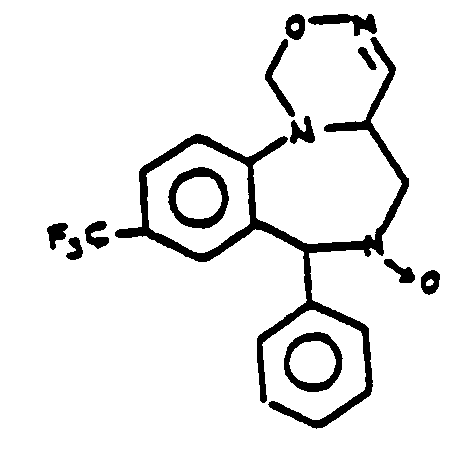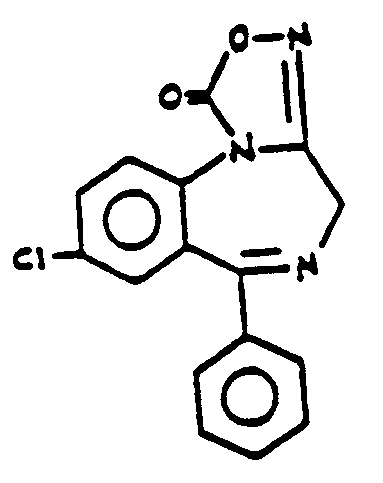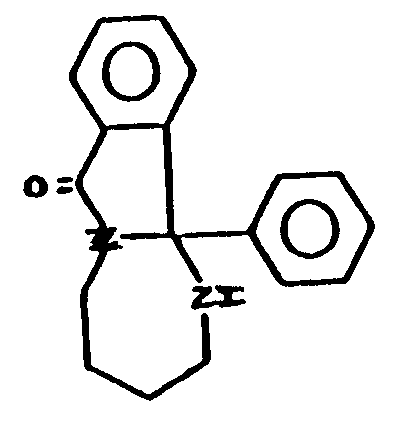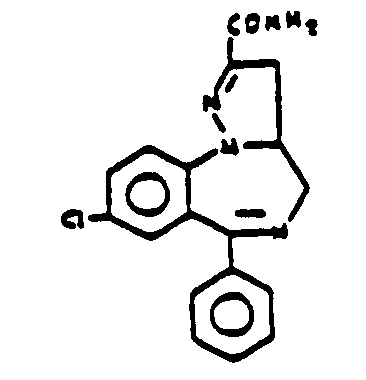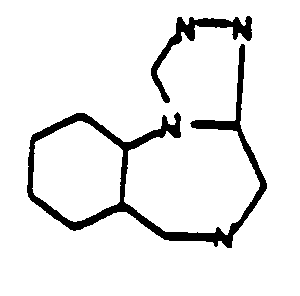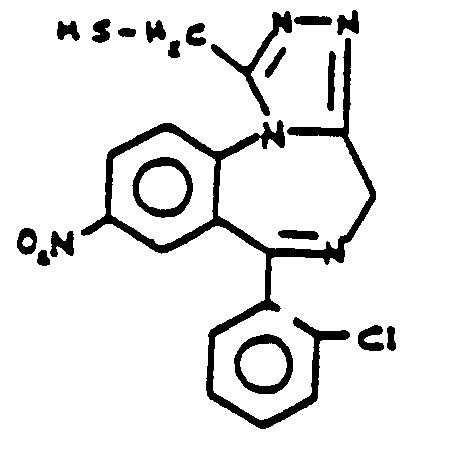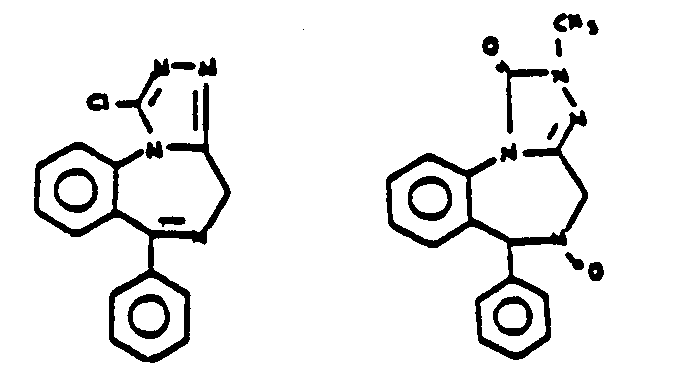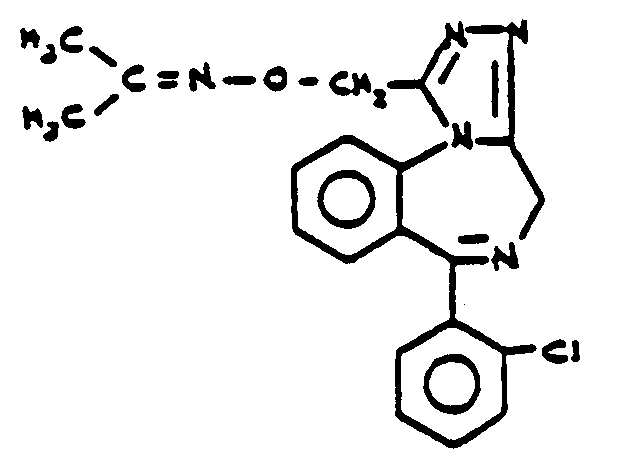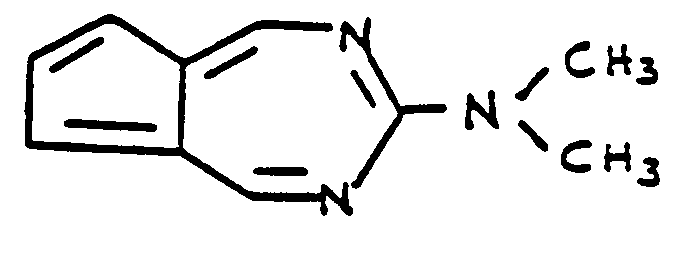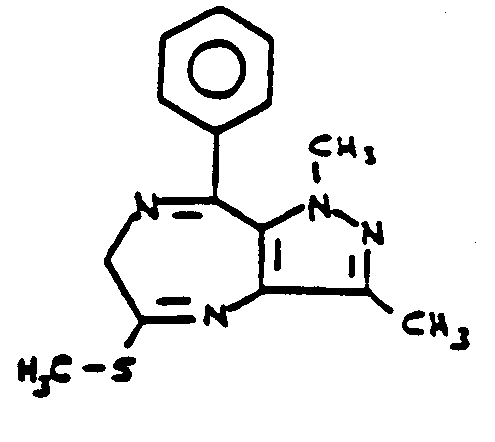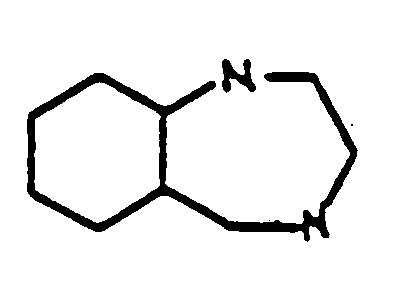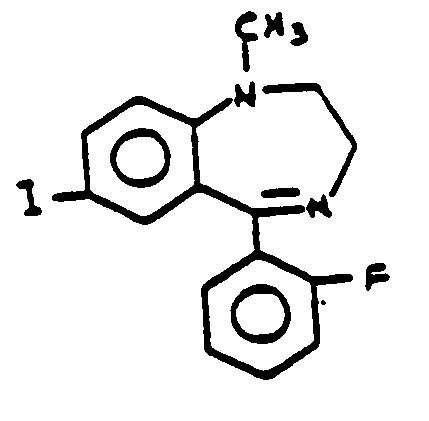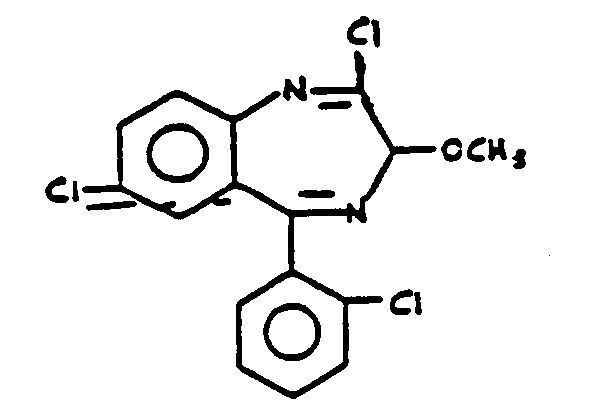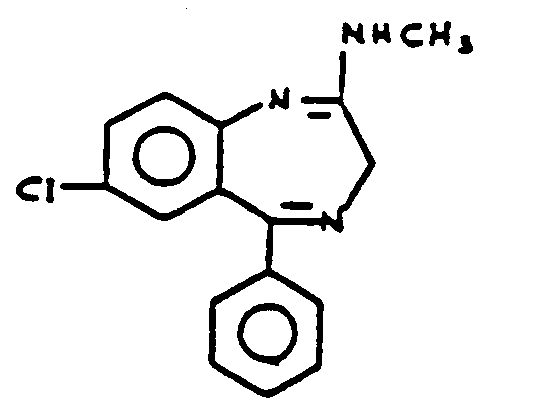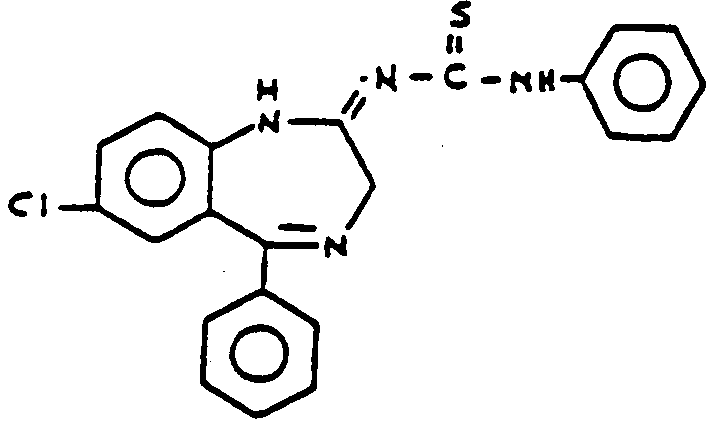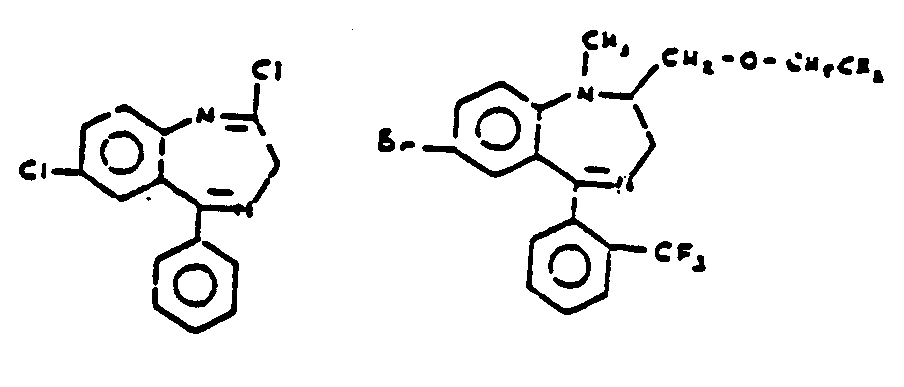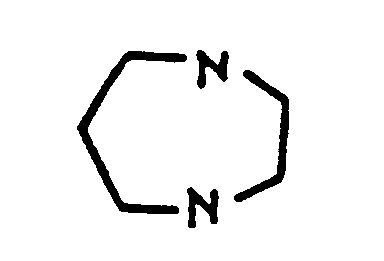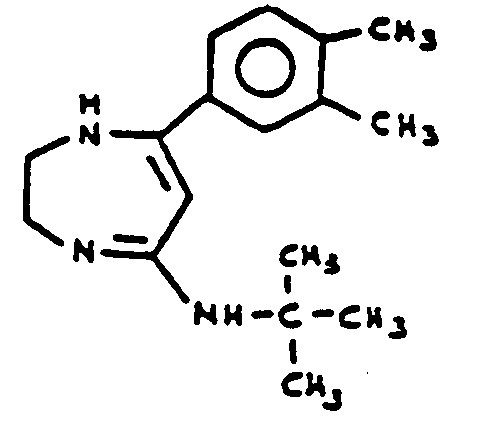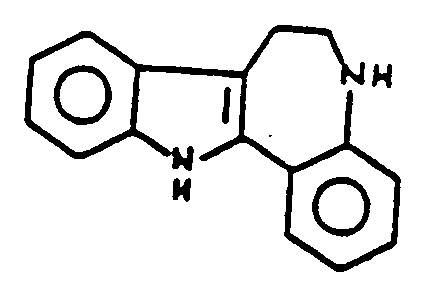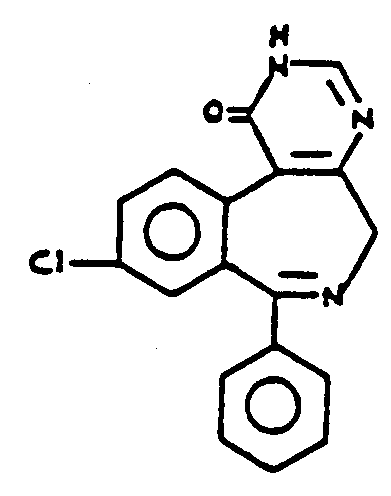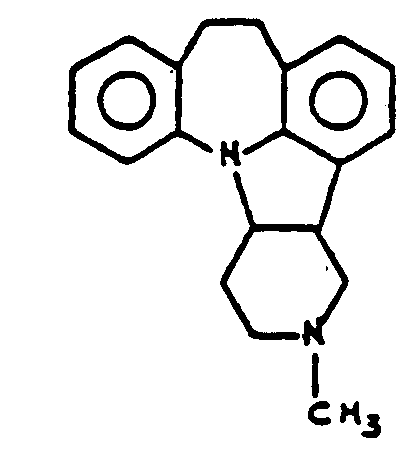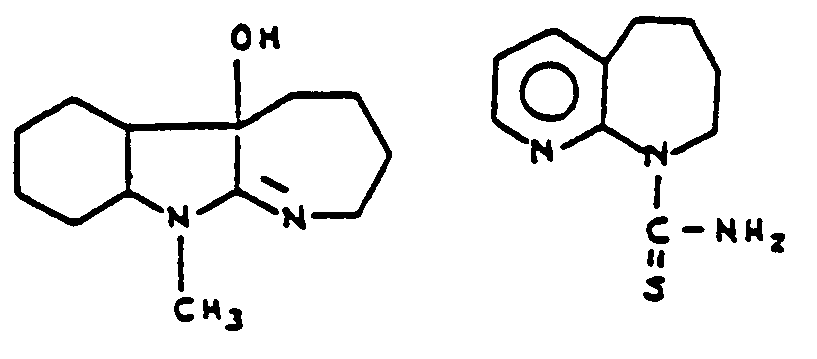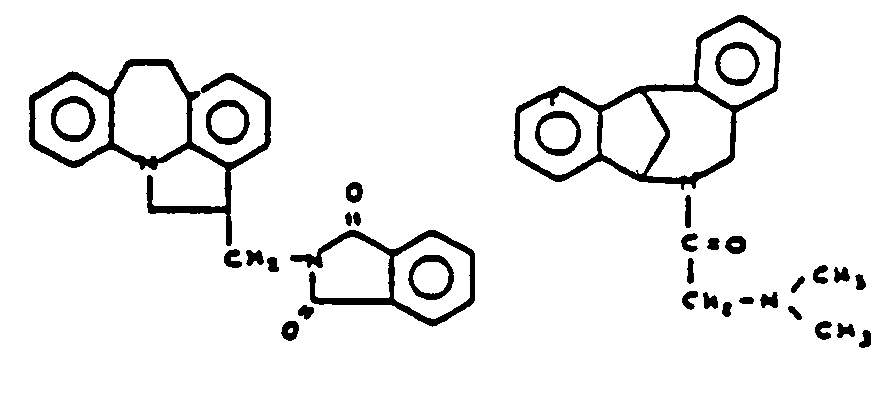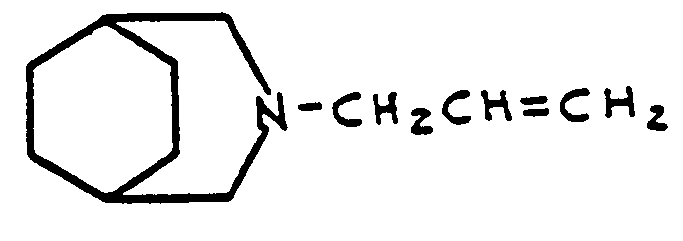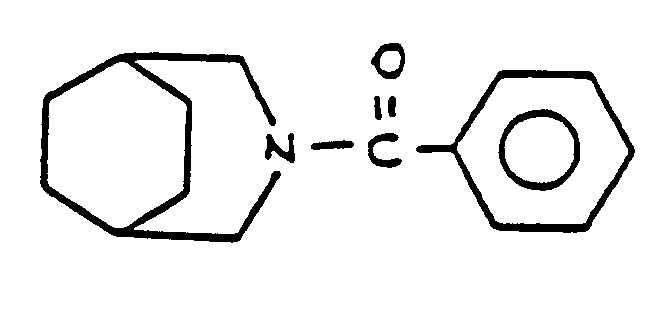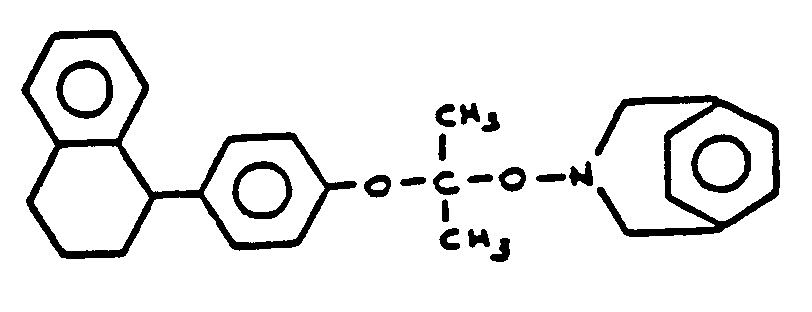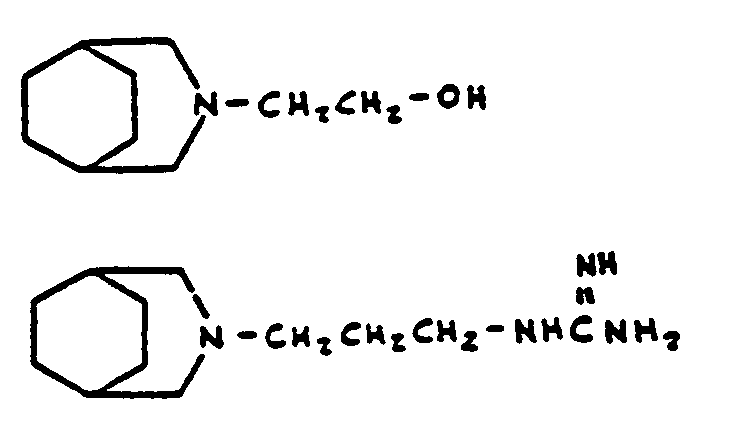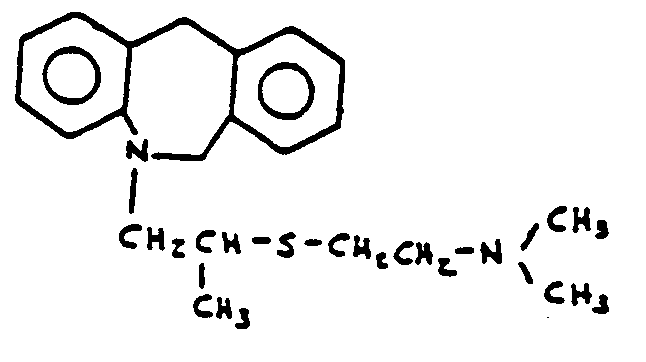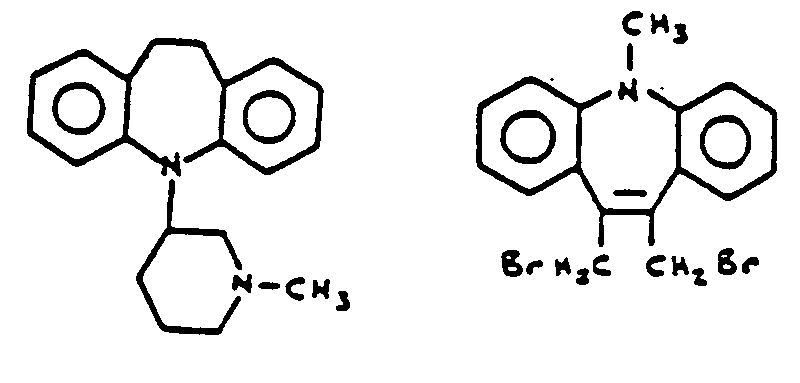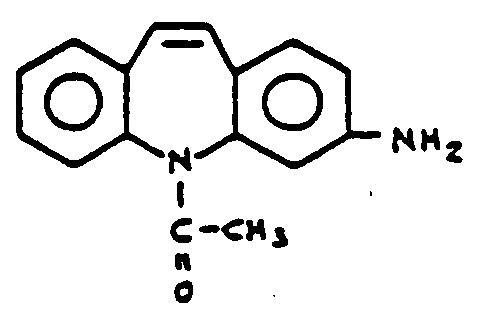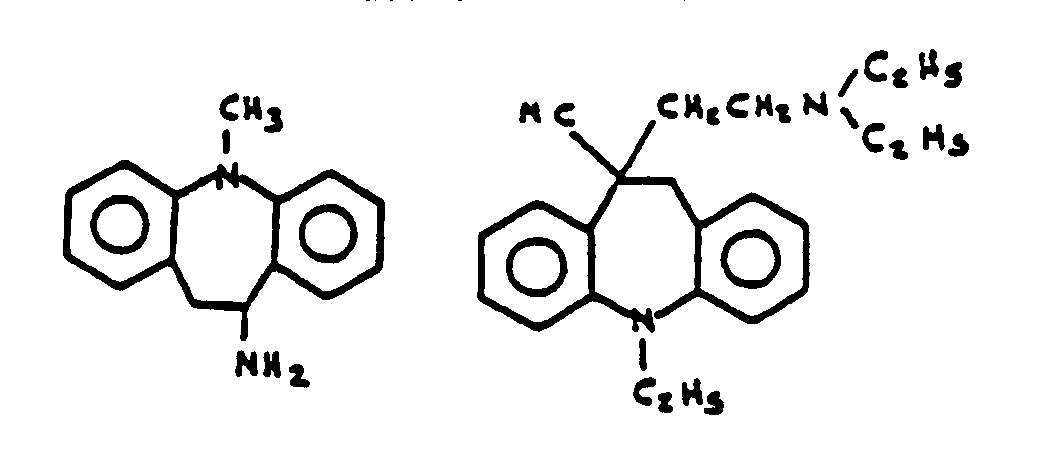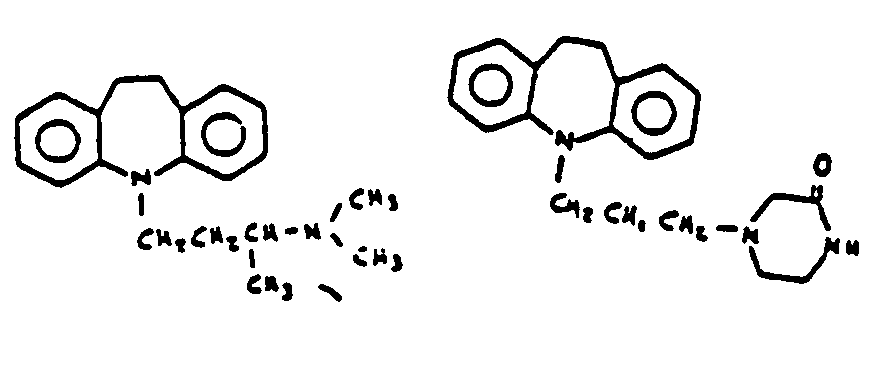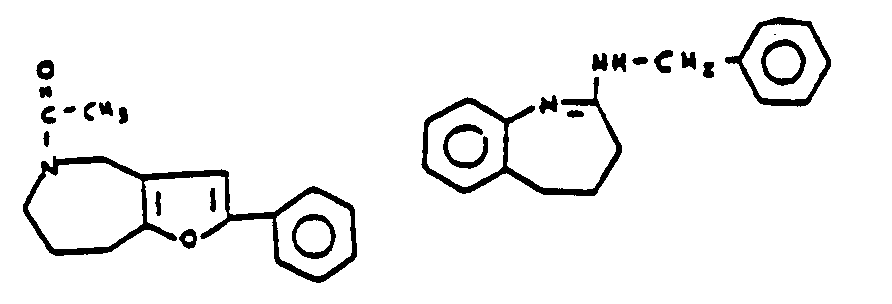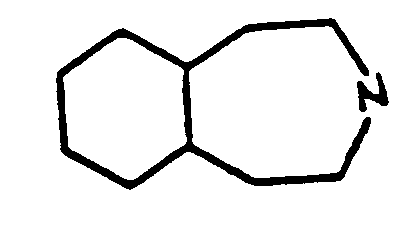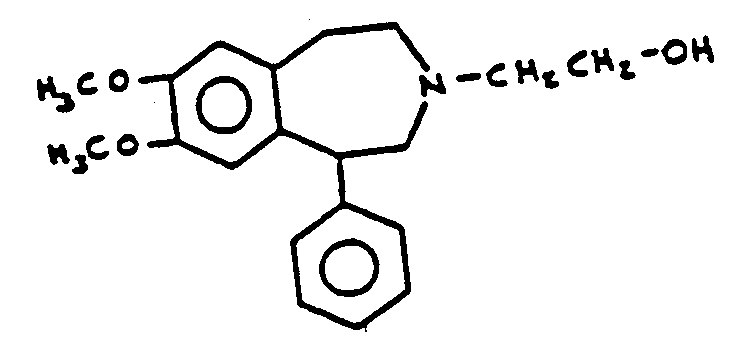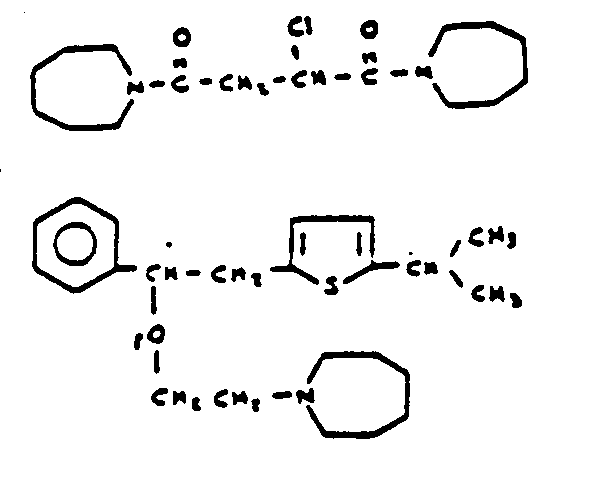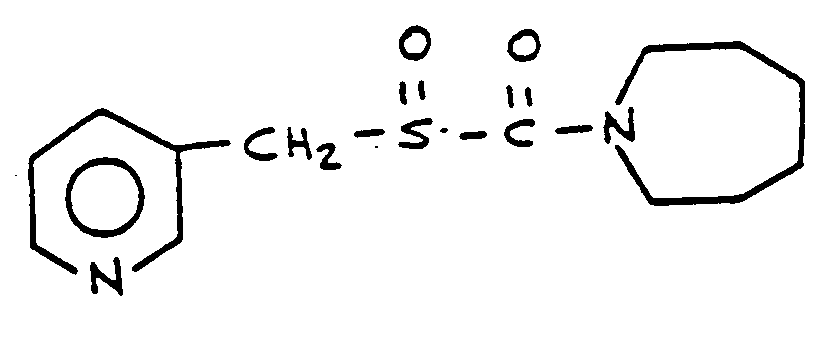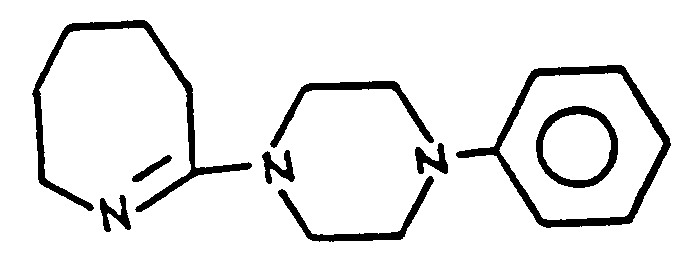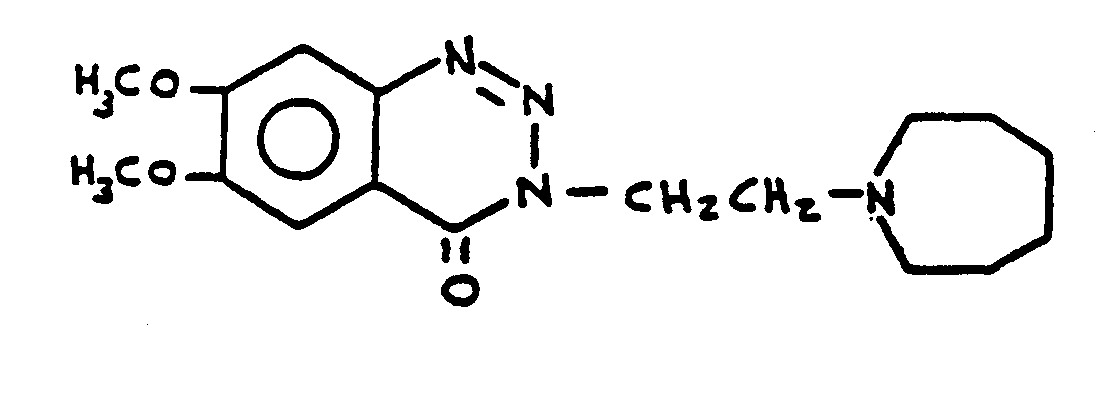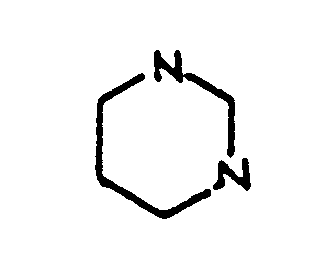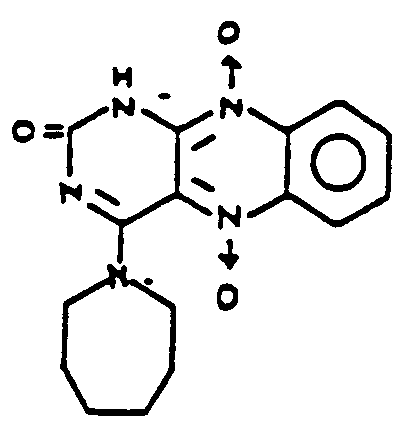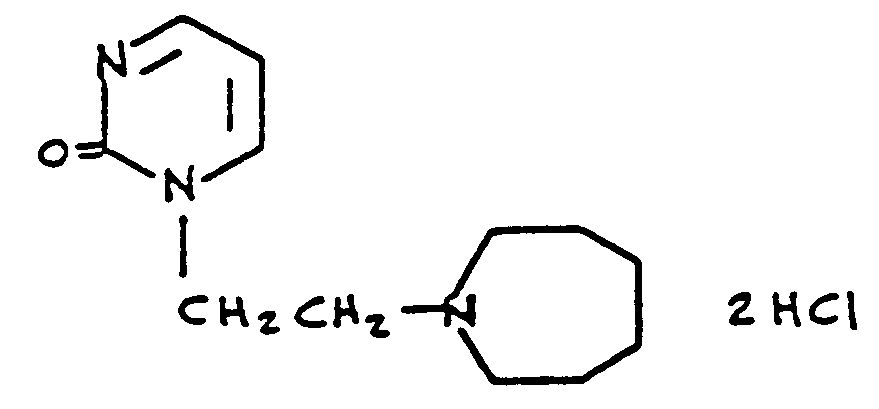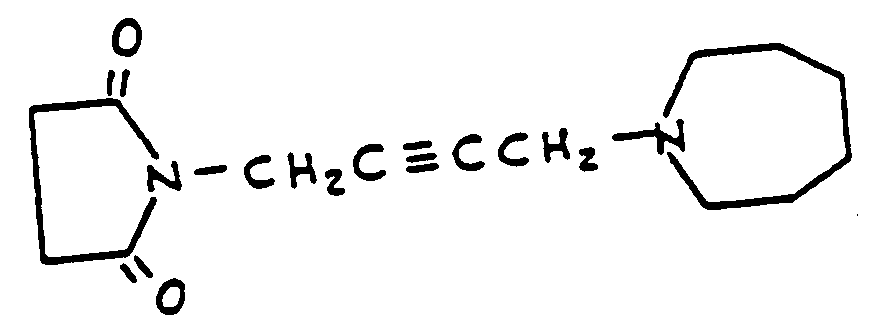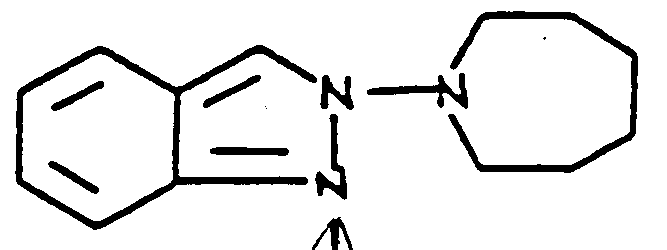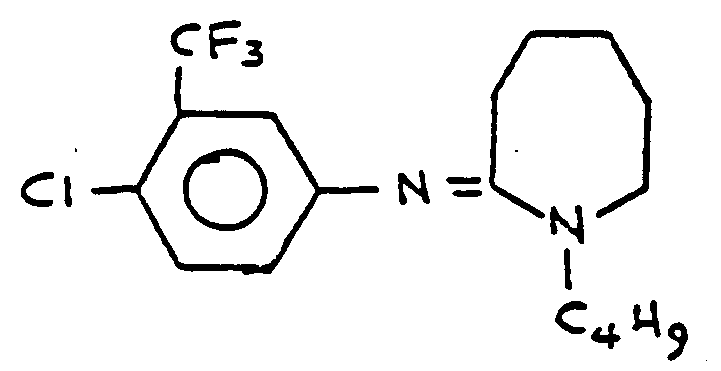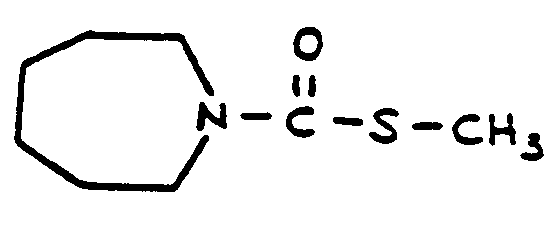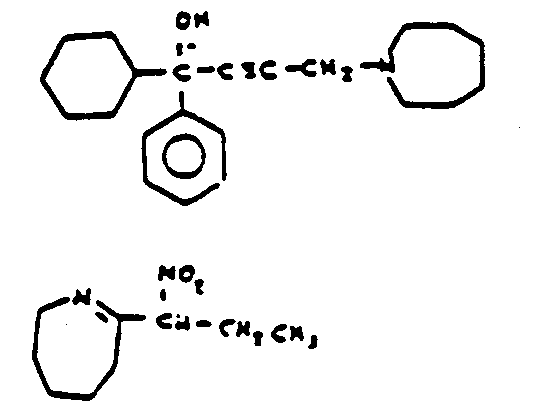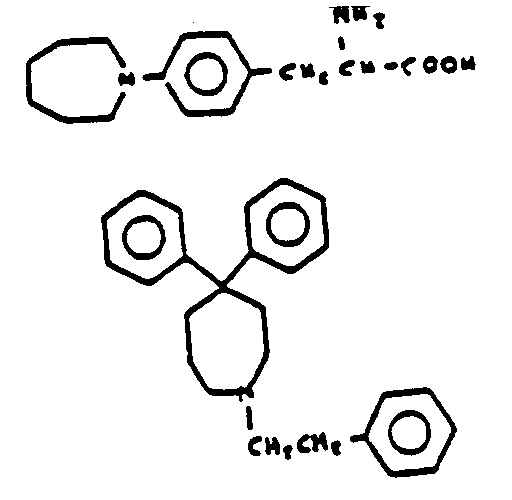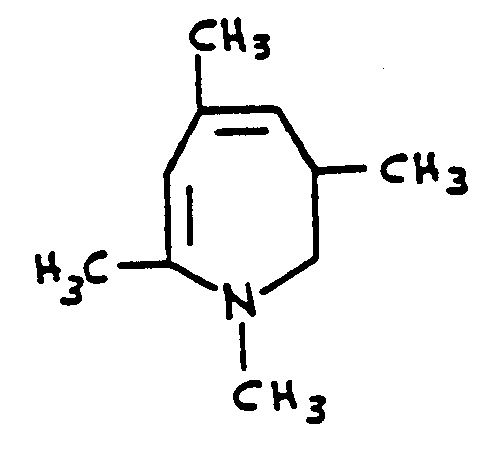![[Search a list of Patent Appplications for class 540]](../as.gif) CLASS 540, CLASS 540, | ORGANIC COMPOUNDS -- PART OF THE CLASS 532-570 SERIES |
| Click here for a printable version of this file | |
SUBCLASSES
![[List of Patents for class 540 subclass 1]](../ps.gif) 1 1 | HETEROCYCLIC CARBON COMPOUNDS CONTAINING A HETERO RING HAVING CHALCOGEN (I.E., OXYGEN, SULFUR, SELENIUM OR TELLURIUM) OR NITROGEN AS THE ONLY RING HETERO ATOMS | ||||||
This subclass is indented under subclass 1. Compounds under Class 532, ... which are heterocyclic carbon
compounds containing a hetero ring having chalcogen (i.e., oxygen,
sulfur, selenium or tellurium) or nitrogen as the only ring hetero
atoms.
SEE OR SEARCH CLASS:
| |||||||
![[List of Patents for class 540 subclass 2]](../ps.gif) 2 2 | Cyclopentanohydrophenanthrene ring system containing | ||||||||||||
| This subclass is indented under subclass 1. Compounds which additionally contain the cyclopentanohydrophenanthrene
ring system, which may contain double bonds between its ring members;
i.e.,
SEE OR SEARCH CLASS:
| |||||||||||||
![[List of Patents for class 540 subclass 3]](../ps.gif) 3 3 | Heavy metal or aluminum containing | ||||
This subclass is indented under subclass 2. Compounds which include aluminum or a metal having a specific
gravity greater than four.
| |||||
![[List of Patents for class 540 subclass 4]](../ps.gif) 4 4 | Boron or silicon containing | ||
This subclass is indented under subclass 2. Compounds which contain boron or silicon.
| |||
![[List of Patents for class 540 subclass 5]](../ps.gif) 5 5 | Phosphorus attached directly or indirectly to the cyclopentanohydrophenanthrene ring system by nonionic bonding | ||
This subclass is indented under subclass 2. Compounds wherein phosphorus is attached directly or indirectly
to the cyclopentanohydrophenanthrene ring system by nonionic bonding.
| |||
![[List of Patents for class 540 subclass 6]](../ps.gif) 6 6 | Spiro | ||
This subclass is indented under subclass 2. Compounds which contain a spiro ring system.
| |||
![[List of Patents for class 540 subclass 7]](../ps.gif) 7 7 | Plural spiro atoms | ||||
This subclass is indented under subclass 6. Compounds which contain at least two discrete spiro atoms.
| |||||
![[List of Patents for class 540 subclass 8]](../ps.gif) 8 8 | The cyclopentanohydrophenanthrene ring system is part of a polycyclo ring system having at least five cyclos | ||
This subclass is indented under subclass 7. Compounds wherein the cyclopentanohydrophenanthrene ring
system is part of a polycyclo ring system having at least five cyclos.
| |||
![[List of Patents for class 540 subclass 9]](../ps.gif) 9 9 | Nitrogen containing hetero ring as one of the cyclos of the polycyclo ring system | ||
This subclass is indented under subclass 8. Compounds which a nitrogen containing hetero ring is one
of the cyclos of the polycyclo ring system.
| |||
![[List of Patents for class 540 subclass 10]](../ps.gif) 10 10 | The cyclopentanohydrophenanthrene ring system shares spiro atoms with two hetero rings, each of which contains two oxygens (e.g., 3,17-bis-ketals, etc.) | ||
This subclass is indented under subclass 7. Compounds in which the cyclopentanohydrophenanthrene ring
system shares spiro atoms with two hetero rings, each of which contains two
oxygens.
| |||
![[List of Patents for class 540 subclass 11]](../ps.gif) 11 11 | The cyclopentanohydrophenanthrene ring system shares a spiro atom with a lactone ring (i.e., -C(=X)-O- is part of the ring, wherein X is chalcogen) | ||
This subclass is indented under subclass 7. Compounds in which the cyclopentanohydrophenanthrene ring
system shares a spiro atom with a lactone ring; i.e., - - O -, wherein
X is chalcogen (i.e., oxygen, sulfur, selenium or tellurium), and
is part of the ring.
| |||
![[List of Patents for class 540 subclass 12]](../ps.gif) 12 12 | Plural oxygens in both rings which share a spiro atom (e.g., 17,20;20,21 bismethylenedioxy-pregnanes, etc.) | ||
This subclass is indented under subclass 7. Compounds wherein both rings which share a spiro atom contain
at least two oxygens.
| |||
![[List of Patents for class 540 subclass 13]](../ps.gif) 13 13 | Nitrogen, sulfur, cyano or -C(=X)-, wherein X is chalcogen, bonded directly to the cyclopentanohydrophenanthrene ring system | ||
This subclass is indented under subclass 12. Compounds in which nitrogen, sulfur, cyano or -C(=X)-,
wherein X is chalcogen (i.e, oxygen, sulfur, selenium or tellurium),
is bonded directly to the cyclopentanohydrophenanthrene ring system.
| |||
![[List of Patents for class 540 subclass 14]](../ps.gif) 14 14 | Halogen attached directly or indirectly to the cyclopentanohydrophenanthrene ring system by acyclic nonionic bonding | ||
This subclass is indented under subclass 12. Compounds in which halogen is attached directly or indirectly
to the cyclopentanohydrophenanthrene ring system by acyclic nonionic bonding.
| |||
![[List of Patents for class 540 subclass 15]](../ps.gif) 15 15 | The cyclopentanohydrophenanthrene ring system is part of a polycyclo ring system having at least five cyclos | ||
This subclass is indented under subclass 6. Compounds wherein the cyclopentanohydrophenanthrene ring
system is part of a polycyclo ring system having at least five cyclos.
| |||
![[List of Patents for class 540 subclass 16]](../ps.gif) 16 16 | Hetero ring is one of the cyclos of the polycyclo ring system | ||
This subclass is indented under subclass 15. Compounds in which a hetero ring is one of the cyclos of
the polycyclo ring system.
| |||
![[List of Patents for class 540 subclass 17]](../ps.gif) 17 17 | The hetero ring is five-membered, consisting of one oxygen and four carbons, and shares the spiro atom with a six-membered oxygen containing hetero ring (e.g., sapogenins, etc.) | ||
This subclass is indented under subclass 16. Compounds wherein the hetero ring is five-membered, consisting
of one oxygen and four carbons, and shares the spiro atom with a
six-membered hetero ring which contains oxygen.
| |||
![[List of Patents for class 540 subclass 18]](../ps.gif) 18 18 | Purification or recovery |
| This subclass is indented under subclass 17. Processes wherein the cyclopentanohydrophenanthrene containing compound is separated from impurities or from the reaction medium. | |
![[List of Patents for class 540 subclass 19]](../ps.gif) 19 19 | Chalcogen bonded directly at the 12-position of the cyclopentanohydrophenanthrene ring system (e.g., hecogenin, etc.) | ||
This subclass is indented under subclass 17. Compounds wherein chalcogen (i.e., oxygen, sulfur, selenim
or tellurium) is bonded directly at the 12-position of the cyclopentanohydrophenanthrene
ring system.
| |||
![[List of Patents for class 540 subclass 20]](../ps.gif) 20 20 | Chalcogen bonded directly at the 11-position of the cyclopentanohydrophenanthrene ring system | ||
This subclass is indented under subclass 17. Compounds wherein chalcogen (i.e., oxygen, sulfur, selenium
or tellurium) is bonded directly at the 11-position of the cyclopentanohydrophenanthrene
ring system.
| |||
![[List of Patents for class 540 subclass 21]](../ps.gif) 21 21 | Chalcogen bonded directly at the 7-position of the cyclopentanohydrophenanthrene ring system | ||
This subclass is indented under subclass 20. Compounds wherein chalcogen (i.e, oxygen, sulfur, selenium
or tellurium) is bonded directly at the 7-position of the cyclopentanohydrophenanthrene
ring system.
| |||
![[List of Patents for class 540 subclass 22]](../ps.gif) 22 22 | Halogen, cyano, nitrogen or sulfur bonded directly to the cyclopentanohydrophenanthrene ring system | ||
This subclass is indented under subclass 17. Compounds wherein halogen, cyano,nitrogen or sulfur is bonded
directly to the cyclopentanohydrophenanthrene ring system.
| |||
![[List of Patents for class 540 subclass 23]](../ps.gif) 23 23 | The spiro atom is the 17-position carbon of the cyclopentanohydrophenanthrene ring system | ||
This subclass is indented under subclass 16. Compounds in which the 17-position carbon of the cyclopentanohydrophenanthrene
ring system is the spiro atom.
| |||
![[List of Patents for class 540 subclass 24]](../ps.gif) 24 24 | The hetero ring shares the 11,12,13-positions of the cyclopentanohydrophenanthrene ring system (i.e., bridged; e.g., 11,18-oxido steroids, etc.) | ||
This subclass is indented under subclass 16. Compounds in which the hetero ring shares the 11, 12, 13-positions
of the cyclopentanohydrophenanthrene ring system (i.e., C-ring bridge).
| |||
![[List of Patents for class 540 subclass 25]](../ps.gif) 25 25 | The hetero ring is three-membered consisting of one oxygen and two carbons (e.g., oxirane, etc.) | ||
This subclass is indented under subclass 16. Compounds in which the hetero ring is three-membered consisting
of one oxygen and two carbons.
| |||
![[List of Patents for class 540 subclass 26]](../ps.gif) 26 26 | The hetero ring shares the 5,6-positions of the cyclopentanohydrophenanthrene ring system | ||
This subclass is indented under subclass 25. Compounds wherein the three-membered hetero ring shares
the 5, 6-position of the cyclopentanohydrophenanthrene ring system
(i.e, ortho-fused to the B-ring).
| |||
![[List of Patents for class 540 subclass 27]](../ps.gif) 27 27 | The hetero ring contains two chalcogens which are bonded directly at the 16 and 17-positions of the cyclopentanohydrophenanthrene ring system | ||
This subclass is indented under subclass 16. Compounds wherein the hetero ring contains two chalcogens
(i.e., oxygen, sulfur, selenium or tellurium) which are bonded directly
at the 16- and 17-positions of the cyclopentanohydrophenanthrene
ring system (i.e., orth-fused to the D-ring).
| |||
![[List of Patents for class 540 subclass 28]](../ps.gif) 28 28 | The spiro includes the cyclopentanohydrophenanthrene ring system and a hetero ring | ||
This subclass is indented under subclass 6. Compounds in which the cyclopentanohydrophenanthrene ring
system shares a spiro atom with a hetero ring.
| |||
![[List of Patents for class 540 subclass 29]](../ps.gif) 29 29 | Nitrogen in the spiro hetero ring | ||
This subclass is indented under subclass 28. Compounds in which the spiro hetero ring contains nitrogen.
| |||
![[List of Patents for class 540 subclass 30]](../ps.gif) 30 30 | Sulfur in the spiro hetero ring | ||||
This subclass is indented under subclass 28. Compounds in which the spiro hetero ring contains sulfur.
| |||||
![[List of Patents for class 540 subclass 31]](../ps.gif) 31 31 | Plural oxygens in the spiro hetero ring | ||
This subclass is indented under subclass 28. Compounds in which the spiro hetero ring contains at least
two oxygens.
| |||
![[List of Patents for class 540 subclass 32]](../ps.gif) 32 32 | The A ring is a benzene ring | ||
This subclass is indented under subclass 31. Compounds in which the A ring of the cyclopentanohydrophenanthrene
ring system contains three alternating double bonds (i.e., is a benzene
ring).
| |||
![[List of Patents for class 540 subclass 33]](../ps.gif) 33 33 | Chalcogen bonded directly to the spiro hetero ring | ||
This subclass is indented under subclass 31. Compounds wherein chalcogen (i.e., oxygen, sulfur, selenium
or tellurium) is bonded directly to the spiro hetero ring.
| |||
![[List of Patents for class 540 subclass 34]](../ps.gif) 34 34 | The spiro hetero ring shares the 3-position carbon of the cyclopentanohydrophenanthrene ring system | ||
This subclass is indented under subclass 31. Compounds in which the spiro atom is the 3-position of the
cyclopentanohydrophenanthrene ring system.
| |||
![[List of Patents for class 540 subclass 35]](../ps.gif) 35 35 | Halogen bonded directly to the cyclopentanohydrophenanthrene ring system | ||
This subclass is indented under subclass 34. Compounds in which halogen is bonded directly to the cyclopentanohydrophenanthrene ring
system.
| |||
![[List of Patents for class 540 subclass 36]](../ps.gif) 36 36 | Nitrogen attached directly or indirectly to the cyclopentanohydrophenanthrene ring system by nonionic bonding | ||
This subclass is indented under subclass 34. Compounds in which nitrogen is attached directly or indirectly
to the cyclopentanohydrophenanthrene ring system by nonionic bonding.
| |||
![[List of Patents for class 540 subclass 37]](../ps.gif) 37 37 | Plural cyclic ketal rings containing (e.g., 3,20-bis-ketals, etc.) | ||
This subclass is indented under subclass 34. Compounds which contain at least two cyclic ketal rings.
| |||
![[List of Patents for class 540 subclass 38]](../ps.gif) 38 38 | Chalcogen bonded directly at the 11-position of the cyclopentanohydrophenanthrene ring system | ||
This subclass is indented under subclass 34. Compounds in which chalogen (i.e., oxygen, sulfur, selenium
or tellurium) is bonded directly at the 11-position of the cyclopentanohydrophenanthrene
ring system.
| |||
![[List of Patents for class 540 subclass 39]](../ps.gif) 39 39 | The cyclopentanohydrophenanthrene ring system is fully saturated | ||
This subclass is indented under subclass 34. Compounds wherein there are no double bonds between any
ring members of the cyclopentanohydrophenanthrene ring system.
| |||
![[List of Patents for class 540 subclass 40]](../ps.gif) 40 40 | Carbon chain having carbon-to-carbon unsaturation bonded directly at the 17 position of the cyclopentanohydrophenanthrene ring system | ||
This subclass is indented under subclass 34. Compounds in which a carbon chain having carbon-to-carbon
unsaturation is bonded directly at the 17-position of the cyclopentanohydrophenanthrene
ring system.
| |||
![[List of Patents for class 540 subclass 41]](../ps.gif) 41 41 | The spiro hetero ring contains -C(=X)-O-, wherein X is chalcogen, as part of the ring (e.g., spiro-lactones, etc.) | ||
This subclass is indented under subclass 28. Compounds in which-C-O-, wherein X is chalcogen (i.e., oxygen,
sulfur, selenium or tellurium), is part of the spiro hetero ring.
| |||
![[List of Patents for class 540 subclass 42]](../ps.gif) 42 42 | Sulfur bonded directly to the cyclopentanohydrophenanthrene ring system | ||
This subclass is indented under subclass 41. Compounds in which sulfur is bonded directly to the cyclopentanohydrophenanthrene
ring system.
| |||
![[List of Patents for class 540 subclass 43]](../ps.gif) 43 43 | Chalcogen bonded directly at the 11-position of the cyclopentanohydrophenanthrene ring system | ||
This subclass is indented under subclass 41. Compounds in which chalcogen (i.e., oxygen, sulfur selenium
or tellurium) is bonded directly at the 11-position of the cyclopentanohydrophenanthrene
ring system.
| |||
![[List of Patents for class 540 subclass 44]](../ps.gif) 44 44 | Chalcogen, halogen, or nitrogen attached indirectly to the cyclopentanohydrophenanthrene ring system by acyclic nonionic bonding | ||
This subclass is indented under subclass 41. Compounds in which chalcogen (i.e., oxygen, sulfur, selenium
or tellurium), halogen or nitrogen is attached indirectly to the
cyclopentanohydrophenanthrene ring system by acyclic nonionic bonding.
| |||
![[List of Patents for class 540 subclass 45]](../ps.gif) 45 45 | The spiro hetero ring is four-membered consisting of one oxygen and three carbons | ||
This subclass is indented under subclass 28. Compounds in which the spiro hetero ring is four-membered
consisting of one oxygen and three carbons.
| |||
![[List of Patents for class 540 subclass 46]](../ps.gif) 46 46 | The spiro hetero ring is three-membered consisting of one oxygen and two carbons (e.g., oxirane, etc.) | ||
This subclass is indented under subclass 28. Compounds wherein the spiro hetero ring is three-membered
consisting of one oxygen and two carbons.
| |||
![[List of Patents for class 540 subclass 47]](../ps.gif) 47 47 | The cyclopentanohydrophenanthrene ring system is part of a polycyclo ring system having at least five cyclos | ||
This subclass is indented under subclass 2. Compounds in which the cylopentanohydrophenanthrene ring
system is part of a polycyclo ring system having at least five cyclos.
| |||
![[List of Patents for class 540 subclass 48]](../ps.gif) 48 48 | Hetero ring is one of the cyclos of the polycyclo ring system | ||
This subclass is indented under subclass 47. Compounds wherein a hetero ring is one of the cyclos of
the polycyclo ring system.
| |||
![[List of Patents for class 540 subclass 49]](../ps.gif) 49 49 | The hetero ring contains nitrogen | ||
This subclass is indented under subclass 48. Compounds in which the hetero ring contains nitrogen.
| |||
![[List of Patents for class 540 subclass 50]](../ps.gif) 50 50 | Plural nitrogens in the hetero ring | ||
This subclass is indented under subclass 49. Compounds in which the hetero ring contains at least two
nitrogens.
| |||
![[List of Patents for class 540 subclass 51]](../ps.gif) 51 51 | The hetero ring is five-membered | ||
This subclass is indented under subclass 50. Compounds in which the hetero ring is five-membered.
| |||
![[List of Patents for class 540 subclass 52]](../ps.gif) 52 52 | The hetero ring consists of two nitrogens and three carbons and is ortho fused to the A ring | ||
This subclass is indented under subclass 51. Compounds wherein the hetero ring consists of two nitrogens
and three carbons and is ortho-fused to the A ring.
| |||
![[List of Patents for class 540 subclass 53]](../ps.gif) 53 53 | Having -C(=X)-, wherein X is chalcogen, bonded directly at the 17-position of the cyclopentanohydrophenanthrene ring system | ||
This subclass is indented under subclass 52. Compounds in which -C- wherein X is chalcogen (i.e., oxygen,
sulfur, selenium or tellurium) is bonded directly at the 17-position
of the cyclopentanohydrophenanthrene ring system.
| |||
![[List of Patents for class 540 subclass 54]](../ps.gif) 54 54 | The hetero ring consists of two nitrogens and three carbons and is ortho fused to the D ring | ||
This subclass is indented under subclass 51. Compounds wherein the hetero ring consists of two nitrogens
and three carbons and is ortho-fused to the D ring.
| |||
![[List of Patents for class 540 subclass 55]](../ps.gif) 55 55 | Chalcogen in the hetero ring | ||
This subclass is indented under subclass 49. Compounds in which the hetero ring contains chalcogen (i.e.,
oxygen, sulfur, selenium or tellurium) in addition to the nitrogen.
| |||
![[List of Patents for class 540 subclass 56]](../ps.gif) 56 56 | The hetero ring is five-membered | ||
This subclass is indented under subclass 55. Compounds in which the hetero ring is five-membered.
| |||
![[List of Patents for class 540 subclass 57]](../ps.gif) 57 57 | The hetero ring is ortho-fused to the A ring | ||
This subclass is indented under subclass 56. Compounds in which the hetero ring is ortho-fused to the
A ring.
| |||
![[List of Patents for class 540 subclass 58]](../ps.gif) 58 58 | The hetero ring is five-membered | ||
This subclass is indented under subclass 49. Compounds wherein the hetero ring is five-membered.
| |||
![[List of Patents for class 540 subclass 59]](../ps.gif) 59 59 | The hetero ring contains sulfur | ||
This subclass is indented under subclass 48. Compounds wherein the hetero ring contains sulfur.
| |||
![[List of Patents for class 540 subclass 60]](../ps.gif) 60 60 | The hetero ring is a cyclic anhydride (i.e., containing -C(=X)-O-C(=Y)- as part of the ring, wherein X and Y are chalcogen; e.g., 5,8-maleic anhydride adduct of 5,7,9(11)-pregnatrien-3,20-di-one, etc.) | ||
This subclass is indented under subclass 48. Compounds in which - - O - -, wherein X and Y may be the
same or diverse chalogens (i.e., oxygen, sulfur, selenium or tellurium),
is part of the hetero ring.
| |||
![[List of Patents for class 540 subclass 61]](../ps.gif) 61 61 | The hetero ring contains plural oxygens | ||
This subclass is indented under subclass 48. Compounds wherein the hetero ring contains at least two
oxygens.
| |||
![[List of Patents for class 540 subclass 62]](../ps.gif) 62 62 | Two of the cyclos share at least three ring members or a ring carbon is shared by three of the cyclos (e.g., bridged, peri-fused, etc.) | ||
This subclass is indented under subclass 61. Compounds wherein (a) at least three ring members of one
cyclo are ring members of an additional cyclo or (b) a ring carbon
is a member of three of the cyclos in the polycyclo ring system
(e.g., bridged or peri-fused, etc.).
| |||
![[List of Patents for class 540 subclass 63]](../ps.gif) 63 63 | The hetero ring is ortho-fused to the D ring | ||
This subclass is indented under subclass 61. Compounds wherein the hetero ring is ortho-fused to the
D ring.
| |||
![[List of Patents for class 540 subclass 64]](../ps.gif) 64 64 | At least six cyclos in the polycyclo ring system | ||
This subclass is indented under subclass 63. Compounds wherein the polycyclo ring system contains at
least six cyclos.
| |||
![[List of Patents for class 540 subclass 65]](../ps.gif) 65 65 | Nitrogen or acyclic chalcogen bonded directly to the hetero ring (e.g., cyclic carbonates, etc.) | ||
This subclass is indented under subclass 63. Compounds wherein nitrogen or acyclic chalcogen (i.e., oxygen,
sulfur, selenium or tellurium) is bonded directly to the hetero
ring.
| |||
![[List of Patents for class 540 subclass 66]](../ps.gif) 66 66 | The A ring is a benzene ring | ||
This subclass is indented under subclass 63. Compounds in which the A ring of the cyclopentanohydrophenanthrene
ring system contains three alternating double bonds (i.e., is a benzene
ring).
| |||
![[List of Patents for class 540 subclass 67]](../ps.gif) 67 67 | Sulfur or nitrogen attached directly or indirectly to the cyclopentanohydrophenanthrene ring system by acyclic nonionic bonding | ||
This subclass is indented under subclass 63. Compounds in which sulfur or nitrogen is attached directly
or indirectly to the cyclopentanohydrophenanthrene ring system by
acyclic nonionic bonding.
| |||
![[List of Patents for class 540 subclass 68]](../ps.gif) 68 68 | Halogen attached indirectly to the cyclopentanohydrophenanthrene ring system by acyclic nonionic bonding | ||
This subclass is indented under subclass 63. Compounds in which halogen is attached indirectly to cyclopentanohydrophenanthrene
ring system by acyclic nonionic bonding.
| |||
![[List of Patents for class 540 subclass 69]](../ps.gif) 69 69 | Halogen bonded directly to the cyclopentanohydrophenanthrene ring system | ||
This subclass is indented under subclass 63. Compounds in which halogen is bonded directly to the cyclopentanohydrophenanthrene ring
system.
| |||
![[List of Patents for class 540 subclass 70]](../ps.gif) 70 70 | Oxygen bonded directly at the 11-position of the cyclopentanohydrophenanthrene ring system | ||
This subclass is indented under subclass 69. Compounds in which oxygen is bonded directly at the 11-position
of the cyclopentanohydrophenanthrene ring system.
| |||
![[List of Patents for class 540 subclass 71]](../ps.gif) 71 71 | Oxygen attached directly to the B ring or indirectly to the A or B ring by acyclic nonionic bonding | ||
This subclass is indented under subclass 63. Compounds in which oxygen is either (a) attached directly
to the B ring or (b) attached indirectly to the A or B ring by acyclic
nonionic bonding.
| |||
![[List of Patents for class 540 subclass 72]](../ps.gif) 72 72 | The hetero ring is a lactone (i.e., containing -C(=X)-O- as part of the ring, wherein X is chalcogen) | ||
This subclass is indented under subclass 48. Compounds in which - - O -, wherein X is chalcogen (i.e.,
oxygen, sulfur, selenium or tellurium), is part of the hetero ring
(i.e., a lactone ring).
| |||
![[List of Patents for class 540 subclass 73]](../ps.gif) 73 73 | The lactone ring shares at least three ring members with one other cyclo of the polycylo ring system (i.e., bridged) | ||
This subclass is indented under subclass 72. Compounds wherein the lactone ring shares at least three
ring members with an additional cyclo of the polycyclo ring system
(i.e., bridged).
| |||
![[List of Patents for class 540 subclass 74]](../ps.gif) 74 74 | The lactone ring shares the 11,12,13-positions of the cyclopentanohydrophenanthrene ring system (e.g., 11, 18-lactones, etc.) | ||
This subclass is indented under subclass 73. Compounds wherein the lactone ring shares the 11, 12, 13-positions
of the cyclopentanohydrophenanthrene ring system (i.e., C ring bridge).
| |||
![[List of Patents for class 540 subclass 75]](../ps.gif) 75 75 | The lactone ring shares a ring carbon with two other cyclos of the polycyclo ring system (e.g., peri-fused, etc.) | ||
This subclass is indented under subclass 72. Compounds wherein the lactone ring shares a ring carbon
with two other cyclos of the polycyclo ring system.
| |||
![[List of Patents for class 540 subclass 76]](../ps.gif) 76 76 | The hetero ring is three-membered consisting of one oxygen and two carbons (e.g., oxirane, etc.) | ||
This subclass is indented under subclass 48. Compounds in which the hetero ring is three-membered consisting
of one oxygen and two carbons.
| |||
![[List of Patents for class 540 subclass 77]](../ps.gif) 77 77 | The polycyclo ring system contains plural oxirane rings | ||
This subclass is indented under subclass 76. Compounds in which at least two oxirane rings are cyclos
of the polycyclo ring system.
| |||
![[List of Patents for class 540 subclass 78]](../ps.gif) 78 78 | The hetero ring shares the 1,2-positions of the cyclopentanohydrophenanthrene ring system | ||||
This subclass is indented under subclass 76. Compounds in which the hetero ring is ortho-fused to the
A ring of the cyclopentanohydrophenanthrene ring system at the 1,2-positions.
| |||||
![[List of Patents for class 540 subclass 79]](../ps.gif) 79 79 | The hetero ring shares the 4,5-positions of the cyclopentanohydrophenanthrene ring system | ||
This subclass is indented under subclass 76. Compounds in which the hetero ring is ortho-fused to the
A ring of the cyclopentanohydrophenanthrene ring system at the 4,5-positions.
| |||
![[List of Patents for class 540 subclass 80]](../ps.gif) 80 80 | The hetero ring shares the 5,6-positions of the cyclopentanohydrophenanthrene ring system | ||
This subclass is indented under subclass 76. Compounds in which the hetero ring is ortho-fused to the
B ring of the cylopentanohydrophenanthrene ring system at the r6-positions.
| |||
![[List of Patents for class 540 subclass 81]](../ps.gif) 81 81 | The hetero ring shares the 6,7-positions of the cyclopentanohydrophenanthrene ring system | ||
This subclass is indented under subclass 76. Compounds in which the hetero ring is ortho-fused to the
B ring of the cyclopentanohydrophenanthrene ring system at the 6,7-positions.
| |||
![[List of Patents for class 540 subclass 82]](../ps.gif) 82 82 | The hetero ring shares the 11,12-positions of the cyclopentanohydrophenanthrene ring system | ||
This subclass is indented under subclass 76. Compounds in which the hetero ring is ortho-fused to the
C ring of the cyclopentanohydrophenanthrene ring system at the 11,
12-positions.
| |||
![[List of Patents for class 540 subclass 83]](../ps.gif) 83 83 | The hetero ring shares the 14,15-positions of the cyclopentanohydrophenanthrene ring system | ||
This subclass is indented under subclass 76. Compounds in which the hetero ring is ortho-fused to the
D ring of the cyclopentanohydrophenanthrene ring system at the 14,
15-positions.
| |||
![[List of Patents for class 540 subclass 84]](../ps.gif) 84 84 | The hetero ring shares the 16,17-positions of the cyclopentanohydrophenanthrene ring system | ||
This subclass is indented under subclass 76. Compounds in which the hetero ring is ortho-fused to the
D ring of the cyclopentanohydrophenanthrene ring system at the 16,
17-positions.
| |||
![[List of Patents for class 540 subclass 85]](../ps.gif) 85 85 | Halogen bonded directly to the cyclopentanohydrophenanthrene ring system | ||
Compounds under subclass in 84 which halogen is bonded directly
to the cyclopentanohydrophenanthrene ring system.
| |||
![[List of Patents for class 540 subclass 86]](../ps.gif) 86 86 | Saturated A ring | ||
This subclass is indented under subclass 84. Compounds wherein the A ring is completely saturated; i.e.,
contains nor shares any double bonds between its ring members.
| |||
![[List of Patents for class 540 subclass 87]](../ps.gif) 87 87 | The hetero ring shares the 9,11-positions of the cyclopentanohydrophenanthrene ring system | ||
This subclass is indented under subclass 76. Compounds in which the hetero ring is ortho-fused to the
C ring of the cyclopentanohydrophenanthrene ring system at the 9,11-positions.
| |||
![[List of Patents for class 540 subclass 88]](../ps.gif) 88 88 | Halogen bonded directly to the cyclopentanohydrophenanthrene ring system | ||
Compounds under subclass in 87 which halgoen is bonded directly
to the cyclopentanohydrophenanthrene ring system.
| |||
![[List of Patents for class 540 subclass 89]](../ps.gif) 89 89 | Having -C(=X)-, wherein X is chalcogen, bonded directly to the cyclopentanohydrophenanthrene ring system | ||
This subclass is indented under subclass 87. Compounds in which - C -, wherein X is chalcogen (i.e.,
oxygen, sulfur, selenium or tellurium), is bonded directly to the cyclopentanohydrophenanthrene
ring system.
| |||
![[List of Patents for class 540 subclass 90]](../ps.gif) 90 90 | The hetero ring shares at least three ring members with one other cyclo of the polycyclo ring system (i.e., bridged) | ||
This subclass is indented under subclass 48. Compounds wherein the hetero ring shares at least three
ring members with one other cyclo of the polycyclo ring system (i.e.,
bridged).
| |||
![[List of Patents for class 540 subclass 91]](../ps.gif) 91 91 | Bridge consisting of oxygen and carbon between the 6- and 10-positions of the cyclopentanohydrophenanthrene ring system (e.g., 6,19-oxido steroids, etc.) | ||
This subclass is indented under subclass 90. Compounds wherein the bridge consists of oxygen and carbon
and links the 6 - and 10-positions of the cyclopentanohydrophenanthrene
ring system.
| |||
![[List of Patents for class 540 subclass 92]](../ps.gif) 92 92 | Bridge consisting of oxygen and carbon between the 11- and 13-positions of the cyclopentanohydrophenanthrene ring system (e.g., 11,18-oxido steroids, etc.) | ||
This subclass is indented under subclass 90. Compounds wherein the bridge consists of oxygen and carbon
links the 11- and 13-positions of the cyclopentanohydrophenanthrene ring
system.
| |||
![[List of Patents for class 540 subclass 93]](../ps.gif) 93 93 | The hetero ring shares a ring carbon with two other cyclos of the polycyclo ring system (e.g., peri-fused, etc.) | ||
This subclass is indented under subclass 48. Compounds wherein the hetero ring shares a ring carbon with
two other cyclos of the polycyclo ring system.
| |||
![[List of Patents for class 540 subclass 94]](../ps.gif) 94 94 | Hetero ring attached directly to the cyclopentanohydrophenanthrene ring system by nonionic bonding | ||
This subclass is indented under subclass 2. Compounds in which a hetero ring is attached directly to
the cyclopentanohydrophenanthrene ring system by nonionic bonding.
| |||
![[List of Patents for class 540 subclass 95]](../ps.gif) 95 95 | The hetero ring contains nitrogen | ||
This subclass is indented under subclass 94. Compounds wherein the hetero ring contains nitrogen.
| |||
![[List of Patents for class 540 subclass 96]](../ps.gif) 96 96 | Plural nitrogen containing hetero rings bonded directly to the cyclopentanohydrophenanthrene ring system | ||
This subclass is indented under subclass 95. Compounds wherein at least two nitrogens containing hetero
rings are bonded directly to the cyclopentanohydrophenanthrene ring
system.
| |||
![[List of Patents for class 540 subclass 97]](../ps.gif) 97 97 | The hetero ring is bonded directly at the 3-position of the cyclopentanohydrophenanthrene ring system | ||
This subclass is indented under subclass 95. Compounds in which the hetero ring is bonded directly at
the 3-position of the cyclopentanohydrophenanthrene ring system.
| |||
![[List of Patents for class 540 subclass 98]](../ps.gif) 98 98 | The A ring is a benzene ring | ||
This subclass is indented under subclass 97. Compounds in which the A ring of the cyclopentanohydrophenanthrene
ring system contains three alternating double bonds (i.e., is a benzene
ring).
| |||
![[List of Patents for class 540 subclass 99]](../ps.gif) 99 99 | Halogen bonded directly to the cyclopentanohydrophenanthrene ring system | ||
This subclass is indented under subclass 97. Compounds in which halogen is bonded directly to the cyclopentanohydrophenanthrene ring
system.
| |||
![[List of Patents for class 540 subclass 100]](../ps.gif) 100 100 | The hetero ring contains plural chalcogens | ||
This subclass is indented under subclass 94. Compounds in which the hetero ring contains at least two
chalogens (i.e., oxygen, sulfur, selenium or tellurium).
| |||
![[List of Patents for class 540 subclass 101]](../ps.gif) 101 101 | The hetero ring and acyclic chalcogen are both bonded directly at the 17 position of the cyclopentanohydrophenanthrene ring system | ||
This subclass is indented under subclass 100. Compounds wherein both the hetero ring and acyclic chalcogen
(i.e., oxygen, sulfur, selenium or tellurium) are bonded directly
at the 17-position of the cyclopentanohydrophenanthrene ring system.
| |||
![[List of Patents for class 540 subclass 102]](../ps.gif) 102 102 | The hetero ring contains -C(=X)-O-, wherein X is chalcogen, as part of the ring (e.g., lactones, etc.) | ||
This subclass is indented under subclass 94. Compounds in which - - O -, wherein is chalcogen (i.e.,
oxygen, sulfur, selenium or tellurium), is part of the hetero ring.
| |||
![[List of Patents for class 540 subclass 103]](../ps.gif) 103 103 | Additional chalcogen, cyano, or -C(=X)-, wherein X is chalcogen, bonded directly to the hetero ring | ||
This subclass is indented under subclass 102. Compounds in which - CN, - -, wherein X is chalcogen (i.e.,
oxygen, sulfur, selenium or tellurium), or additional chalcogen
is bonded directly to the hetero ring.
| |||
![[List of Patents for class 540 subclass 104]](../ps.gif) 104 104 | Nitrogen or sulfur attached directly or indirectly to the cyclopentanohydrophenanthrene ring system by nonionic bonding | ||
This subclass is indented under subclass 102. Compounds in which nitrogen or sulfur is attached directly
or indirectly to the cyclopentanohydrophenanthrene ring system
by nonionic bonding.
| |||
![[List of Patents for class 540 subclass 105]](../ps.gif) 105 105 | Chalcogen bonded directly at the 14-position of the cyclopentanohydrophenanthrene ring system or double bond in the D ring (e.g., cardenolides, etc.) | ||
This subclass is indented under subclass 102. Compounds wherein chalcogen (i.e., oxygen, sulfur, selenium
or tellurium) is bonded directly at the 14-position of the cyclopentanohydrophenanthrene
ring system or the D ring of the cyclopentanohydrophenanthrene ring
system contains a double bond.
| |||
![[List of Patents for class 540 subclass 106]](../ps.gif) 106 106 | Nitrogen attached directly to the cyclopentanohydrophenanthrene ring system by nonionic bonding | ||
This subclass is indented under subclass 2. Compounds wherein nitrogen is attached directly to the cyclopentanohydrophenanthrene ring
system by nonionic bonding.
| |||
![[List of Patents for class 540 subclass 107]](../ps.gif) 107 107 | Nitrogen containing hetero ring attached indirectly to the cyclopentanohydrophenanthrene ring system by nonionic bonding | ||
This subclass is indented under subclass 2. Compounds in which a nitrogen containing hetero ring is
attached indirectly to the cyclopentanohydrophenanthrene ring system
by nonionic bonding.
| |||
![[List of Patents for class 540 subclass 108]](../ps.gif) 108 108 | The hetero ring is five-membered and has plural hetero atoms | ||
This subclass is indented under subclass 107. Compounds wherein the hetero ring is five-membered and contains
at least two hetero atoms.
| |||
![[List of Patents for class 540 subclass 109]](../ps.gif) 109 109 | The hetero ring is in the 17-position substituent of the cyclopentanohydrophenanthrene ring system | ||
This subclass is indented under subclass 107. Compounds wherein the substituent at the 17-position of
the cyclopentanohydrophenanthrene ring system contains the hetero
ring.
| |||
![[List of Patents for class 540 subclass 110]](../ps.gif) 110 110 | The hetero ring is bonded directly to a -C(=X)- group, wherein X is chalcogen | ||
This subclass is indented under subclass 108. Compounds in which thehetero ring is bonded directly to
a - C - group, wherein X is chalcogen (i.e., oxygen, sulfur, selenium
or tellurium).
| |||
![[List of Patents for class 540 subclass 111]](../ps.gif) 111 111 | Having -C(=X)-, wherein X is chalcogen, bonded directly at the 17-position of the cyclopentanohydrophenanthrene ring system | ||
This subclass is indented under subclass 109. Compounds in which - C -, wherein X is chalcogen (i.e.,
oxygen, sulfur, selenium or tellurium), is bonded directly at the
17-position of the cyclopentanohydrophenanthrene ring system.
| |||
![[List of Patents for class 540 subclass 112]](../ps.gif) 112 112 | Chalcogen or nitrogen in chain between the hetero ring and the cyclopentanohydrophenanthrene ring system | ||
This subclass is indented under subclass 109. Compounds wherein nitrogen or chalcogen (i.e, oxygen, sulfur,
selenium or tellurium) is in the chain between the hetero ring and
cyclopentanohydrophenanthrene ring system.
| |||
![[List of Patents for class 540 subclass 113]](../ps.gif) 113 113 | Chalcogen in chain between the hetero ring and the cyclopentanohydrophenanthrene ring system | ||
This subclass is indented under subclass 107. Compounds in which chalogen (i.e., oxygen, sulfur, selenium
or tellurium) is in the chain between the hetero ring and the cyclopentanohydrophenanthrene
ring system.
| |||
![[List of Patents for class 540 subclass 114]](../ps.gif) 114 114 | Oxygen containing hetero ring attached indirectly to the cyclopentanohydrophenanthrene ring system by nonionic bonding | ||
This subclass is indented under subclass 2. Compounds in which an oxygen containing hetero ring is attached
indirectly to the cyclopentanohydrophenanthrene ring system by nonionic
bonding.
| |||
![[List of Patents for class 540 subclass 115]](../ps.gif) 115 115 | The hetero ring contains -C(=X)-O-, wherein X is chalcogen, as part of the ring (e.g., lactones, etc.) | ||
This subclass is indented under subclass 114. Compounds wherein - - O -, wherein X is chalcogen (i.e.,
oxygen, sulfur, selenium or tellurium), is part of the hetero ring.
| |||
![[List of Patents for class 540 subclass 116]](../ps.gif) 116 116 | Additional hetero atom in the oxygen containing hetero ring | ||
This subclass is indented under subclass 114. Compounds wherein the oxygen containing hetero ring contains
an additional hetero atom.
| |||
![[List of Patents for class 540 subclass 117]](../ps.gif) 117 117 | The A ring is a benzene ring | ||
This subclass is indented under subclass 114. Compounds in which the A ring of the cyclopentanohydrophenanthrene
ring system contains three alternating double bonds (i.e., is a benzene
ring).
| |||
![[List of Patents for class 540 subclass 118]](../ps.gif) 118 118 | The hetero ring is bonded directly to chalcogen which is bonded directly to the cyclopentanohydrophenanthrene ring system | ||
This subclass is indented under subclass 114. Compounds wherein the hetero ring is bonded directly to
chalcogen (i.e., oxygen, sulfur, selenium or tellurium), which chalcogen
is also bonded directly to the cyclopentanohydrophenanthrene ring
system.
| |||
![[List of Patents for class 540 subclass 119]](../ps.gif) 119 119 | The chalcogen is bonded directly at the 17-position of the cyclopentanohydrophenanthrene ring system | ||
This subclass is indented under subclass 118. Compounds in which the chalcogen is bonded directly at the
17-position of the cyclopentanohydrophenanthrene ring system.
| |||
![[List of Patents for class 540 subclass 120]](../ps.gif) 120 120 | Chalcogen attached indirectly to the cyclopentanohydrophenanthrene ring system by nonionic bonding | ||
This subclass is indented under subclass 2. Compounds in which chalcogen (i.e., oxygen. sulfur, selenium
or tellurium) is attached indirectly to the cyclopentanohydrophenanthrene ring
system by nonionic bonding.
| |||
![[List of Patents for class 540 subclass 121]](../ps.gif) 121 121 | Azaporphyrins | ||
| This subclass is indented under subclass 1. Compounds characterized by the following basic structure,
illustrated below, which may contain double bonds between ring members and
wherein X is nitrogen or carbon, at least one X is nitrogen.
| |||
![[List of Patents for class 540 subclass 122]](../ps.gif) 122 122 | Phthalocyanines | ||
| This subclass is indented under subclass 121. Compounds which have the following basic structure (phthalocyanine
ring system) wherein substitution may be made for hydrogen only:
SEE OR SEARCH THIS CLASS, SUBCLASS:
| |||
![[List of Patents for class 540 subclass 123]](../ps.gif) 123 123 | Hetero ring attached directly or indirectly to the phthalocyanine ring system by nonionic bonding | ||
This subclass is indented under subclass 122. Compounds wherein an additional hetero ring is attached
directly or indirectly to the phthalocyanine ring system by nonionic
bonding.
| |||
![[List of Patents for class 540 subclass 124]](../ps.gif) 124 124 | The hetero ring is six-membered having nitrogen as a ring member | ||
This subclass is indented under subclass 123. Compounds in which the hetero ring is six-membered and contains
nitrogen as a ring member.
| |||
![[List of Patents for class 540 subclass 125]](../ps.gif) 125 125 | Plural hetero atoms in the six-membered hetero ring | ||
This subclass is indented under subclass 124. Compounds wherein the hetero ring contains at least two
hetero atoms.
| |||
![[List of Patents for class 540 subclass 126]](../ps.gif) 126 126 | Triazines (including hydrogenated) | ||
This subclass is indented under subclass 125. Compounds in which the hetero ring consists of three nitrogens
and three carbons.
| |||
![[List of Patents for class 540 subclass 127]](../ps.gif) 127 127 | The hetero ring is five-membered having plural hetero atoms, at least one of which is nitrogen | ||
This subclass is indented under subclass 123. Compounds in which the hetero ring is five-membered and
has plural hetero atoms, at least one of which is nitrogen.
| |||
![[List of Patents for class 540 subclass 128]](../ps.gif) 128 128 | Boron, germanium, phosphorus or silicon containing |
| This subclass is indented under subclass 122. Compounds which contain boron, germanium, phosphorus or silicon. | |
![[List of Patents for class 540 subclass 129]](../ps.gif) 129 129 | Having -C(=X)-, wherein X is chalcogen, bonded directly to ring carbon of the phthalocyanine ring system (e.g., tetracarboxy copper phthalocyanine, etc.) | ||
This subclass is indented under subclass 122. Compounds wherein a - - group, in which X is chalcogen
(i.e., oxygen, sulfur, selenium, or tellurium), is bonded directly
to a ring carbon of the phthalocyanine ring system.
| |||
![[List of Patents for class 540 subclass 130]](../ps.gif) 130 130 | Having -C(=X)-, wherein X is chalcogen, attached indirectly to ring carbon of the phthalocyanine ring system by nonionic bonding (e.g., phthalocyanine acetic acids, etc.) | ||
This subclass is indented under subclass 122. Compounds wherein a - - group, in which X is a chalcogen
(i.e., oxygen, sulfur, selenium, or tellurium), is attached indirectly
to a ring carbon of the phthalocyanine ring system by nonionic bonding.
| |||
![[List of Patents for class 540 subclass 131]](../ps.gif) 131 131 | Sulfonyl bonded directly to ring carbon of the phthalocyanine ring system | ||
This subclass is indented under subclass 122. Compounds wherein- - is attached directly to a ring carbon
of the phthalocyanine ring system.
| |||
![[List of Patents for class 540 subclass 132]](../ps.gif) 132 132 | Chalcogen bonded directly to the sulfonyl group | ||
This subclass is indented under subclass 131. Compounds wherein chalcogen (i.e., oxygen, sulfur, selenium,
or tellurium) is bonded directly to the - - group.
| |||
![[List of Patents for class 540 subclass 133]](../ps.gif) 133 133 | Nitrogen bonded directly to the sulfonyl group | ||
This subclass is indented under subclass 131. Compounds where nitrogen is bonded directly to the - - group.
| |||
![[List of Patents for class 540 subclass 134]](../ps.gif) 134 134 | Additional nitrogen in the sulfonyl containing substituent | ||
This subclass is indented under subclass 133. Compounds wherein the sulfonyl containing substituent contains
an additional nitrogen atom.
| |||
![[List of Patents for class 540 subclass 135]](../ps.gif) 135 135 | Nitrogen attached indirectly to ring carbon of the phthalocyanine ring system by acyclic nonionic bonding | ||
This subclass is indented under subclass 122. Compounds wherein nitrogen is attached indirectly to ring
carbon of the phthalocyanine ring system by acyclic nonionic bonding.
| |||
![[List of Patents for class 540 subclass 136]](../ps.gif) 136 136 | Halogen bonded directly to ring carbon of the phthalocyanine ring system |
| This subclass is indented under subclass 122. Compounds wherein halogen (i.e., fluorine, chlorine, bromine, iodine, or astatine) is bonded directly ring carbon of the phthalocyanine ring system. | |
![[List of Patents for class 540 subclass 137]](../ps.gif) 137 137 | At least eight halogens bonded directly to ring carbons of the phthalocyanine ring system |
| This subclass is indented under subclass 136. Compounds wherein at least eight halogen (i.e., fluorine, chlorine, bromine, iodine, or astatine) atoms are bonded directly to ring carbons of the phthalocyanine ring system. | |
![[List of Patents for class 540 subclass 138]](../ps.gif) 138 138 | Processes of halogenating the phthalocyanine ring system |
| This subclass is indented under subclass 136. Processes for halogenating a ring carbon of the phthalocyanine ring system. | |
![[List of Patents for class 540 subclass 139]](../ps.gif) 139 139 | Metal containing | ||
This subclass is indented under subclass 122. Compounds wherein the phthalocyanine ring system is bonded
to a metal.
| |||
![[List of Patents for class 540 subclass 140]](../ps.gif) 140 140 | Heavy metal or aluminum containing |
| This subclass is indented under subclass 139. Compounds wherein the metal is aluminum or a metal having a specific gravity greater than 4. | |
![[List of Patents for class 540 subclass 141]](../ps.gif) 141 141 | Specified crystalline form or processes of milling (e.g., alpha crystalline form, ball milling, acid milling, etc.) | ||
This subclass is indented under subclass 140. Compounds which are in a specified crystalline form, or
processes for milling heavy metal or aluminum containing phthalocyanines.
| |||
![[List of Patents for class 540 subclass 142]](../ps.gif) 142 142 | Processes of forming the phthalocyanine ring system |
| This subclass is indented under subclass 140. Processes which include the formation of the phthalocyanine ring system. | |
![[List of Patents for class 540 subclass 143]](../ps.gif) 143 143 | From reactant which contains plural cyano groups (e.g., preparing from phthalonitrile, etc.) |
| This subclass is indented under subclass 142. Processes wherein the phthalocyanine ring system is prepared from a reactant which contains plural cyano groups. | |
![[List of Patents for class 540 subclass 144]](../ps.gif) 144 144 | From reactant which contains plural carbonyl groups (e.g., preparing from phthalic anhydride, etc.) |
| This subclass is indented under subclass 142. Processes wherein the phthalocyanine ring system is prepared from a reactant which contains plural carbonyl groups. | |
![[List of Patents for class 540 subclass 145]](../ps.gif) 145 145 | Porphyrins (including hydrogenated; e.g., chlorophyll, etc.) | ||
| This subclass is indented under subclass 1. Compounds which have the following basic structure, which
may contain double bonds between ring members:
| |||
![[List of Patents for class 540 subclass 200]](../ps.gif) 200 200 | Hetero ring is four-membered containing nitrogen and having chalcogen double bonded directly to a ring carbon which is adjacent to the ring nitrogen | ||
This subclass is indented under subclass 1. Compounds in which the hetero ring is four-membered, contains
nitrogen and has chalcogen (i.e., oxygen, sulfur, selenium or tellurium) double
bonded directly to a ring carbon which is adjacent to the ring nitrogen.
| |||
![[List of Patents for class 540 subclass 201]](../ps.gif) 201 201 | Heavy metal containing | ||||
This subclass is indented under subclass 200. Compounds which include a metal having a specific gravity
greater than four.
| |||||
![[List of Patents for class 540 subclass 202]](../ps.gif) 202 202 | Plural hetero atoms in the hetero ring | ||
This subclass is indented under subclass 200. Compounds wherein the hetero ring contains at least two
hetero atoms.
| |||
![[List of Patents for class 540 subclass 203]](../ps.gif) 203 203 | Polycyclo ring system containing the hetero ring as one of the cyclos | ||
This subclass is indented under subclass 200. Compounds wherein the hetero ring is one of the cyclos of
a polycyclo ring system.
| |||
![[List of Patents for class 540 subclass 204]](../ps.gif) 204 204 | The ring nitrogen is shared by a ring containing at least seven members | ||
This subclass is indented under subclass 203. Compounds in which the ring nitrogen is shared by a ring
containing at least seven members.
| |||
![[List of Patents for class 540 subclass 205]](../ps.gif) 205 205 | The ring nitrogen is shared by a six-membered ring | ||
This subclass is indented under subclass 203. Compounds wherein the ring nitrogen is shared by a six-membered
ring.
| |||
![[List of Patents for class 540 subclass 214]](../ps.gif) 214 214 | The six-membered ring contains sulfur | ||
This subclass is indented under subclass 205. Compounds wherein the six-membered ring contains sulfur.
| |||
![[List of Patents for class 540 subclass 215]](../ps.gif) 215 215 | 1-thia-5-aza-bicyclo(4.2.0)octane (including unsaturated; e.g., cepham, etc.) | ||
| This subclass is indented under subclass 214. Compounds in which the polycyclo ring system has the following
basic structure; which may contain double bonds between ring members:
| |||
![[List of Patents for class 540 subclass 216]](../ps.gif) 216 216 | The 1-thia-5-aza-bicyclo(4.2.0)oct-ane is part of a polycyclo ring system having at least three cyclos | ||
This subclass is indented under subclass 215. Compounds having a polycyclo ring system which contains
at least three cyclos, two of which are the cepham or cephem ring
system.
| |||
![[List of Patents for class 540 subclass 217]](../ps.gif) 217 217 | Double bond between the 2,3-positions of the bicyclo ring system (e.g., 2 cephem, etc.) |
| This subclass is indented under subclass 215. Compounds in which there is a double bond between the carbon
atoms in the 2 - and 3 - positions of the ring system; i.e.,
| |
![[List of Patents for class 540 subclass 218]](../ps.gif) 218 218 | Ring expansion to produce the bicyclo ring system |
| This subclass is indented under subclass 215. Processes in which a cepham or cephem ring system is produced
by the enlargement of the corresponding thiazole containing ring
system: (i.e., the structure below) in which the rings may contain
double bonds.
| |
![[List of Patents for class 540 subclass 219]](../ps.gif) 219 219 | 7-amino cephalosporanic acid per se or salt thereof (i.e., 7-ACA or salt thereof) |
| This subclass is indented under subclass 215. Compounds which have the following structure (Fig. 1) or
salts thereof.
FIGURE 1. | |
![[List of Patents for class 540 subclass 220]](../ps.gif) 220 220 | Purification or recovery |
| This subclass is indented under subclass 215. Processes wherein the cepham or cephem containing compound is separated from impurities or from the reaction medium. | |
![[List of Patents for class 540 subclass 221]](../ps.gif) 221 221 | 7,7-disubstituted | ||
This subclass is indented under subclass 215. Compounds wherein both hydrogen atoms bonded to the carbon
atom in the 7-position of the cepham or cephem ring system have
been replaced by substituents.
| |||
![[List of Patents for class 540 subclass 222]](../ps.gif) 222 222 | Additional hetero ring containing | ||
| This subclass is indented under subclass 215. Compounds which contain an additional hetero ring.
SEE OR SEARCH THIS CLASS, SUBCLASS:
| |||
![[List of Patents for class 540 subclass 223]](../ps.gif) 223 223 | 2- or 4-position substituent contains hetero ring | ||
This subclass is indented under subclass 222. Compounds in which a substituent on either the 2 - or 4
- carbon atom of the cepham or cephem ring system contains or consists
of a hetero ring.
| |||
![[List of Patents for class 540 subclass 224]](../ps.gif) 224 224 | 3-position substituent contains a pyridine ring (e.g., quinoline, thienopyridine, lutidines, etc.) |
| This subclass is indented under subclass 222. Compounds in which a substituent on the 3-position substituent contains a pyridine ring (e.g., quinoline, thienopyridine, lutidines, etc.). | |
![[List of Patents for class 540 subclass 225]](../ps.gif) 225 225 | 7-position substituent contains hetero ring | ||
This subclass is indented under subclass 224. Compounds in which a substituent on the 7-position of the
cepham or cephem ring system contains or consists of a hetero ring.
| |||
![[List of Patents for class 540 subclass 226]](../ps.gif) 226 226 | 3-position substituent contains sulfur |
| This subclass is indented under subclass 22. Compounds which have sulfur or a sulfur containing group attached to the 3-position of the cepham or cephem ring system. | |
![[List of Patents for class 540 subclass 227]](../ps.gif) 227 227 | 7-position substituent contains hetero ring |
| This subclass is indented under subclass 226. Compounds in which a sustituent on the 7-position of the cepham or cephem ring system contains or consists of a hetero ring. | |
![[List of Patents for class 540 subclass 228]](../ps.gif) 228 228 | Alkyl, hydroxyalkyl, alkoxyalkyl or alkanoyloxyalkyl bonded directly to 3 position | ||
This subclass is indented under subclass 22. Compounds in which have -alkyl, -alkyl-OH, -alkyl-O-alkyl,
or -alkyl-O--alkyl bonded directly at the 3-position of the cepham
or cephem ring system.
| |||
![[List of Patents for class 540 subclass 229]](../ps.gif) 229 229 | Sulfur containing substituent | ||||
This subclass is indented under subclass 215. Compounds in which include sulfur bonded directly or indirectly
to the cepham or cephem ring system.
SEE OR SEARCH THIS CLASS, SUBCLASS:
| |||||
![[List of Patents for class 540 subclass 230]](../ps.gif) 230 230 | Alkyl, hydroxyalkyl, alkoxyalkyl or alkanoyloxyalkyl bonded directly to 3 position |
| This subclass is indented under subclass 215. Compounds which have -alkyl, -alkyl-OH, -alkyl-O-alkyl, or -alkyl-O--alkyl bonded directly to the 3-position of the cepham or cephem ring system. | |
![[List of Patents for class 540 subclass 300]](../ps.gif) 300 300 | The six-membered ring contains oxygen |
| This subclass is indented under subclass 205. Compounds wherein the six-membered ring contains oxygen. | |
![[List of Patents for class 540 subclass 301]](../ps.gif) 301 301 | 1-oxa-5-aza-bicyclo(4.2.0)octane (including unsaturated) | ||
| This subclass is indented under subclass 300. Compounds in which the polycyclo ring system has the following
basic structure, which may contain double bonds between ring members:
| |||
![[List of Patents for class 540 subclass 302]](../ps.gif) 302 302 | The ring nitrogen is shared by a five-membered ring | ||
This subclass is indented under subclass 203. Compounds wherein the ring nitrogen is shared by a five-membered
ring.
| |||
![[List of Patents for class 540 subclass 303]](../ps.gif) 303 303 | The five-membered ring contains an additional hetero atom | ||
This subclass is indented under subclass 302. Compounds wherein the five-membered ring contains an additional
hetero atom.
| |||
![[List of Patents for class 540 subclass 304]](../ps.gif) 304 304 | 1-thia-4-aza-bicyclo(3.2.0)hep-tane (including unsaturated; e.g., penam, etc.) | ||||||||||||
| This subclass is indented under subclass 303. Compounds in which the polycylo ring system has the following
basic structure, which may contain double bonds between ring members:
SEE OR SEARCH CLASS:
| |||||||||||||
![[List of Patents for class 540 subclass 305]](../ps.gif) 305 305 | The 1-thia-4-aza-bicyclo(3.2.0)hep-tane is part of a polycyclo ring system having at least three cyclos | ||
This subclass is indented under subclass 304. Compounds in which the bicyclo ring system is part of a
polycyclo ring system containing at least three cyclos.
| |||
![[List of Patents for class 540 subclass 306]](../ps.gif) 306 306 | Plural 1-thia-4-aza-bicyclo(3.2.0)hep-tane ring systems attached directly or indirectly to each other by nonionic bonding | ||
This subclass is indented under subclass 304. Compound in which at least two of the bicyclo ring systems
are attached directly or indirectly to each other by nonionic bonding.
| |||
![[List of Patents for class 540 subclass 307]](../ps.gif) 307 307 | Spiro | ||
This subclass is indented under subclass 304. Compounds which contain a spiro ring system.
| |||
![[List of Patents for class 540 subclass 308]](../ps.gif) 308 308 | The 6-position substituent contains phosphorus attached directly or indirectly to the bicyclo ring system by nonionic bonding | ||
This subclass is indented under subclass 304. Compounds wherein the substituent at the 6-position of the
bicyclo ring system contains phosphorus which is attached directly
or indirectly to the ring system by nonionic bonding.
| |||
![[List of Patents for class 540 subclass 309]](../ps.gif) 309 309 | Nitrogen containing hetero ring attached directly at the 3-position of the bicyclo ring system | ||
This subclass is indented under subclass 304. Compounds in which nitrogen containing hetero ring is attached
directly at the 3-position of the bicyclo ring system.
| |||
![[List of Patents for class 540 subclass 310]](../ps.gif) 310 310 | Having -C(=X)-, wherein X is chalcogen, bonded directly at the 3-position of the bicyclo ring system | ||
This subclass is indented under subclass 304. Compounds in which - C -, wherein X is chalogen (i.e., oxygen,
sulfur, selenium or tellurium), is bonded directly at the 3-position
of the bicyclo ring system.
| |||
![[List of Patents for class 540 subclass 311]](../ps.gif) 311 311 | Nitrogen or hydrogen bonded directly to the -C(=X)- group | ||
| This subclass is indented under subclass 310. Compounds in which nitrogen or hydrogen is bonded directly
to
| |||
![[List of Patents for class 540 subclass 312]](../ps.gif) 312 312 | Nitrogen bonded directly at the 6-position of the bicyclo ring system | ||||
This subclass is indented under subclass 310. Compounds in which nitrogen is bonded directly at the 6-position
of the bicyclo ring system.
| |||||
![[List of Patents for class 540 subclass 313]](../ps.gif) 313 313 | The 2-position substituent contains chalcogen, nitrogen or halogen | ||
This subclass is indented under subclass 312. Compounds wherein the substituent at the 2-position of the
bicyclo ring system contains chalcogen, nitrogen or halogen.
| |||
![[List of Patents for class 540 subclass 314]](../ps.gif) 314 314 | Having -C(=X)-, wherein X is chalcogen, single bonded directly to the nitrogen (e.g., penicillin F, etc.) | ||||
This subclass is indented under subclass 312. Compounds in which - -, wherein X is chalcogen (i.e, oxygen,
sulfur, selenium or tellurium), is single bonded directly to the
nitrogen at the 6-position; i.e., - - N
| |||||
![[List of Patents for class 540 subclass 315]](../ps.gif) 315 315 | Processes utilizing penam containing compound |
| This subclass is indented under subclass 314. Processes which utilize penam containing compounds. | |
![[List of Patents for class 540 subclass 316]](../ps.gif) 316 316 | Introduction of -C(=X)- group, wherein X is chalcogen, onto nitrogen (e.g., carboxamide formation, etc.) |
| This subclass is indented under subclass 315. Processes for the formation of - - N, group, wherein X is chalcogen (i.e., oxygen, sulfur, selenium or tellurium). | |
![[List of Patents for class 540 subclass 317]](../ps.gif) 317 317 | Boron, silicon or phosphorus containing reactant |
| This subclass is indented under subclass 316. Processes utilizing a boron, silicon or phosphorus containing reactant. | |
![[List of Patents for class 540 subclass 318]](../ps.gif) 318 318 | Esterification of the 3-position -C(=X)X- group, wherein the X's may be the same or diverse chalcogens |
| This subclass is indented under subclass 315. Processes whereby the 3-position - - X - group, wherein the X"s may be the same or diverse chalcogens, is esterified. | |
![[List of Patents for class 540 subclass 319]](../ps.gif) 319 319 | Sulfur-oxidation, epimerization, 6-alkoxylation, de-esterification or reduction |
| This subclass is indented under subclass 315. Processes whereby the penam compound undergoes oxidation of sulfur, epimerization, de-esterification, reduction or alkoxyation at the 6-position. | |
![[List of Patents for class 540 subclass 320]](../ps.gif) 320 320 | Formation of solvate or anhydrous forms, or special crystalline forms | ||
This subclass is indented under subclass 315. Processes for the formation of solvate or anhydrous forms,
or the formation of special crystalline forms.
| |||
![[List of Patents for class 540 subclass 321]](../ps.gif) 321 321 | Conversion of amine salts to metal salts |
| This subclass is indented under subclass 315. Processes whereby amine salts or penam compounds are converted into metal salts. | |
![[List of Patents for class 540 subclass 322]](../ps.gif) 322 322 | Purification utilizing solid adsorbent |
| This subclass is indented under subclass 315. Process whereby the penam compound is separated from impurities or from the reaction mixture in an atmosphere which utilizes a solid adsorbant. | |
![[List of Patents for class 540 subclass 323]](../ps.gif) 323 323 | Base salt formation of 3-position -COOH group | ||
This subclass is indented under subclass 315. Process whereby a base salt of penam compound is formed.
| |||
![[List of Patents for class 540 subclass 324]](../ps.gif) 324 324 | Extracting solid from solution | ||
This subclass is indented under subclass 315. Processes wherein a solids extracted from solution.
| |||
![[List of Patents for class 540 subclass 325]](../ps.gif) 325 325 | The nitrogen is part of a hetero ring | ||||
This subclass is indented under subclass 314. Compounds in which the nitrogen at the 6-position is part
of a hetero ring.
| |||||
![[List of Patents for class 540 subclass 326]](../ps.gif) 326 326 | Chalcogen, -C(=X)-, wherein X is chalcogen, or additional nitrogen bonded directly to the -C(=X)- group | ||
| This subclass is indented under subclass 314. Compounds wherein chalcogen (i.e., oxygen, sulfur, selenium
or tellurium), - - , wherein X is chalcogen, or additional nitrogen
is bonded directly to the - - group which is bonded directly to
the 6-position nitrogen; i.e.,
| |||
![[List of Patents for class 540 subclass 327]](../ps.gif) 327 327 | Hetero ring or ring system bonded directly to the -C(=X)- group | ||||
This subclass is indented under subclass 314. Compounds wherein a hetero ring or a polycylo ring system
which contains a hetero ring as one of the cyclos is bonded directly
to the - - group.
| |||||
![[List of Patents for class 540 subclass 328]](../ps.gif) 328 328 | Nitrogen containing ring or ring system attached by carbon or acyclic carbon chain to the -C(=X)- group | ||
This subclass is indented under subclass 314. Compounds wherein a nitrogen containing hetero ring or a
polycyclo ring system having a nitrogen containing ring as one of
the cyclos is attached by carbon or an acyclic carbon chain to the
- - group.
| |||
![[List of Patents for class 540 subclass 329]](../ps.gif) 329 329 | Polycyclo heterocyclic ring system in 6-position substituent | ||||
This subclass is indented under subclass 314. Compounds in which a polycyclo heterocyclic ring system
is in the 6-position substituent.
| |||||
![[List of Patents for class 540 subclass 330]](../ps.gif) 330 330 | The polycyclo ring system is attached directly to a -C(=X)-NH- group, wherein X is chalcogen and substitution may be made for hydrogen only, which group is between the polycyclo ring system and the 1-thia-4-aza bicyclo(3.2.0)hep-tane | ||||
This subclass is indented under subclass 329. Compounds wherein the polycyclo ring system is attached
directly to a - - NH - group, which group is between the polycyclo
ring system and the penam ring system; X is chalcogen (i.e., oxygen,
sulfur, selenium or tellurium) and substitution may be made for
hydrogen only.
SEE OR SEARCH THIS CLASS, SUBCLASS:
| |||||
![[List of Patents for class 540 subclass 331]](../ps.gif) 331 331 | Acyclic nitrogen or azide attached indirectly to the -C(=X)- group by acyclic nonionic bonding | ||||
This subclass is indented under subclass 314. Compounds in which acyclic nitrogen or azide is in the 6-position
substituent attached indirectly the the - - group by acyclic nonionic bonding.
| |||||
![[List of Patents for class 540 subclass 332]](../ps.gif) 332 332 | Having -C(=X)-, wherein X is chalcogen, bonded directly to the nitrogen | ||
This subclass is indented under subclass 331. Compounds in which- C - wherein X is chalcogen (i.e., oxygen,
sulfur, selenium or tellurium), is in the 6-position substituent
bonded directly to the nitrogen.
| |||
![[List of Patents for class 540 subclass 333]](../ps.gif) 333 333 | Hetero ring bonded directly to the -C(=X)- group | ||||
This subclass is indented under subclass 332. Compounds in which a hetero ring is in the 6-position substituent
bonded directly to the - - group.
SEE OR SEARCH THIS CLASS, SUBCLASS:
| |||||
![[List of Patents for class 540 subclass 334]](../ps.gif) 334 334 | Chalcogen, additional nitrogen or additional -C(=X)- bonded directly to the -C(=X)- group | ||
This subclass is indented under subclass 332. Compounds in which chalcogen (i.e., oxygen, sulfur, selenium
or tellurium), additional nitrogen or an additional - - , wherein
X is chalcogen, is in the 6-position substituent bonded (i.e., -
X - - - , - - - or - - - - indirect the to - - - which
is bonded directly at the 6- position.)
| |||
![[List of Patents for class 540 subclass 335]](../ps.gif) 335 335 | Additional acyclic nitrogen or acyclic chalcogen in the 6-position substituent | ||||
This subclass is indented under subclass 331. Compounds wherein an additional acyclic nitrogen or acyclic
chalcogen (i.e., oxygen, sulfur, selenium or tellurium) is in the
6-position substituent attached indirectly to the - - group by
nonionic bonding.
| |||||
![[List of Patents for class 540 subclass 336]](../ps.gif) 336 336 | The -C(=X)- group, an unsubstituted benzene ring and -NHH bonded directly to the same carbon atom (e.g., ampicillin, etc.) | ||||
This subclass is indented under subclass 331. Compounds wherein the - C - group, an unsubstituted benzene
ring and the acyclic nitrogen, as a - NH2 group, are all bonded
directly to the same carbon atom.
| |||||
![[List of Patents for class 540 subclass 337]](../ps.gif) 337 337 | Cycloaliphatic ring in 6-position substituent | ||
This subclass is indented under subclass 314. Compounds which contain a cycloaliphatic ring in the 6-position
substituent.
| |||
![[List of Patents for class 540 subclass 338]](../ps.gif) 338 338 | Benzene or hetero ring in 6-position substituent | ||||
This subclass is indented under subclass 314. Compounds which contain a benzene ring or a hetero ring
in the 6-position substituent.
| |||||
![[List of Patents for class 540 subclass 339]](../ps.gif) 339 339 | The ring is bonded directly to the -C(=X)- group | ||||
This subclass is indented under subclass 338. Compounds wherein the ring is bonded directly to the -
- group.
| |||||
![[List of Patents for class 540 subclass 340]](../ps.gif) 340 340 | Having -C(=X)X-, wherein the X's may be the same or diverse chalcogens, in chain between the ring and the -C(=X)- group | ||
This subclass is indented under subclass 338. Compounds wherein the chain between the ring and the -
- group is a - - X - group, wherein the X"s may be the
same or diverse chalcogens, (i.e., oxygen, sulfur, selenium or tellurium).
| |||
![[List of Patents for class 540 subclass 341]](../ps.gif) 341 341 | Chalcogen in the chain between the ring and the -C(=X)- group | ||||
This subclass is indented under subclass 338. Compounds wherein chalcogen (i.e., oxygen, sulfur, selenium
or tellurium) is in the chain between the ring and the - - group.
| |||||
![[List of Patents for class 540 subclass 342]](../ps.gif) 342 342 | Unsubstituted hydrocarbyl chain between the ring and the -C(=X)- group | ||||
This subclass is indented under subclass 338. Compounds wherein the ring is bonded directly to a hydrocarbyl
chain which chain is bonded directly to the -- group.
| |||||
![[List of Patents for class 540 subclass 343]](../ps.gif) 343 343 | Amine addition salts of 3-position -COOH group | ||
This subclass is indented under subclass 342. Compounds which are amine addition salts of the 3-position-COOH
group.
| |||
![[List of Patents for class 540 subclass 344]](../ps.gif) 344 344 | Nitrogen containing hetero ring in the cation (i.e., amine moiety) | ||
This subclass is indented under subclass 343. Compounds wherein a nitrogen containing hetero ring is in
the cation; i.e., the penam compound is in the acid moiety, and
the nitrogen containing hetero ring is in the amine moiety.
| |||
![[List of Patents for class 540 subclass 345]](../ps.gif) 345 345 | Plural nitrogens in the cation (i.e., amine moiety) | ||
This subclass is indented under subclass 343. Compounds wherein at least two nitrogens are in the cation;
the penam compound is in the anion.
| |||
![[List of Patents for class 540 subclass 346]](../ps.gif) 346 346 | Processes |
| This subclass is indented under subclass 312. Processes for producing, purifying or recovering a compound which contains the 1-thia-4aza-bicyclo[3.2.0]-heptane ring system (penam) having - - bonded directly at the 3-position and nitrogen bonded directly at the 6-position. | |
![[List of Patents for class 540 subclass 347]](../ps.gif) 347 347 | Bicyclo ring system which is 1-oxa-4-aza-bicyclo(3.2.0)hep-tane (including unsaturated) | ||||
| This subclass is indented under subclass 303. Compounds containing a bicyclo ring system having the following
basic structure, which may contain double bonds between ring members:
| |||||
![[List of Patents for class 540 subclass 348]](../ps.gif) 348 348 | Acyclic carbon double bonded directly at the 2-position of the bicyclo ring system | ||
This subclass is indented under subclass 347. Compounds in which acyclic carbon is double bonded directly
at the 2-position of the bicyclo ring system.
| |||
![[List of Patents for class 540 subclass 349]](../ps.gif) 349 349 | Chalcogen attached directly by a single bond to the carbon or to an acyclic carbon chain which contains the carbon | ||
This subclass is indented under subclass 348. Compounds in which chalcogen (i.e., oxygen, sulfur, selenium
or tellurium) is attached directly by a single bond to the carbon
or to an acyclic carbon chain which contains the carbon.
| |||
![[List of Patents for class 540 subclass 350]](../ps.gif) 350 350 | The ring system is 4-aza-bicyclo(3.2.0)heptane (including unsaturated) and has sulfur bonded directly at the 2-position | ||||
| This subclass is indented under subclass 302. Compounds in which the ring system has the following basic
structure, which may contain double bonds between ring members,
and has sulfur bonded directly at the 2-position:
| |||||
![[List of Patents for class 540 subclass 351]](../ps.gif) 351 351 | Thienamycin per se or salt thereof |
| This subclass is indented under subclass 350. Compounds which have the following structure, or salts thereof:
| |
![[List of Patents for class 540 subclass 352]](../ps.gif) 352 352 | Five-membered hetero ring consisting of one nitrogen, one sulfur and three carbons as one of the cyclos of the polycyclo ring system | ||
This subclass is indented under subclass 203. Compounds wherein one of the cyclos of the polycyclo ring
system is a five-membered hetero ring consisting of one nitrogen,
one sulfur and three carbons.
| |||
![[List of Patents for class 540 subclass 353]](../ps.gif) 353 353 | Double bond between ring members of the five-membered hetero ring | ||
This subclass is indented under subclass 352. Compounds which contain a double bond between ring members
of the five-membered hetero ring.
| |||
![[List of Patents for class 540 subclass 354]](../ps.gif) 354 354 | Additional chalcogen bonded directly to the hetero ring | ||
This subclass is indented under subclass 200. Compounds wherein additional chalcogen (i.e., oxygen, sulfur,
selenium or tellurium) is bonded directly to the hetero ring.
| |||
![[List of Patents for class 540 subclass 355]](../ps.gif) 355 355 | The additional chalcogen is bonded directly to the ring nitrogen | ||
This subclass is indented under subclass 354. Compounds wherein the additional chalcogen is bonded directly
to the ring nitrogen.
| |||
![[List of Patents for class 540 subclass 356]](../ps.gif) 356 356 | The additional chalcogen is double bonded directly to the hetero ring | ||
This subclass is indented under subclass 354. Compounds wherein the additional chalcogen is double bonded
directly to the hetero ring.
| |||
![[List of Patents for class 540 subclass 357]](../ps.gif) 357 357 | Having -C(=X)-, wherein X is chalcogen, bonded directly to the additional chalcogen | ||
This subclass is indented under subclass 354. Compounds in which- - wherein X is chalcogen (i.e., oxygen,
sulfur, selenium or tellurium) is bonded directly to the additional
chalcogem; i.e., -X-- bonded directly to the four-membered hetero
ring.
| |||
![[List of Patents for class 540 subclass 358]](../ps.gif) 358 358 | The additional chalcogen is sulfur which is bonded directly to chalcogen | ||
This subclass is indented under subclass 354. Compounds wherein the additional chalcogen is sulfur which
also is bonded directly to chalcogen (i.e., oxygen, sulfur, selenium
or tellurium).
| |||
![[List of Patents for class 540 subclass 359]](../ps.gif) 359 359 | The sulfur is double bonded directly to the chalcogen | ||
This subclass is indented under subclass 358. Compounds in which the sulfur is double bonded directly
to the additional chalcogen.
| |||
![[List of Patents for class 540 subclass 360]](../ps.gif) 360 360 | Additional carbon bonded directly to the additional chalcogen | ||
This subclass is indented under subclass 354. Compounds wherein an additional carbon is bonded directly
to the addition chalcogen.
| |||
![[List of Patents for class 540 subclass 361]](../ps.gif) 361 361 | Halogen attached directly at the 4-position of the hetero ring by nonionic bonding | ||
This subclass is indented under subclass 200. Compounds wherein halogen is attached directly at the 4-position
of the hetero ring by nonionic boinding.
| |||
![[List of Patents for class 540 subclass 362]](../ps.gif) 362 362 | The 4-position of the hetero ring is unsubstituted or alkyl substituted only | ||
This subclass is indented under subclass 200. Compounds in which the 4-position of the hetero ring is
either unsubstituted or substituted by alkyl only.
| |||
![[List of Patents for class 540 subclass 363]](../ps.gif) 363 363 | Nitrogen bonded directly at the 3-position of the hetero ring | ||
This subclass is indented under subclass 362. Compounds in which nitrogen is bonded directly at the 3-position
of the hetero ring.
| |||
![[List of Patents for class 540 subclass 364]](../ps.gif) 364 364 | Nitrogen bonded directly at the 3-position of the hetero ring | ||
This subclass is indented under subclass 200. Compounds in which nitrogen is bonded directly at the 3-position
of the hetero ring.
| |||
![[List of Patents for class 540 subclass 450]](../ps.gif) 450 450 | The hetero ring contains at least eight members including nitrogen and carbon | ||
This subclass is indented under subclass 1. Compounds wherein the hetero ring contains at least eight
members and has nitrogen and carbon as ring members.
| |||
![[List of Patents for class 540 subclass 451]](../ps.gif) 451 451 | Chalcogen double bonded directly to a ring carbon of the hetero ring which is adjacent to the ring nitrogen (e.g., laurolactam, etc.) | ||
This subclass is indented under subclass 450. Compounds wherein chalcogen (i.e., oxygen, sulfur, selenium
or tellurium) is double bonded directly to a carbon of the hetero
ring which is adjacent to the nitrogen.
| |||
![[List of Patents for class 540 subclass 452]](../ps.gif) 452 452 | Heavy metal, aluminum, boron or silicon containing | ||
This subclass is indented under subclass 451. Compounds which include a metal having a specific gravity
greater than four, aluminum, boron or silicon.
| |||
![[List of Patents for class 540 subclass 453]](../ps.gif) 453 453 | Spiro | ||
This subclass is indented under subclass 451. Compounds which include a spiro ring system.
| |||
![[List of Patents for class 540 subclass 454]](../ps.gif) 454 454 | Chalcogen in the hetero ring | ||
This subclass is indented under subclass 451. Compounds wherein the hetero ring contains chalcogen (i.e.,
oxygen, sulfur, selenium or tellurium).
| |||
![[List of Patents for class 540 subclass 455]](../ps.gif) 455 455 | Polycyclo ring system which contains the hetero ring as one of the cyclos | ||
This subclass is indented under subclass 454. Compounds in which the hetero ring is one of the cyclos
of a polycyclo ring system.
| |||
![[List of Patents for class 540 subclass 456]](../ps.gif) 456 456 | Two of the cyclos share at least three ring members or a ring member is shared by three of the cyclos (e.g., bridged, peri-fused, etc.) | ||
This subclass is indented under subclass 455. Compounds wherein (a) at least three members of one cyclo
are members of an additional cyclo in the polycyclo ring system,
or (b) one ring member is a member of three of the cyclos in the
polycyclo ring system (e.g., bridged, peri-fused, etc.).
| |||
![[List of Patents for class 540 subclass 457]](../ps.gif) 457 457 | A five-membered cyclo of the polycyclo ring system consists of four ring carbons and one ring oxygen (e.g., fused rifamycins, etc.) | ||
This subclass is indented under subclass 456. Compounds wherein the polycyclo ring system contains a five-membered
cyclo which consists of four carbons and one oxygen.
| |||
![[List of Patents for class 540 subclass 458]](../ps.gif) 458 458 | Tetracyclo ring system which contains the hetero ring as one of the cyclos (e.g., rifamycin S, etc.) | ||
This subclass is indented under subclass 457. Compounds in which the polycyclo ring system consists of
exactly four rings.
| |||
![[List of Patents for class 540 subclass 459]](../ps.gif) 459 459 | Nitrogen, sulfur or halogen attached directly to the tetracyclo ring system by nonionic bonding | ||
This subclass is indented under subclass 458. Compounds in which nitrogen, sulfur or halogen is attached
directly to the tetracyclo ring system by nonionic bonding.
| |||
![[List of Patents for class 540 subclass 460]](../ps.gif) 460 460 | Plural nitrogens in the hetero ring | ||
This subclass is indented under subclass 451. Compounds in which the hetero ring contains at least two
nitrogens.
| |||
![[List of Patents for class 540 subclass 461]](../ps.gif) 461 461 | Polycyclo ring system which contains the hetero ring as one of the cyclos | ||
This subclass is indented under subclass 451. Compounds wherein the hetero ring is one of the cyclos of
a polycyclo ring system.
| |||
![[List of Patents for class 540 subclass 462]](../ps.gif) 462 462 | Oxirane ring is one of the cyclos in the polycyclo ring system (e.g., maytansinol, etc.) | ||
This subclass is indented under subclass 461. Compounds wherein one of the cyclos of the polycyclo ring
system is three-membered consisting of one oxygen and two carbons.
| |||
![[List of Patents for class 540 subclass 463]](../ps.gif) 463 463 | Nitrogen or additional chalcogen attached directly to the hetero ring by nonionic bonding | ||
This subclass is indented under subclass 451. Compounds wherein nitrogen or additional chalcogen is attached
directly to the hetero ring by nonionic bonding.
| |||
![[List of Patents for class 540 subclass 464]](../ps.gif) 464 464 | Utilizing oximes, oxime salts, hydroxylamines, hydroxylamine salts or nitrosating agents to form the hetero ring (i.e., formation of the lactam ring) |
| This subclass is indented under subclass 451. Processes which utilize oximes (=NOH), oxime salts (=NO-cation), hedroxylamines (-N-OH), hydroxylamine salts (-N-O-cation) or nitrosating agents to form the lactam ring. | |
![[List of Patents for class 540 subclass 465]](../ps.gif) 465 465 | Heavy metal or aluminum containing | ||||
This subclass is indented under subclass 450. Compounds which include aluminum or a metal having a specific
gravity greater that four.
| |||||
![[List of Patents for class 540 subclass 466]](../ps.gif) 466 466 | Spiro | ||
This subclass is indented under subclass 450. Compounds which include a spiro ring system.
| |||
![[List of Patents for class 540 subclass 467]](../ps.gif) 467 467 | The hetero ring contains chalcogen | ||
This subclass is indented under subclass 450. Compounds in which the hetero ring contains chalcogen (i.e.,
oxygen, sulfur, selenium or tellurium).
| |||
![[List of Patents for class 540 subclass 468]](../ps.gif) 468 468 | Polycyclo ring system which contains the hetero ring as one of the cyclos | ||
This subclass is indented under subclass 467. Compounds in which the hetero ring is one of the cyclos
of a polycyclo ring system.
| |||
![[List of Patents for class 540 subclass 469]](../ps.gif) 469 469 | Plural nitrogens in the hetero ring | ||
This subclass is indented under subclass 468. Compounds in which the hetero ring contains at least two
nitrogens.
| |||
![[List of Patents for class 540 subclass 470]](../ps.gif) 470 470 | The hetero ring contains plural nitrogens | ||
This subclass is indented under subclass 450. Compounds in which the hetero ring contains at least two
nitrogens.
| |||
![[List of Patents for class 540 subclass 471]](../ps.gif) 471 471 | Polycyclo ring system which contains the hetero ring as one of the cyclos | ||
This subclass is indented under subclass 470. Compounds in which the hetero ring is one of the cyclos
of a polycyclo ring system.
| |||
![[List of Patents for class 540 subclass 472]](../ps.gif) 472 472 | Two of the cyclos share at least three ring members or a ring member is shared by three of the cyclos (e.g., bridged, peri-fused, etc., toxiferin) | ||
This subclass is indented under subclass 471. Compounds wherein (a) at least three members of one cycol
in the polycyclo ring system, or (b) one ring member is a member
of three of the cyclos in the polycyclo ring system (e.g., bridged,
perl-fused, etc.).
| |||
![[List of Patents for class 540 subclass 473]](../ps.gif) 473 473 | Bicyclo ring system which contains the hetero ring as one of the cyclos | ||
This subclass is indented under subclass 471. Compounds in which the polycyclo ring system consists of
exactly two rings.
| |||
![[List of Patents for class 540 subclass 474]](../ps.gif) 474 474 | The hetero ring contains at least three nitrogens | ||
This subclass is indented under subclass 470. Compounds in which the hetero ring contains at least three
nitrogens.
| |||
![[List of Patents for class 540 subclass 475]](../ps.gif) 475 475 | Nitro bonded directly to ring nitrogen of the hetero ring (e.g., HMX, etc.) | ||
This subclass is indented under subclass 474. Compounds in which nitro (i.e., -NO2) is bonded directly
to a ring nitrogen of the hetero ring.
| |||
![[List of Patents for class 540 subclass 476]](../ps.gif) 476 476 | Polycyclo ring system which contains the hetero ring as one of the cyclos | ||
This subclass is indented under subclass 450. Compounds in which the hetero ring is one of the cyclos
of a polycyclo ring system.
| |||
![[List of Patents for class 540 subclass 477]](../ps.gif) 477 477 | Two of the cyclos share at least three ring members or a ring member is shared by three of the cyclos (e.g., bridged, peri-fused, etc.) | ||
This subclass is indented under subclass 476. Compounds wherein (a) at least three members of one cyclo
are members of an additional cyclo in the polycyclo ring system,
or (b) one ring member is a member of three of the cyclos in the
polycycol ring system (e.g., bridged, peri-fused, etc.).
| |||
![[List of Patents for class 540 subclass 478]](../ps.gif) 478 478 | Containing additional heterocyclic polycyclo ring system having plural ring nitrogens (e.g., vinblastine, vincristine, etc.) | ||
This subclass is indented under subclass 477. Compounds which contain an additional polycyclo ring system
having at least two nitrogens.
| |||
![[List of Patents for class 540 subclass 479]](../ps.gif) 479 479 | Tricyclo ring system which contains the hetero ring as one of the cyclos | ||
This subclass is indented under subclass 476. Compounds in which the polycyclo ring system consists of
exactly three rings.
| |||
![[List of Patents for class 540 subclass 480]](../ps.gif) 480 480 | Additional hetero ring attached directly or indirectly to the hetero ring by nonionic bonding | ||
This subclass is indented under subclass 450. Compounds wherein an additional hetero ring is attached
directly or indirectly to the hetero ring by nonionic bonding.
| |||
![[List of Patents for class 540 subclass 481]](../ps.gif) 481 481 | The additional hetero ring is six-membered and contains nitrogen | ||
This subclass is indented under subclass 480. Compounds in which the additional hetero ring is six-membered
and contains nitrogen.
| |||
![[List of Patents for class 540 subclass 482]](../ps.gif) 482 482 | Chalcogen or nitrogen attached directly to the hetero ring by nonionic bonding | ||
This subclass is indented under subclass 450. Compounds in which nitrogen or chalcogen (i.e., oxygen,
sulfur, selenium or tellurium) is attached directly to the hetero
ring by nonionic bonding.
| |||
![[List of Patents for class 540 subclass 483]](../ps.gif) 483 483 | Plural nitrogens attached indirectly to the hetero ring by acyclic nonionic bonding | ||
This subclass is indented under subclass 450. Compounds in which at least two nitrogens are attached indirectly
to the hetero ring by acyclic nonionic bonding.
| |||
![[List of Patents for class 540 subclass 484]](../ps.gif) 484 484 | The hetero ring contains seven members including nitrogen and carbon |
| This subclass is indented under subclass 1. Compounds wherein the hetero ring contains seven members and has nitrogen and carbon as ring members. | |
![[List of Patents for class 540 subclass 485]](../ps.gif) 485 485 | Chalcogen double bonded directly to a ring carbon adjacent to the ring nitrogen (e.g., caprolactam, etc.) | ||
This subclass is indented under subclass 484. Compounds wherein chalcogen (i.e., oxygen, sulfur, selenium
or tellurium) is double bonded directly to one of the ring carbons
of the hetero ring which is adjacent to the ring nitrogen.
| |||
![[List of Patents for class 540 subclass 486]](../ps.gif) 486 486 | Heavy metal or aluminum containing | ||
This subclass is indented under subclass 485. Compounds which contain aluminum or a metal having a specific
gravity greater than four.
| |||
![[List of Patents for class 540 subclass 487]](../ps.gif) 487 487 | Silicon or phosphorus attached directly or indirectly to the hetero ring by nonionic bonding | ||
This subclass is indented under subclass 485. Compounds in which phosphorus or silicon is attached directly
or indirectly to the hetero ring by nonionic bonding.
| |||
![[List of Patents for class 540 subclass 488]](../ps.gif) 488 488 | Chalcogen in the hetero ring | ||
This subclass is indented under subclass 485. Compounds in which the hetero ring contains chalcogen (i.e.,
oxygen, sulfur, selenium or telluriun).
| |||
![[List of Patents for class 540 subclass 489]](../ps.gif) 489 489 | Plural nitrogens in the hetero ring | ||
This subclass is indented under subclass 488. Compounds in which the hetero ring contains at least two
nitrogens.
| |||
![[List of Patents for class 540 subclass 490]](../ps.gif) 490 490 | Bicyclo ring system having the hetero ring as one of the cyclos | ||
This subclass is indented under subclass 488. Compounds wherein the hetero ring is in a polycyclo ring
system which contains exactly two cyclos.
| |||
![[List of Patents for class 540 subclass 491]](../ps.gif) 491 491 | The chalcogen and the nitrogen are in the 1,5-positions of the bicyclo ring system (e.g., 1,5-benzothiazepinone, etc.) | ||
| This subclass is indented under subclass 490. Compounds wherein the chalcogen and the nitrogen are in
the 1,5-positions of the bicyclo ring system; i.e.,
| |||
![[List of Patents for class 540 subclass 492]](../ps.gif) 492 492 | Plural nitrogens in the hetero ring | ||
This subclass is indented under subclass 485. Compounds in which the hetero ring contains at least two
nitrogens.
| |||
![[List of Patents for class 540 subclass 493]](../ps.gif) 493 493 | Tetracyclo ring system having the hetero ring as one of the cyclos | ||
This subclass is indented under subclass 492. Compounds wherein the hetero ring is in a polycyclo ring
system which contains exactly four cyclos.
| |||
![[List of Patents for class 540 subclass 494]](../ps.gif) 494 494 | Nitrogen of the hetero ring is shared by an additional cyclo of the tetracyclo ring system | ||
This subclass is indented under subclass 493. Compounds wherein a nitrogen of the hetero ring is a member
of two of the cyclos in the tetracyclo ring system.
| |||
![[List of Patents for class 540 subclass 495]](../ps.gif) 495 495 | Tricyclo ring system having the hetero ring as one of the cyclos | ||
This subclass is indented under subclass 492. Compounds wherein the hetero ring is in a polycyco ring
system which contains exactly three cyclos.
| |||
![[List of Patents for class 540 subclass 496]](../ps.gif) 496 496 | Nitrogen of the hetero ring is shared by an additional cyclo of the tricyclo ring system | ||
This subclass is indented under subclass 495. Compounds wherein a nitrogen of the hetero ring is a member
of an additional cyclo the the tricyclo ring system.
| |||
![[List of Patents for class 540 subclass 497]](../ps.gif) 497 497 | Additional hetero atom in the additional cyclo of the tricyclo ring system | ||
This subclass is indented under subclass 496. Compounds in which the additional cyclo of the tricyclo
ring system contains an additional hetero atom.
| |||
![[List of Patents for class 540 subclass 498]](../ps.gif) 498 498 | The additional cyclo is five-membered consisting of nitrogen and carbon (e.g., imidazobenzodiazepinones, etc.) | ||
This subclass is indented under subclass 497. Compounds in which the additional cyclo is five-membered
and consists of nitrogen and carbon.
| |||
![[List of Patents for class 540 subclass 499]](../ps.gif) 499 499 | The additional cyclo consists of three nitrogens and two carbons (e.g., triazolobenzodiazepinones, etc.) | ||
This subclass is indented under subclass 498. Compounds wherein the additional hetero ring consists of
three nitrogens and two carbons.
| |||
![[List of Patents for class 540 subclass 500]](../ps.gif) 500 500 | Bicyclo ring system having the hetero ring as one of the cyclos | ||
This subclass is indented under subclass 492. Compounds wherein the hetero ring is in a polycylo ring
system which contains exactly two cyclos.
| |||
![[List of Patents for class 540 subclass 501]](../ps.gif) 501 501 | At least three nitrogens in the hetero ring | ||
This subclass is indented under subclass 500. Compounds in which the hetero ring contains at least three
nitrogen atoms.
| |||
![[List of Patents for class 540 subclass 502]](../ps.gif) 502 502 | At least three hetero atoms in the bicyclo ring system | ||
This subclass is indented under subclass 500. Compounds wherein the other cyclo of the bicyclo ring system
contains a hetero atom.
| |||
![[List of Patents for class 540 subclass 503]](../ps.gif) 503 503 | Chalcogen in the bicyclo ring system | ||
This subclass is indented under subclass 502. Compounds wherein the other cyclo of the bicyclo ring system
contains chalcogen (i.e., oxygen, sulfur, selenium or tellurium).
| |||
![[List of Patents for class 540 subclass 504]](../ps.gif) 504 504 | The bicyclo ring system is 1,4-benzodiazepine (including hydrogenated) | ||
| This subclass is indented under subclass 500. Compounds wherein the bicyclo ring system has the following
structure, which may contain double bonds between its members
| |||
![[List of Patents for class 540 subclass 505]](../ps.gif) 505 505 | The chalcogen double bonded directly to the hetero ring is sulfur | ||
This subclass is indented under subclass 504. Compounds wherein the chalcogen double bonded directly to
the hetero ring is sulfur.
| |||
![[List of Patents for class 540 subclass 506]](../ps.gif) 506 506 | Additional chalcogen bonded directly to ring carbon of the hetero ring | ||
This subclass is indented under subclass 504. Compounds wherein an additional chalcogen (i.e., oxygen,
sulfur, selenium or tellurium) is bonded directly to a ring carbon
of the hetero ring.
| |||
![[List of Patents for class 540 subclass 507]](../ps.gif) 507 507 | The additional chalcogen is bonded directly at the 3-position of the bicyclo ring system | ||||
This subclass is indented under subclass 506. Compounds wherein the additional chalcogen is bonded directly
at the 3-position of the bicyclo ring system.
| |||||
![[List of Patents for class 540 subclass 508]](../ps.gif) 508 508 | Nitrogen or -C(=X)-, wherein X is chalcogen, attached indirectly to the chalcogen by acyclic nonionic bonding | ||
This subclass is indented under subclass 507. Compounds in which nitrogen or - -, wherein X is chalcogen
(i.e., oxygen, sulfur selenium or tellurium), is in the 3-position
substituent and attached indirectly to the hetero ring by acyclic nonionic
bonding.
| |||
![[List of Patents for class 540 subclass 509]](../ps.gif) 509 509 | Acyclic nitrogen bonded directly to the hetero ring | ||
This subclass is indented under subclass 504. Compounds in which acyclic nitrogen is bonded directly to
the hetero ring.
| |||
![[List of Patents for class 540 subclass 510]](../ps.gif) 510 510 | Having -C(=X)-, wherein X is chalcogen, bonded directly to the hetero ring | ||
This subclass is indented under subclass 504. Compounds in which- C - wherein X is chalcogen (i.e., oxygen,
sulfur, selenium or tellurium), is bonded directly to the hetero
ring.
| |||
![[List of Patents for class 540 subclass 511]](../ps.gif) 511 511 | Halogen bonded directly to the hetero ring | ||
This subclass is indented under subclass 504. Compounds in which halogen is bonded directly to the hetero
ring.
| |||
![[List of Patents for class 540 subclass 512]](../ps.gif) 512 512 | Chalcogen attached indirectly to nitrogen of the hetero ring by acyclic nonionic bonding | ||
This subclass is indented under subclass 504. Compounds wherein chalcogen (i.e., oxygen, sulfur, selenium
or tellurium) is attached indirectly to a nitrogen of the hetero
ring by acyclic nonionic bonding.
| |||
![[List of Patents for class 540 subclass 513]](../ps.gif) 513 513 | Sulfur, -C(=X)-, wherein X is chalcogen, or nitrogen, other than as nitro or nitroso, bonded directly to the carbocyclic ring of the bicyclo ring system | ||
This subclass is indented under subclass 504. Compounds in which sulfur, - - , wherein X is chalcogen
(i.e., oxygen, sulfur, selenium or tellurium), or nitrogen, other
than as nitro or nitroso (-NO2 or -NO) is bonded directly to the carbocyclic
ring of the bicyclo ring system.
| |||
![[List of Patents for class 540 subclass 514]](../ps.gif) 514 514 | Nitrogen in the 1-position substituent of the bicyclo ring system | ||
This subclass is indented under subclass 504. Compounds wherein the 1-position substituent of the bicyclo
ring system contains nitrogen.
| |||
![[List of Patents for class 540 subclass 515]](../ps.gif) 515 515 | Preparation by cyclizing benzophenones or imine derivatives thereof |
| This subclass is indented under subclass 504. Processes whereby benzophenones or imine derivative thereof are cyclized to form the bicyclo ring system. | |
![[List of Patents for class 540 subclass 516]](../ps.gif) 516 516 | Preparation from a compound containing a different hetero ring |
| This subclass is indented under subclass 504. Processes whereby the compound containing the bicyclo ring system is prepared from a compound containing a different hetero ring. | |
![[List of Patents for class 540 subclass 517]](../ps.gif) 517 517 | The bicyclo ring system is 1,5-benzodiazepine (including hydrogenated) | ||
| This subclass is indented under subclass 500. Compounds wherein the bicyclo ring system has the following
structure, which may contain double bonds between its members:
| |||
![[List of Patents for class 540 subclass 518]](../ps.gif) 518 518 | Additional chalcogen double bonded directly to ring carbon of the hetero ring | ||
This subclass is indented under subclass 517. Compounds wherein an additional chalcogen (i.e., oxygen,
sulfur, selenium or tellurium) is double donded directly to a ring
carbon of the hetero ring.
| |||
![[List of Patents for class 540 subclass 519]](../ps.gif) 519 519 | Polycyclo ring system which contains the hetero ring as one of the cyclos | ||
This subclass is indented under subclass 485. Compounds wherein the hetero ring is one of the cyclos of
a polycyclo ring system.
| |||
![[List of Patents for class 540 subclass 520]](../ps.gif) 520 520 | Two of the cyclos share at least three ring members or a ring member is shared by three of the cyclos (e.g., bridged, peri-fused, etc.) | ||
This subclass is indented under subclass 519. Compounds wherein (a) at least three members of one cyclone
are members of an additional cyclone in the polycyclo ring system
or (b) one ring member is a member of three of the cyclos in the
polycyclo ring system (e.g., bridged, peri-fused, etc.).
| |||
![[List of Patents for class 540 subclass 521]](../ps.gif) 521 521 | Plural hetero atoms in the polycyclo ring system | ||
This subclass is indented under subclass 519. Compounds wherein the polycyclo ring system contains at
least two hetero atoms.
| |||
![[List of Patents for class 540 subclass 522]](../ps.gif) 522 522 | Tricyclo ring system which contains the hetero ring as one of the cyclos | ||
This subclass is indented under subclass 519. Compounds in which the polycyclo ring system consists of
exactly three rings.
| |||
![[List of Patents for class 540 subclass 523]](../ps.gif) 523 523 | Bicyclo ring system which contains the hetero ring as one of the cyclos | ||
This subclass is indented under subclass 519. Compounds in which the polycyclo ring system consists of
exactly two rings.
| |||
![[List of Patents for class 540 subclass 524]](../ps.gif) 524 524 | Additional hetero ring containing | ||
This subclass is indented under subclass 485. Compounds which contain at least two hetero rings.
| |||
![[List of Patents for class 540 subclass 525]](../ps.gif) 525 525 | Plural seven-membered hetero rings | ||
This subclass is indented under subclass 524. Compounds which contains at least two seven-membered hetero
rings.
| |||
![[List of Patents for class 540 subclass 526]](../ps.gif) 526 526 | Additional chalcogen bonded directly to the hetero ring | ||
This subclass is indented under subclass 485. Compounds wherein additional chalcogen (i.e., oxygen, sulfur,
selenium or tellurium) is bonded directly to the hetero ring.
| |||
![[List of Patents for class 540 subclass 527]](../ps.gif) 527 527 | Nitrogen bonded directly to the hetero ring | ||
This subclass is indented under subclass 485. Compounds in which nitrogen is bonded directly to the hetero
ring.
| |||
![[List of Patents for class 540 subclass 528]](../ps.gif) 528 528 | The nitrogen is bonded additionally only to hydrogen | ||
This subclass is indented under subclass 527. Compounds wherein the nitrogen is bonded additionally only
to hydrogen, i.e., -NH2.
| |||
![[List of Patents for class 540 subclass 529]](../ps.gif) 529 529 | Having -C(=X)-, wherein X is chalcogen, bonded directly to the hetero ring | ||
This subclass is indented under subclass 485. Compounds in which- C - where X is chalcogen (i.e., oxygen,
sulfur, selenium or tellurium), is bonded directly to the hetero
ring.
| |||
![[List of Patents for class 540 subclass 530]](../ps.gif) 530 530 | Halogen bonded directly to the hetero ring | ||
This subclass is indented under subclass 485. Compounds wherein halogen is bonded directly to the hetero
ring.
| |||
![[List of Patents for class 540 subclass 531]](../ps.gif) 531 531 | Chalcogen or nitrogen attached indirectly to the hetero ring by nonionic bonding | ||
This subclass is indented under subclass 485. Compounds in which nitrogen or chalcogen (i.e., oxygen,
sulfur, selenium or tellurium) is attached indirectly to the hetero
ring by nonionic bonding.
| |||
![[List of Patents for class 540 subclass 532]](../ps.gif) 532 532 | Preparing from a compound containing a hetero ring |
| This subclass is indented under subclass 485. Processes whereby the compound containing the seven-membered hetero ring is prepared from a heterocyclic compounds. | |
![[List of Patents for class 540 subclass 533]](../ps.gif) 533 533 | The hetero ring is a lactam (i.e., -C(=X)-NH- is part of the ring, wherein X is chalcogen and substitution may be made for the hydrogen only) |
| This subclass is indented under subclass 532. Processes wherein the hetero ring in the heterocyclic reactant is a lactam; i.e., contains - - NH - as part of the ring, wherein X is chalcogen (i.e., oxygen, selenium or telluriun) and substitution may be made for the hydrogen only. | |
![[List of Patents for class 540 subclass 534]](../ps.gif) 534 534 | Preparing from a compound containing a cycloaliphatic ring |
| This subclass is indented under subclass 485. Processes whereby the compound containing the seven-membered hetero ring is prepared from a compound containing a cycloaliphatic ring. | |
![[List of Patents for class 540 subclass 535]](../ps.gif) 535 535 | The reactant is a cyclic oxime |
| This subclass is indented under subclass 534. Processes wherein the reactant is a cyclic oxime. | |
![[List of Patents for class 540 subclass 536]](../ps.gif) 536 536 | Gas phase rearrangement |
| This subclass is indented under subclass 535. Processes wherein the reaction involves a rearrangement which occurs in a gaseous phase. | |
![[List of Patents for class 540 subclass 537]](../ps.gif) 537 537 | Acyclic -C(=X)X-, wherein the X's are the same or diverse chalcogens, attached directly to the cycloaliphatic ring by nonionic bonding |
| Processes under 534 wherein acyclic - - X - , wherein the X"s are the same or diverse chalcogens (i.e., oxygen, sulfur, selenium or tellurium), is attached directly to the cycloaliphatic ring of the reactant by nonionic bonding. | |
![[List of Patents for class 540 subclass 538]](../ps.gif) 538 538 | Cyclization to form the hetero ring |
| This subclass is indented under subclass 485. Processes whereby the hetero ring is formed by cyclization. | |
![[List of Patents for class 540 subclass 539]](../ps.gif) 539 539 | Reactant contains a cyano group |
| This subclass is indented under subclass 538. Processes wherein a reactant contains a cyano group (i.e., -CN). | |
![[List of Patents for class 540 subclass 540]](../ps.gif) 540 540 | Purification or recovery |
| This subclass is indented under subclass 485. Processes wherein the lactam is separated from impurities or from the reaction medium. | |
![[List of Patents for class 540 subclass 541]](../ps.gif) 541 541 | Heavy metal or boron containing | ||||
This subclass is indented under subclass 484. Compounds which contain boron or a metal having a specific
gravity greater than four.
| |||||
![[List of Patents for class 540 subclass 542]](../ps.gif) 542 542 | Phosphorus attached directly or indirectly to the hetero ring by nonionic bonding | ||
This subclass is indented under subclass 484. Compounds wherein phosphorus is attached directly or indirectly
to the hetero ring by nonionic bonding.
| |||
![[List of Patents for class 540 subclass 543]](../ps.gif) 543 543 | Spiro | ||
This subclass is indented under subclass 484. Compounds which contain a spiro ring system.
| |||
![[List of Patents for class 540 subclass 544]](../ps.gif) 544 544 | The hetero ring contains chalcogen | ||
This subclass is indented under subclass 484. Compounds in which the hetero ring contains chalcogen (i.e.,
oxygen, sulfur, selenium or tellurium).
| |||
![[List of Patents for class 540 subclass 545]](../ps.gif) 545 545 | Plural nitrogens in the heterocyclic ring | ||
This subclass is indented under subclass 544. Compounds wherein the hetero ring contains at least two
nitrogens.
| |||
![[List of Patents for class 540 subclass 546]](../ps.gif) 546 546 | Polycyclo ring system which contains the hetero ring as one of the cyclos | ||
This subclass is indented under subclass 544. Compounds wherein the hetero ring is one of the cyclos of
a polycyclo ring system.
| |||
![[List of Patents for class 540 subclass 547]](../ps.gif) 547 547 | Tricyclo ring system which contains the hetero ring as one of the cyclos | ||
This subclass is indented under subclass 546. Compounds in which the polycyclo ring system consists of
exactly three rings.
| |||
![[List of Patents for class 540 subclass 548]](../ps.gif) 548 548 | At least three ring hetero atoms in the tricyclo ring system | ||
This subclass is indented under subclass 547. Compounds wherein the tricyclo ring system contains at least
three hetero atoms.
| |||
![[List of Patents for class 540 subclass 549]](../ps.gif) 549 549 | Sulfur and nitrogen are bonded directly to each other in the hetero ring | ||
This subclass is indented under subclass 547. Compounds wherin sulfur and nitrogen are bonded directly
to each other in the hetero ring.
| |||
![[List of Patents for class 540 subclass 550]](../ps.gif) 550 550 | The nitrogen of the hetero ring is bonded directly to both remaining rings of the tricyclo ring system (e.g., dibenzo(b,e)(1,4)thiazepine, etc.) | ||
This subclass is indented under subclass 547. Compounds wherein the nitrogen of the hetero ring is bonded
directly to both carbocyclic rings of the tricyclo ring system.
| |||
![[List of Patents for class 540 subclass 551]](../ps.gif) 551 551 | Nitrogen bonded directly to ring carbon of the hetero ring | ||
This subclass is indented under subclass 547. Compounds in which nitrogen is bonded directly to a ring
carbon of the seven-membered hetero ring.
| |||
![[List of Patents for class 540 subclass 552]](../ps.gif) 552 552 | Bicyclo ring system which contains the hetero ring as one of the cyclos | ||
This subclass is indented under subclass 546. Compounds wherein the polycyclo ring system consists of
exactly two rings.
| |||
![[List of Patents for class 540 subclass 553]](../ps.gif) 553 553 | The hetero ring contains plural nitrogens (e.g., 1,3-diazepines, etc.) | ||
This subclass is indented under subclass 484. Compounds in which the hetero ring contains at least two
nitrogens.
| |||
![[List of Patents for class 540 subclass 554]](../ps.gif) 554 554 | The hetero ring contains at least three nitrogens | ||
This subclass is indented under subclass 553. Compounds in which the hetero ring contains three or more
nitrogens.
| |||
![[List of Patents for class 540 subclass 555]](../ps.gif) 555 555 | Polycyclo ring system which contains the hetero ring as one of the cyclos | ||||
This subclass is indented under subclass 553. Compounds wherein the hetero ring is one of the cyclos of
a polycyclo ring system.
| |||||
![[List of Patents for class 540 subclass 556]](../ps.gif) 556 556 | Two of the cyclos share at least three ring members or a ring member is shared by three of the cyclos (e.g., bridged, peri-fused, etc.) | ||
This subclass is indented under subclass 555. Compounds wherein (a) at least three members of one cyclo
are members of an additional cyclo in the polycyclo ring system,
or (b) one ring member is a member of three of the cyclos in the
polycyclo ring system (e.g., bridged, peri-fused, etc.).
| |||
![[List of Patents for class 540 subclass 557]](../ps.gif) 557 557 | Tricyclo ring system which contains the hetero ring as one of the cyclos | ||
This subclass is indented under subclass 555. Compounds wherein the polycyclo ring system consists of
exactly three rings.
| |||
![[List of Patents for class 540 subclass 558]](../ps.gif) 558 558 | Nitrogen of the hetero ring is shared by an additional cyclo of the tricyclo ring system | ||
This subclass is indented under subclass 557. Compounds wherein a nitrogen of the hetero ring is a member
of an additional cyclo in the tricyclo ring system.
| |||
![[List of Patents for class 540 subclass 559]](../ps.gif) 559 559 | The additional cyclo has at least six ring members | ||
This subclass is indented under subclass 558. Compounds in which the additional cyclo has at least six
ring members.
| |||
![[List of Patents for class 540 subclass 560]](../ps.gif) 560 560 | Chalcogen in the tricyclo ring system | ||
This subclass is indented under subclass 558. Compounds wherein one of the remaining cyclos of the tricyclo
ring system contains chalcogen (i.e., oxygen, sulfur, selenium or tellurium).
| |||
![[List of Patents for class 540 subclass 561]](../ps.gif) 561 561 | The additional cyclo consists of one nitrogen and four carbons (e.g., diazepinoindoles, etc.) | ||
This subclass is indented under subclass 558. Compounds wherein the additional cyclo is five-membered
consisting of one nitrogen and four carbons.
| |||
![[List of Patents for class 540 subclass 562]](../ps.gif) 562 562 | The additional cyclo consists of two nitrogens and three carbons (e.g., imidazobenzodiazepines, etc.) | ||
This subclass is indented under subclass 558. Compounds wherein the additional cyclo is five-membered
consisting of two nitrogens and three carbons.
| |||
![[List of Patents for class 540 subclass 563]](../ps.gif) 563 563 | s-Triazolo(4,3-a)(1,4)-benzodi-azepines (including hydrogenated) | ||
| This subclass is indented under subclass 558. Compounds wherein the tricyclo ring system has the following
structure, which may contain double bonds between its members:
| |||
![[List of Patents for class 540 subclass 564]](../ps.gif) 564 564 | Chalcogen, nitrogen, cyano or halogen bonded directly to ring carbon of the triazolo ring | ||
This subclass is indented under subclass 563. Compounds wherein nitrogen, halogen, cyano (i.e., -CN) or
chalcogen (i.e., oxygen, sulfur, selenium or tellurium) is bonded
directly to a ring carbon of the triazolo ring.
| |||
![[List of Patents for class 540 subclass 565]](../ps.gif) 565 565 | Nitrogen attached indirectly to ring carbon of the triazolo ring by acyclic nonionic bonding | ||
This subclass is indented under subclass 563. Compounds wherein nitrogen is attached indirectly to ring
carbon of the triazolo ring by acyclic nonionic bonding.
| |||
![[List of Patents for class 540 subclass 566]](../ps.gif) 566 566 | The unshared ring carbon of the triazolo ring is unsubstituted or alkyl substituted only | ||
This subclass is indented under subclass 563. Compounds in which the unshared ring carbon of the triazolo
ring is unsubstituted or substituted by alkyl only.
| |||
![[List of Patents for class 540 subclass 567]](../ps.gif) 567 567 | Bicyclo ring system which contains the hetero ring as one of the cyclos | ||
This subclass is indented under subclass 555. Compounds wherein the polycyclo ring system consists of
exactly two rings.
| |||
![[List of Patents for class 540 subclass 568]](../ps.gif) 568 568 | At least three ring hetero atoms in the bicyclo ring system | ||
This subclass is indented under subclass 567. Compounds wherein the other cyclo of the bicyclo ring system
contains a hetero atom.
| |||
![[List of Patents for class 540 subclass 569]](../ps.gif) 569 569 | 1,4-benzodiazepines (including hydrogenated) | ||
| This subclass is indented under subclass 567. Compounds wherein the bicyclo ring system has the following
structure, which may contain double bonds between its members:
| |||
![[List of Patents for class 540 subclass 570]](../ps.gif) 570 570 | Chalcogen bonded directly to ring carbon of the hetero ring | ||
This subclass is indented under subclass 569. Compounds in which chalcogen (i.e., oxygen, sulfur, selenium
or tellurium) is bonded directly to ring carbon of the hetero ring.
| |||
![[List of Patents for class 540 subclass 571]](../ps.gif) 571 571 | Nitrogen bonded directly to ring carbon of the hetero ring | ||
This subclass is indented under subclass 569. Compounds wherein nitrogen is bonded directly to ring carbon
of the hetero ring.
| |||
![[List of Patents for class 540 subclass 572]](../ps.gif) 572 572 | Chalcogen or nitrogen attached indirectly to ring carbon of the hetero ring by acyclic nonionic bonding | ||
This subclass is indented under subclass 571. Compounds wherein nitrogen or chalcogen (i.e., oxygen, sulfur,
selenium or tellurium) is attached indirectly to ring carbon of
the hetero ring by acyclic nonionic bonding.
| |||
![[List of Patents for class 540 subclass 573]](../ps.gif) 573 573 | Chalcogen or nitrogen attached indirectly to ring carbon of the hetero ring by acyclic nonionic bonding | ||
This subclass is indented under subclass 569. Compounds wherein nitrogen or chalcogen (i.e., oxygen, sulfur,
selenium or tellurium) is attached indirectly to ring carbon of
the hetero ring by acyclic nonionic bonding.
| |||
![[List of Patents for class 540 subclass 574]](../ps.gif) 574 574 | Formation of the 1,4-benzodiazepine ring system |
| This subclass is indented under subclass 569. Processes for the formation of the 1,4-benzodiazepine ring system, or hydrogenated forms thereof. | |
![[List of Patents for class 540 subclass 575]](../ps.gif) 575 575 | The nitrogens are in the 1,4-positions of the hetero ring | ||
| This subclass is indented under subclass 553. Compounds wherein the hetero ring has the following structure,
which may contain double bonds between its members:
| |||
![[List of Patents for class 540 subclass 576]](../ps.gif) 576 576 | Polycyclo ring system which contains the hetero ring as one of the cyclos | ||
This subclass is indented under subclass 484. Compounds wherein the hetero ring is one of the cyclos of
a polycyclo ring system.
| |||
![[List of Patents for class 540 subclass 577]](../ps.gif) 577 577 | Plural nitrogens in the polycyclo ring system | ||
This subclass is indented under subclass 576. Compounds wherein an additional cyclo of the polycyclo ring
system contains nitrogen.
| |||
![[List of Patents for class 540 subclass 578]](../ps.gif) 578 578 | Three or more hetero atoms in the polycyclo ring system | ||
This subclass is indented under subclass 577. Compounds wherein the polycyclo ring system contains at
least three hetero atoms.
| |||
![[List of Patents for class 540 subclass 579]](../ps.gif) 579 579 | Nitrogen of the hetero ring is shared by an additional cyclo of the polycyclo ring system | ||
This subclass is indented under subclass 578. Compounds wherein the nitrogen of the hetero ring is a member
of an additional cyclo of the polycyclo ring system.
| |||
![[List of Patents for class 540 subclass 580]](../ps.gif) 580 580 | The seven-membered hetero ring shares ring members with one other cyclo only | ||
This subclass is indented under subclass 577. Compounds wherein the seven-membered hetero ring shares
ring members with one other cyclo only.
| |||
![[List of Patents for class 540 subclass 581]](../ps.gif) 581 581 | Two of the cyclos share at least three ring members or a ring carbon is shared by three of the cyclos (e.g., bridged, peri-fused, etc.) | ||
This subclass is indented under subclass 576. Compounds wherein (a) at least three members of one cyclo
are members of an additional cyclo in the polycyclo ring system,
or (b) one ring carbon is a member of three of the cyclos in the
polycyclo ring system (e.g., bridged, peri-fused, etc.).
| |||
![[List of Patents for class 540 subclass 582]](../ps.gif) 582 582 | Bicyclo ring system which contains the hetero ring as one of the cyclos (e.g., 3-azabicyclo-(3.2.2)nonanes, etc.) | ||
This subclass is indented under subclass 581. Compounds wherein the polycylo ring system consists of exactly
two rings.
| |||
![[List of Patents for class 540 subclass 583]](../ps.gif) 583 583 | Having -C(=X)-, wherein X is chalcogen, bonded directly to ring nitrogen of the bicyclo ring system | ||
This subclass is indented under subclass 582. Compounds in which- - wherein X is chalcogen (i.e., oxygen,
sulfur, selenium or tellurium), is bonded directly to the ring nitrogen
of the bicyclo ring system.
| |||
![[List of Patents for class 540 subclass 584]](../ps.gif) 584 584 | Chalcogen or nitrogen attached directly to ring nitrogen of the bicyclo ring system by nonionic bonding | ||
This subclass is indented under subclass 582. Compounds wherein nitrogen of chalcogen (i.e., oxygen, sulfur,
selenium or tellurium) is attached directly to the ring nitrogen
of the bicyclo ring system by nonionic bonding.
| |||
![[List of Patents for class 540 subclass 585]](../ps.gif) 585 585 | Chalcogen or nitrogen attached indirectly to ring nitrogen of the bicyclo ring system by acyclic nonionic bonding | ||
This subclass is indented under subclass 582. Compounds wherein nitrogen or chalcogen (i.e., oxygen, sulfur,
selenium or tellurium) is attached indirectly to the ring nitrogen
of the bicyclo ring system by acyclic nonionic bonding.
| |||
![[List of Patents for class 540 subclass 586]](../ps.gif) 586 586 | Tricyclo ring system which contains the hetero ring as one of the cyclos | ||
This subclass is indented under subclass 576. Compounds wherein the polycylo ring system consists of exactly
three rings.
| |||
![[List of Patents for class 540 subclass 587]](../ps.gif) 587 587 | The hetero ring shares ring members with each of two benzene rings in the tricyclo ring system (e.g., morphanthridines, etc.) | ||
This subclass is indented under subclass 586. Compounds wherein the hetero ring shares ring members with
each of two benzene rings in the tricyclo ring system.
| |||
![[List of Patents for class 540 subclass 588]](../ps.gif) 588 588 | The nitrogen of the hetero ring is bonded directly to each of the two benzene rings (e.g., iminodibenzyl, etc.) | ||
This subclass is indented under subclass 587. Compounds wherein the nitrogen of the hetero ring is bonded
directly to each of the two benzene rings.
| |||
![[List of Patents for class 540 subclass 589]](../ps.gif) 589 589 | Having -C(=X)-, wherein X is chalcogen, bonded directly to ring nitrogen of the tricyclo ring system | ||
This subclass is indented under subclass 588. Compounds in which- C - wherein X is chalcogen (i.e., oxygen,
sulfur, selenium or tellurium), is bonded directly to the ring nitrogen
of the tricyclo ring system.
| |||
![[List of Patents for class 540 subclass 590]](../ps.gif) 590 590 | Nitrogen attached directly or indirectly to ring carbon of the hetero ring by acyclic nonionic bonding | ||
This subclass is indented under subclass 588. Compounds wherein nitrogen is attached directly or indirectly
to carbon of the hetero ring by acyclic nonionic bonding.
| |||
![[List of Patents for class 540 subclass 591]](../ps.gif) 591 591 | Chalcogen attached directly or indirectly to the hetero ring by acyclic nonionic bonding | ||
This subclass is indented under subclass 588. Compounds wherein chalcogen (i.e., oxygen, sulfur, selenium
or tellurium) is attached directly or indirectly to the hetero ring
by acyclic nonionic bonding.
| |||
![[List of Patents for class 540 subclass 592]](../ps.gif) 592 592 | Nitrogen attached indirectly to ring nitrogen of the hetero ring by acyclic nonionic bonding | ||
This subclass is indented under subclass 588. Compounds wherein nitrogen is attached indirectly to the
nitrogen of the hetero ring by acyclic nonionic bonding.
| |||
![[List of Patents for class 540 subclass 593]](../ps.gif) 593 593 | Bicyclo ring system which contains the hetero ring as one of the cyclos | ||
This subclass is indented under subclass 576. Compounds wherein the polycyclo ring system consists of
exactly two rings.
| |||
![[List of Patents for class 540 subclass 594]](../ps.gif) 594 594 | 3-Benzazepines (including hydrogenated) | ||
| This subclass is indented under subclass 593. Compounds wherein the cicyclo ring system has the following
structure, which may contain double bonds between its members:
| |||
![[List of Patents for class 540 subclass 595]](../ps.gif) 595 595 | Benzene ring bonded directly to ring carbon of the hetero ring | ||
This subclass is indented under subclass 594. Compounds in which a benzene ring is bonded directly to
a ring carbon of the hetero ring.
| |||
![[List of Patents for class 540 subclass 596]](../ps.gif) 596 596 | Additional hetero ring attached directly or indirectly to the hetero ring by nonionic bonding | ||
This subclass is indented under subclass 484. Compounds wherein an additional hetero ring is attached
directly or indirectly to the hetero ring by nonionic bonding.
| |||
![[List of Patents for class 540 subclass 597]](../ps.gif) 597 597 | The additional hetero ring is six-membered and contains nitrogen | ||
This subclass is indented under subclass 596. Compounds wherein the additional hetero ring is six-membered
and contains nitrogen.
| |||
![[List of Patents for class 540 subclass 598]](../ps.gif) 598 598 | Plural hetero atoms in the additional hetero ring | ||
This subclass is indented under subclass 597. Compounds wherein the additional hetero rings contains at
least two hetero atoms.
| |||
![[List of Patents for class 540 subclass 599]](../ps.gif) 599 599 | Polycyclo ring system having the additional hetero ring as one of the cyclos | ||
This subclass is indented under subclass 598. Compounds wherein the additional hetero ring is one of the
cyclos of a polycyclo ring system.
| |||
![[List of Patents for class 540 subclass 600]](../ps.gif) 600 600 | The additional hetero ring is 1,3-diazine (including hydrogenated) | ||
| This subclass is indented under subclass 599. Compounds wherein the additional hetero ring has the following
structure, which may contain double bonds between its members:
| |||
![[List of Patents for class 540 subclass 601]](../ps.gif) 601 601 | The additional hetero ring is 1,3-diazine (including hydrogenated) | ||
| This subclass is indented under subclass 598. Compounds wherein the additional hetero ring has the following
structure, which may contain double bonds between its members:
| |||
![[List of Patents for class 540 subclass 602]](../ps.gif) 602 602 | The additional hetero ring is five-membered and contains nitrogen | ||
This subclass is indented under subclass 596. Compounds wherein the additional hetero ring is five-membered
and contains nitrogen.
| |||
![[List of Patents for class 540 subclass 603]](../ps.gif) 603 603 | Plural hetero atoms in the additional hetero ring | ||
This subclass is indented under subclass 602. Compounds wherein the additional hetero atoms.
| |||
![[List of Patents for class 540 subclass 604]](../ps.gif) 604 604 | Chalcogen attached directly to the hetero ring by nonionic bonding | ||
This subclass is indented under subclass 484. Compounds in which chalcogen (i.e., oxygen, sulfur, selenium
or tellurium) is attached directly to the hetero ring by nonionic
bonding.
| |||
![[List of Patents for class 540 subclass 605]](../ps.gif) 605 605 | Nitrogen attached directly to the hetero ring by nonionic bonding | ||
This subclass is indented under subclass 484. Compounds in which nitrogen is attached directly to the
hetero ring by nonionic bonding.
| |||
![[List of Patents for class 540 subclass 606]](../ps.gif) 606 606 | Chalcogen, additional nitrogen, or -C(=X)-, wherein X is chalcogen, attached directly to the nitrogen by nonionic bonding | ||
This subclass is indented under subclass 605. Compounds wherein chalcogen (i.e., oxygen, sulfur, selenium
or tellurium), - - , wherein X is chalcogen, or additional nitrogen
is attached directly to the nitrogen by nonionic bonding.
| |||
![[List of Patents for class 540 subclass 607]](../ps.gif) 607 607 | Having -C(=X)-, wherein X is chalcogen, bonded directly to nitrogen of the hetero ring | ||
This subclass is indented under subclass 484. Compounds in which- - wherein X is chalcogen (i.e., oxygen,
sulfur, selenium or tellurium) is bonded directly to the hetero
ring nitrogen.
| |||
![[List of Patents for class 540 subclass 608]](../ps.gif) 608 608 | Chalcogen bonded directly to the -C(=X)- group | ||
This subclass is indented under subclass 607. Compounds wherein chalcogen (i.e., oxygen, sulfur, selenium
or tellurium) is bonded directly to the - - group.
| |||
![[List of Patents for class 540 subclass 609]](../ps.gif) 609 609 | Chalcogen or nitrogen attached indirectly to the hetero ring by acyclic nonionic bonding | ||
This subclass is indented under subclass 484. Compounds wherein nitrogen or chalcogen (i.e., oxygen, sulfur,selenium
or tellurium) is attached indirectly to the hetero ring by acyclic nonionic
bonding.
| |||
![[List of Patents for class 540 subclass 610]](../ps.gif) 610 610 | The chalcogen or nitrogen is multiple bonded to a carbon (e.g., cyano or carbonyl groups, etc.) | ||
This subclass is indented under subclass 609. Compounds in which the chalcogen or nitrogen is attached
directly to carbon by a multiple bond (i.e., double or triple bond).
| |||
![[List of Patents for class 540 subclass 611]](../ps.gif) 611 611 | Benzene ring bonded directly to the hetero ring | ||
This subclass is indented under subclass 484. Compounds in which a benzene ring is bonded directly to
the hetero ring.
| |||
![[List of Patents for class 540 subclass 612]](../ps.gif) 612 612 | The hetero ring is unsubstituted or alkyl substituted only | ||
This subclass is indented under subclass 484. Compounds wherein the hetero ring is either unsubstituted
or alkyl substituted only.
| |||
